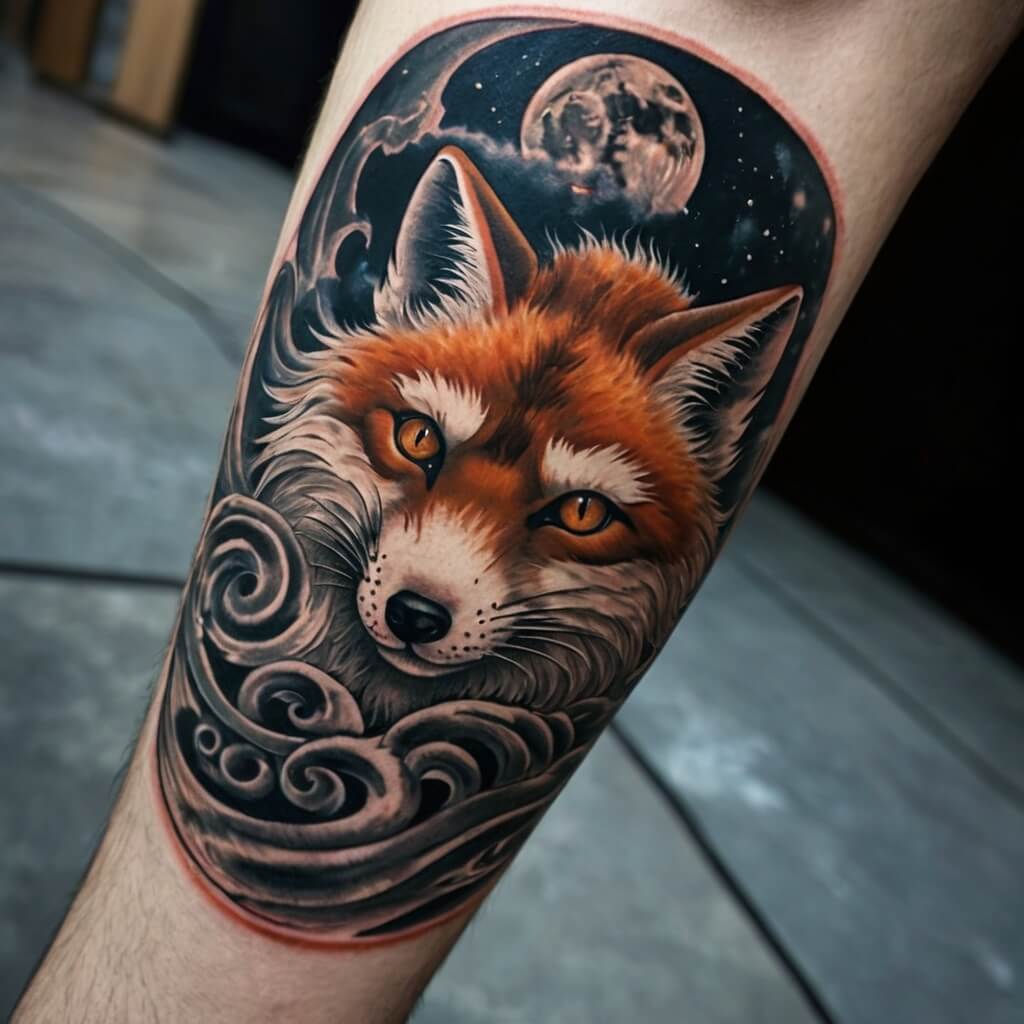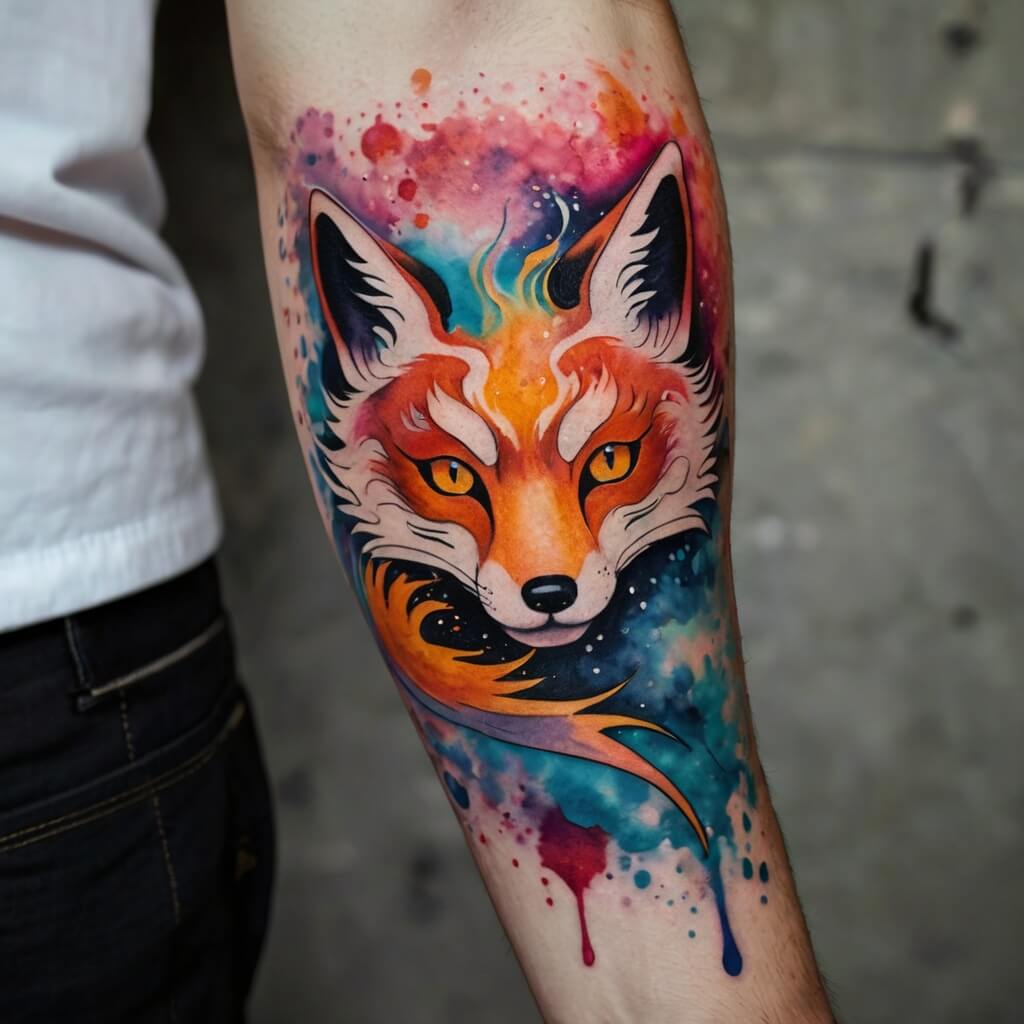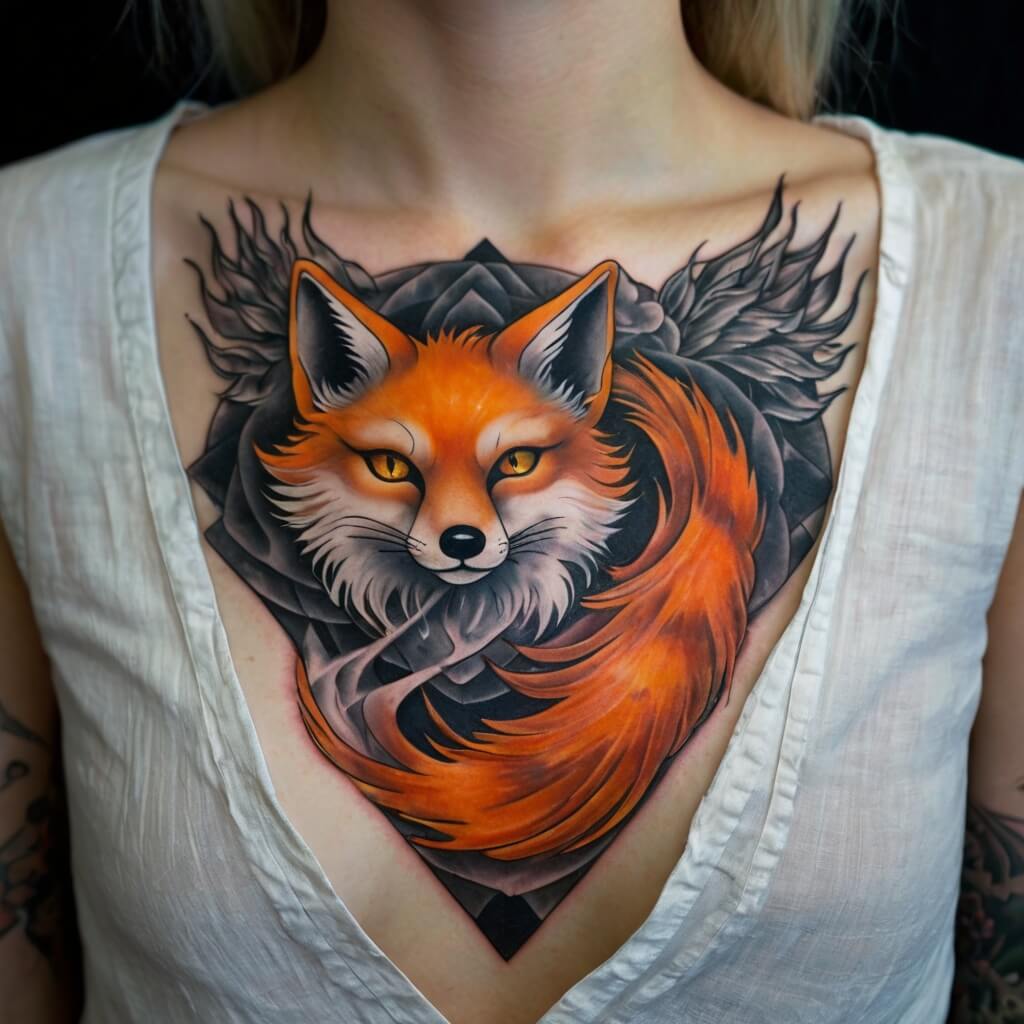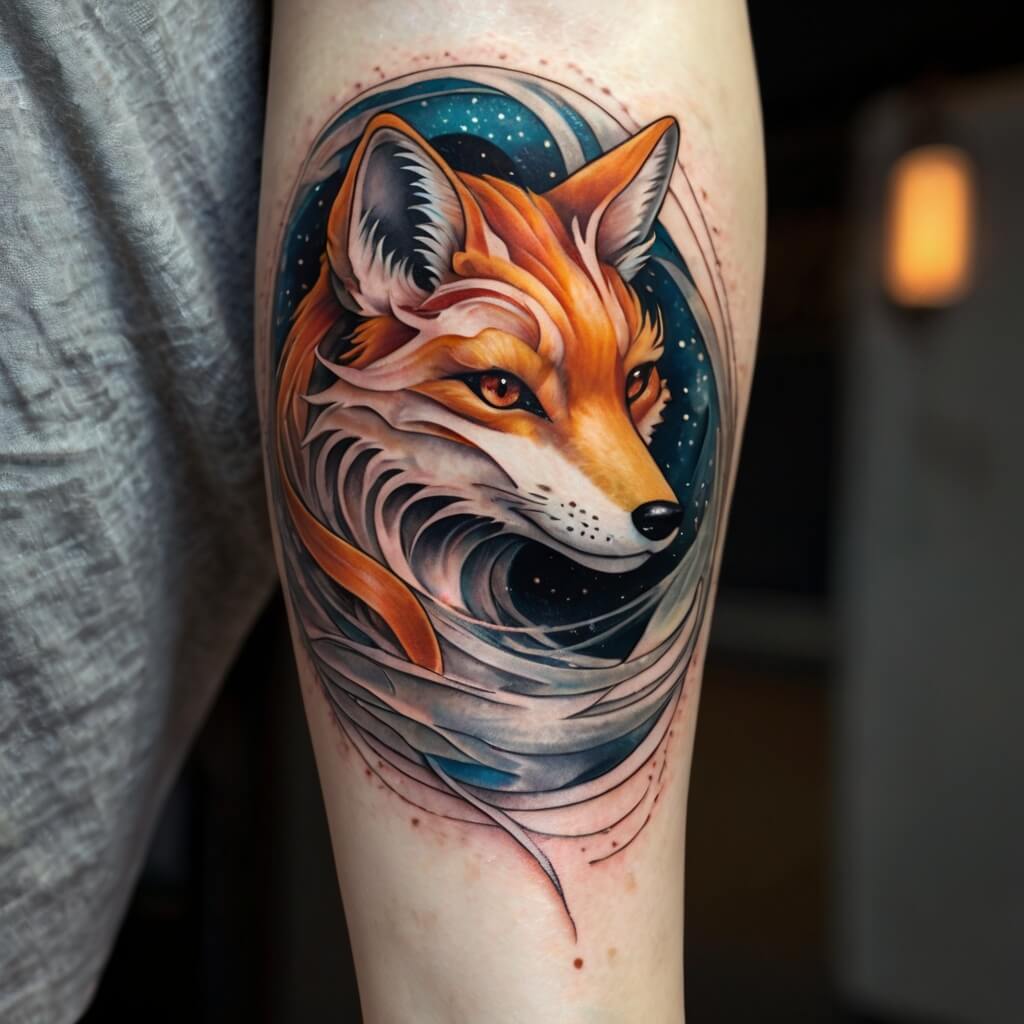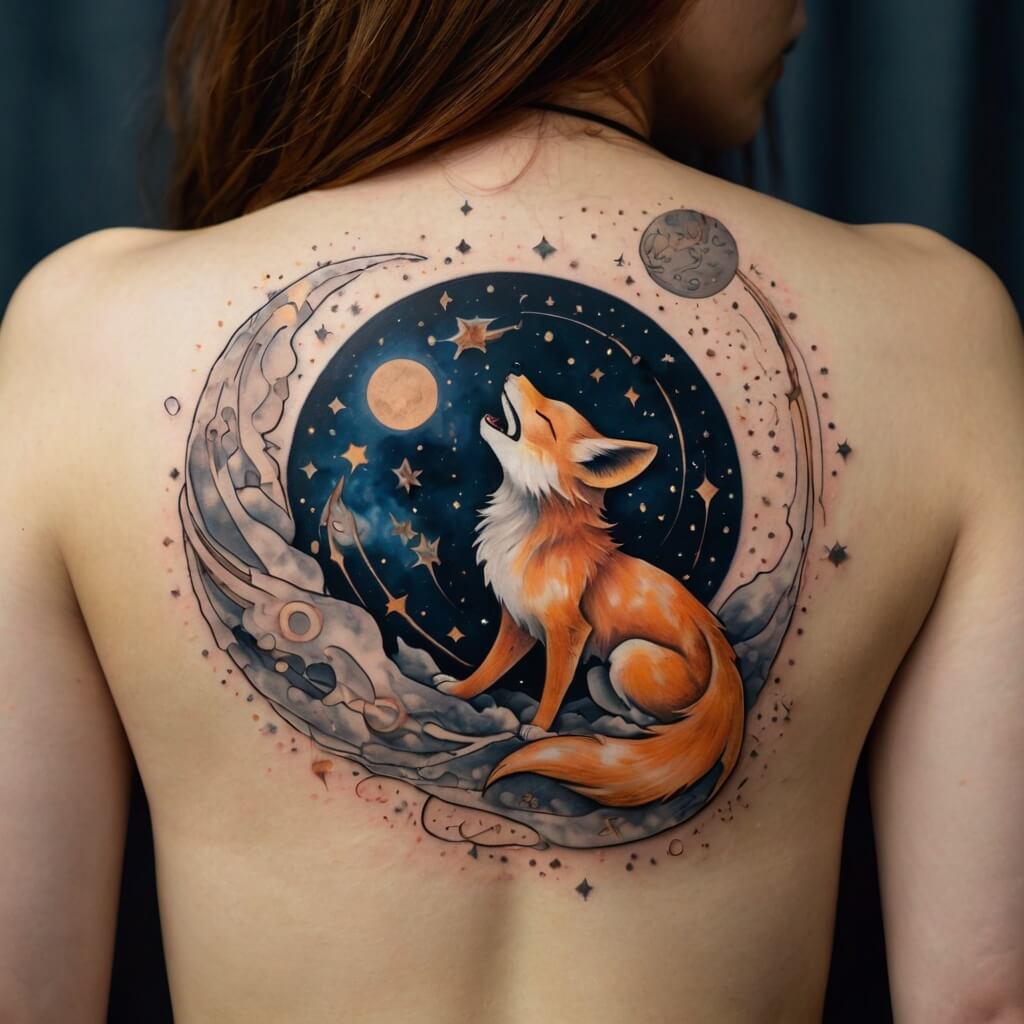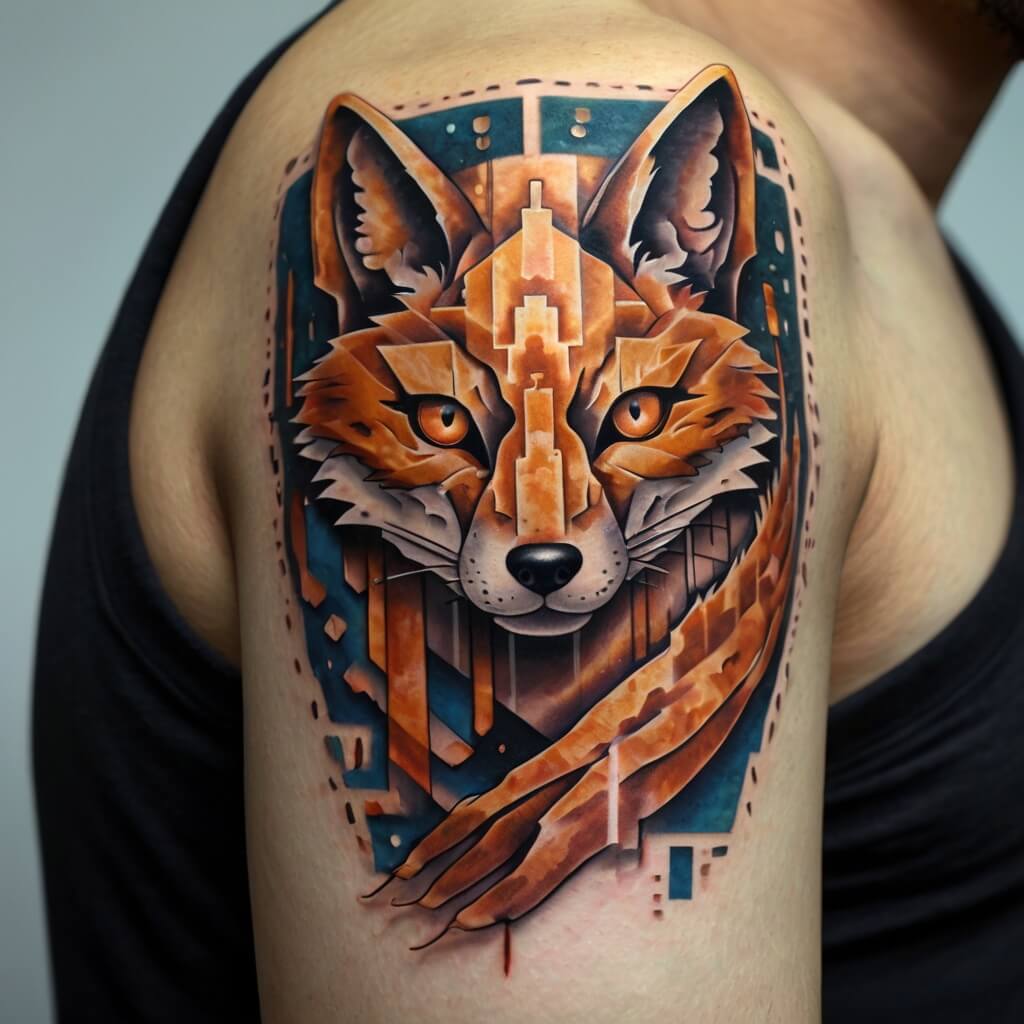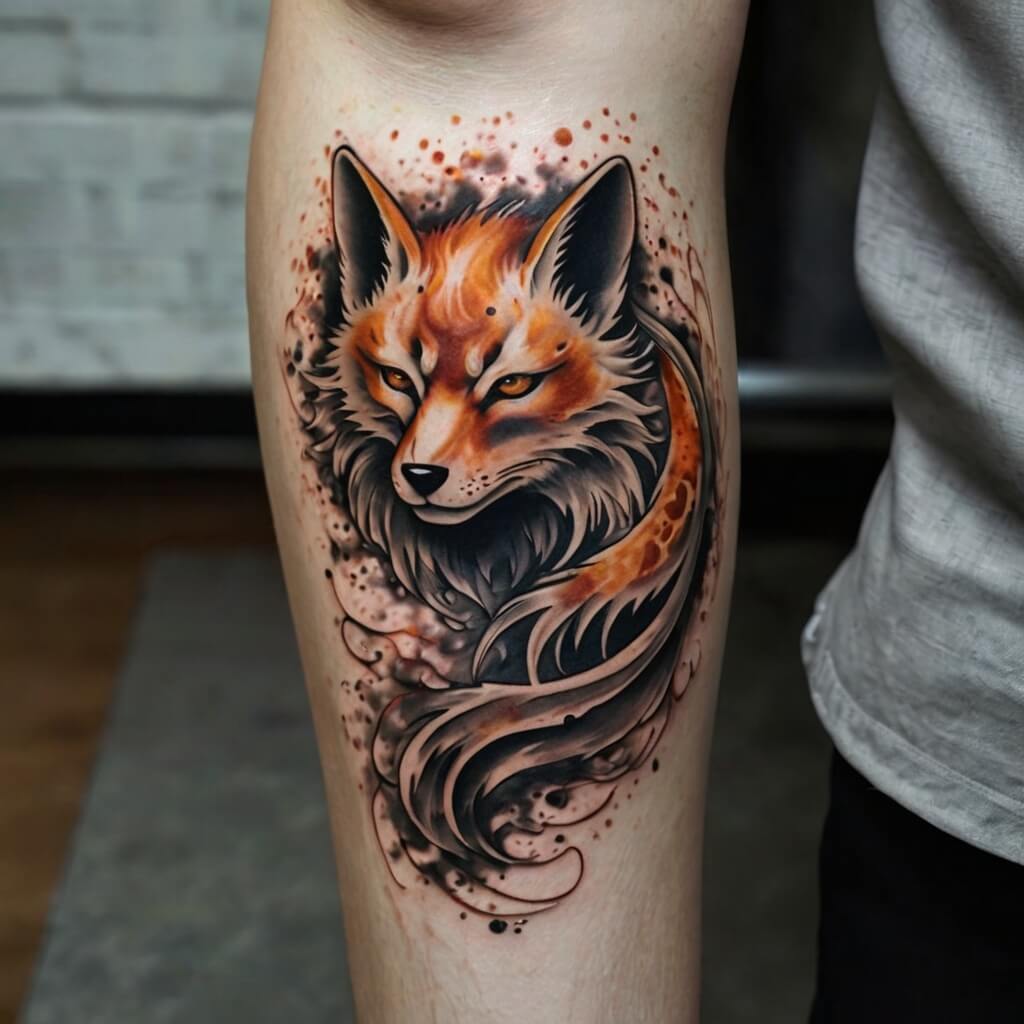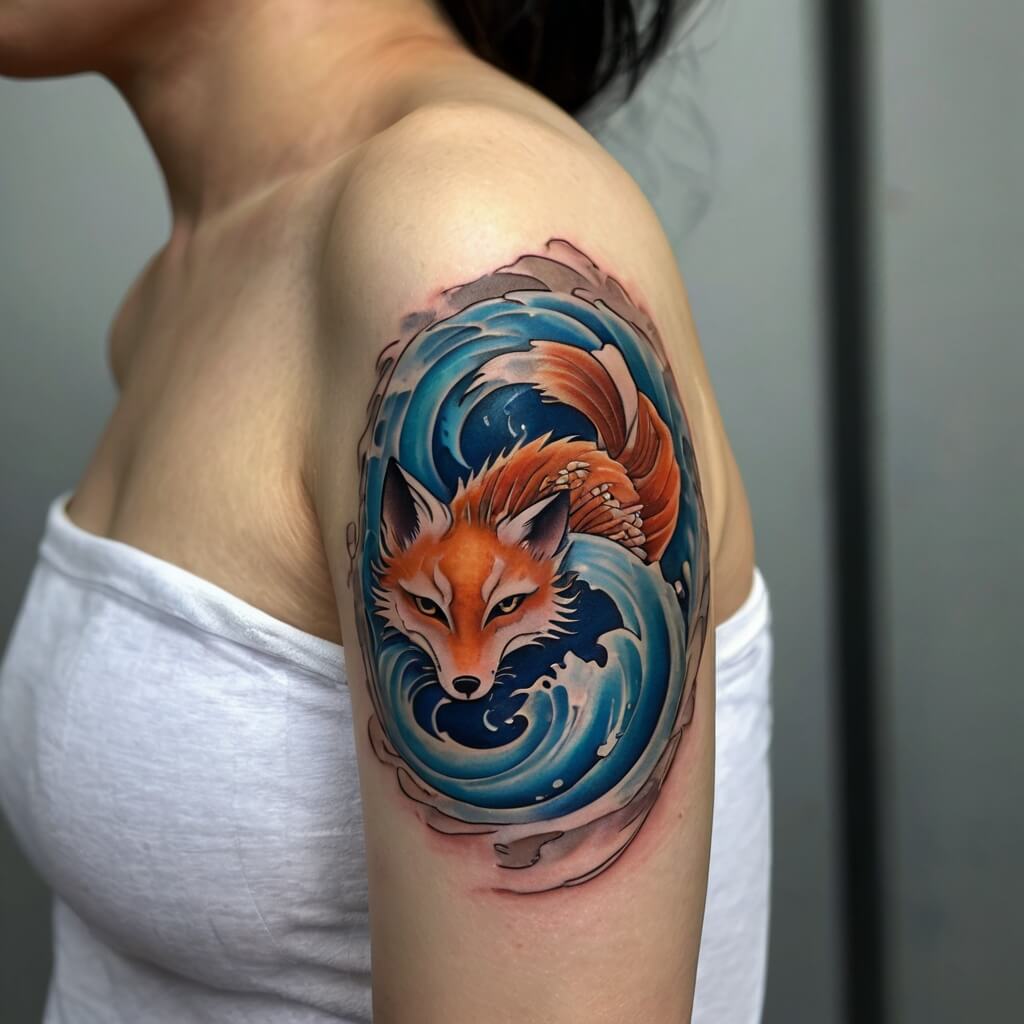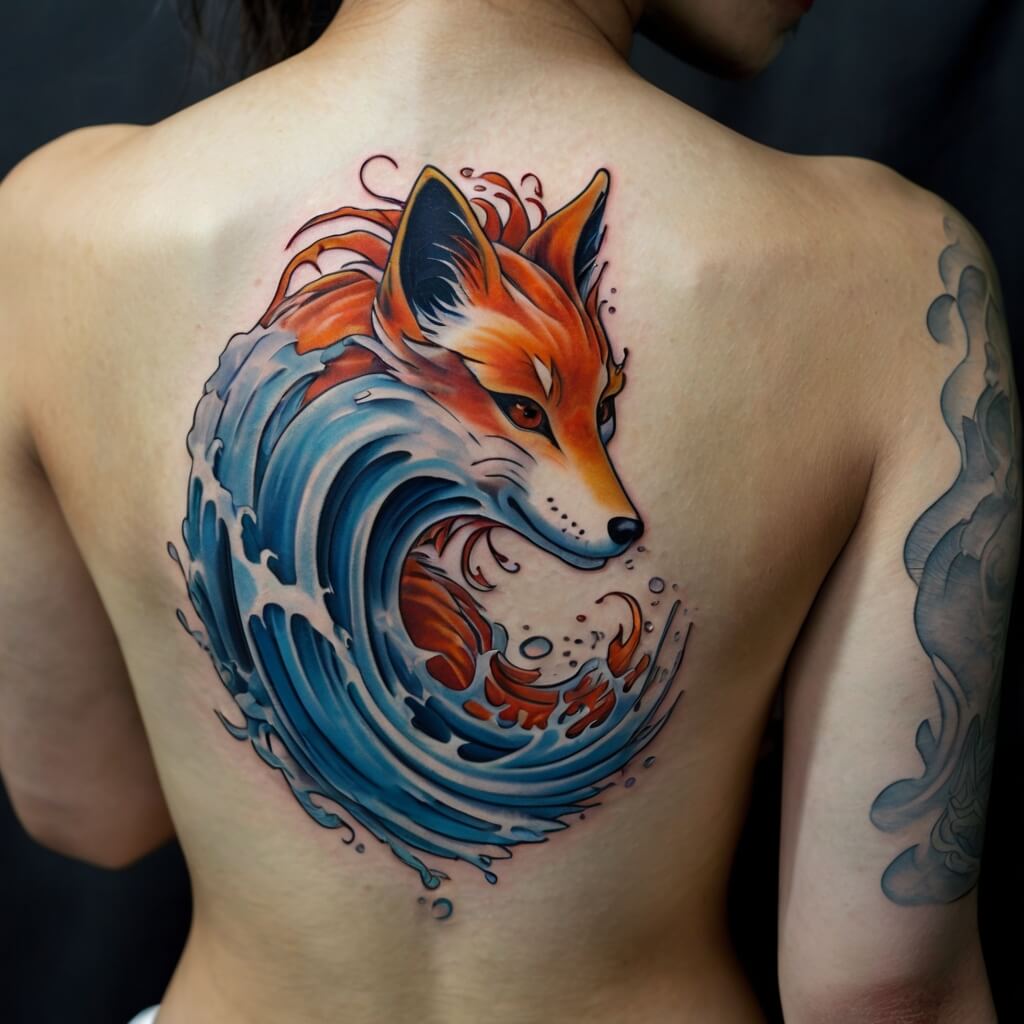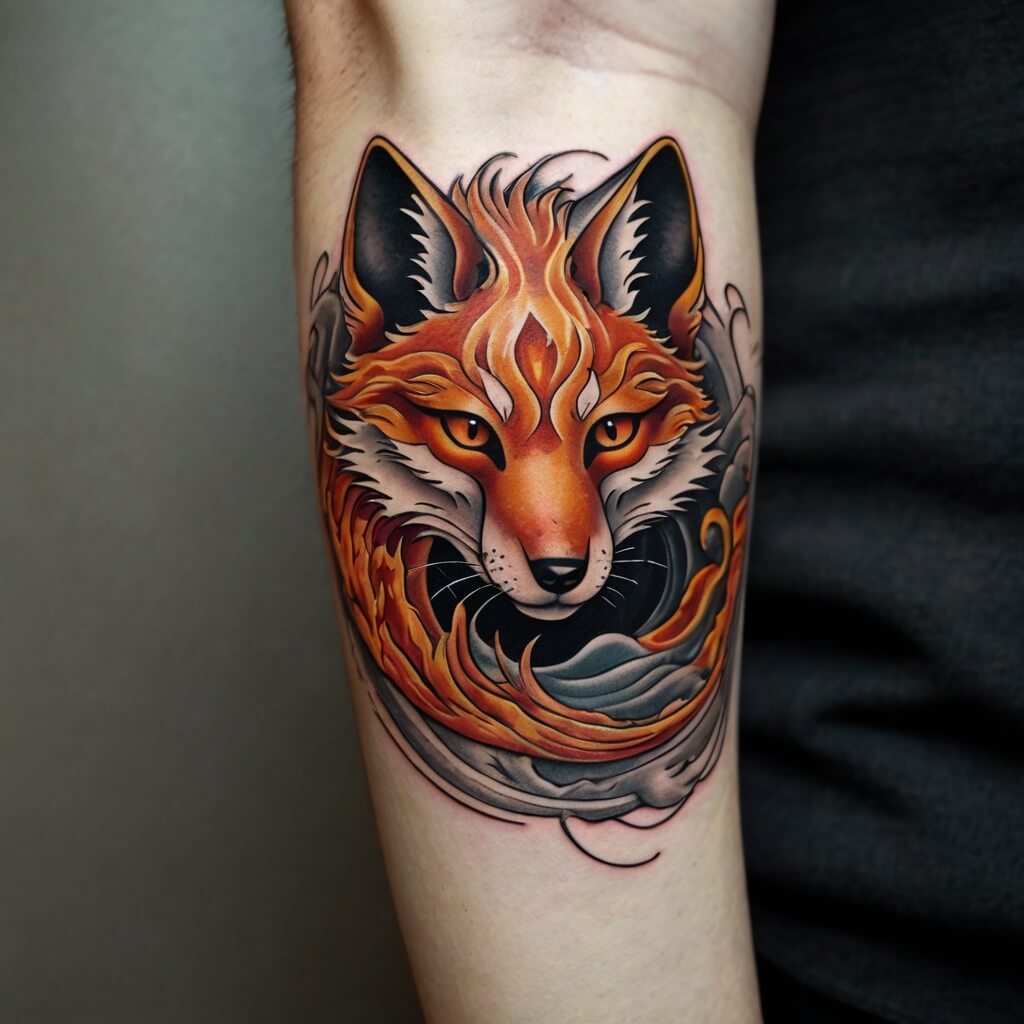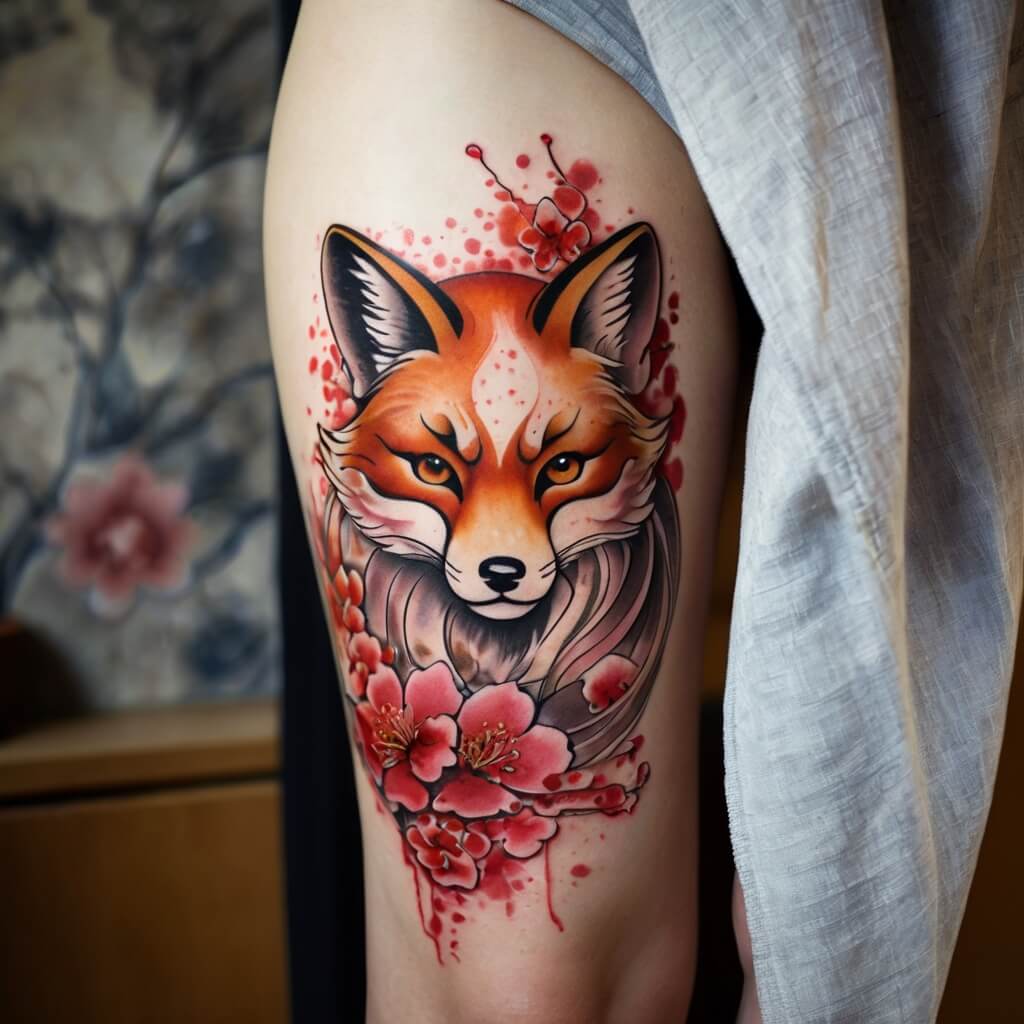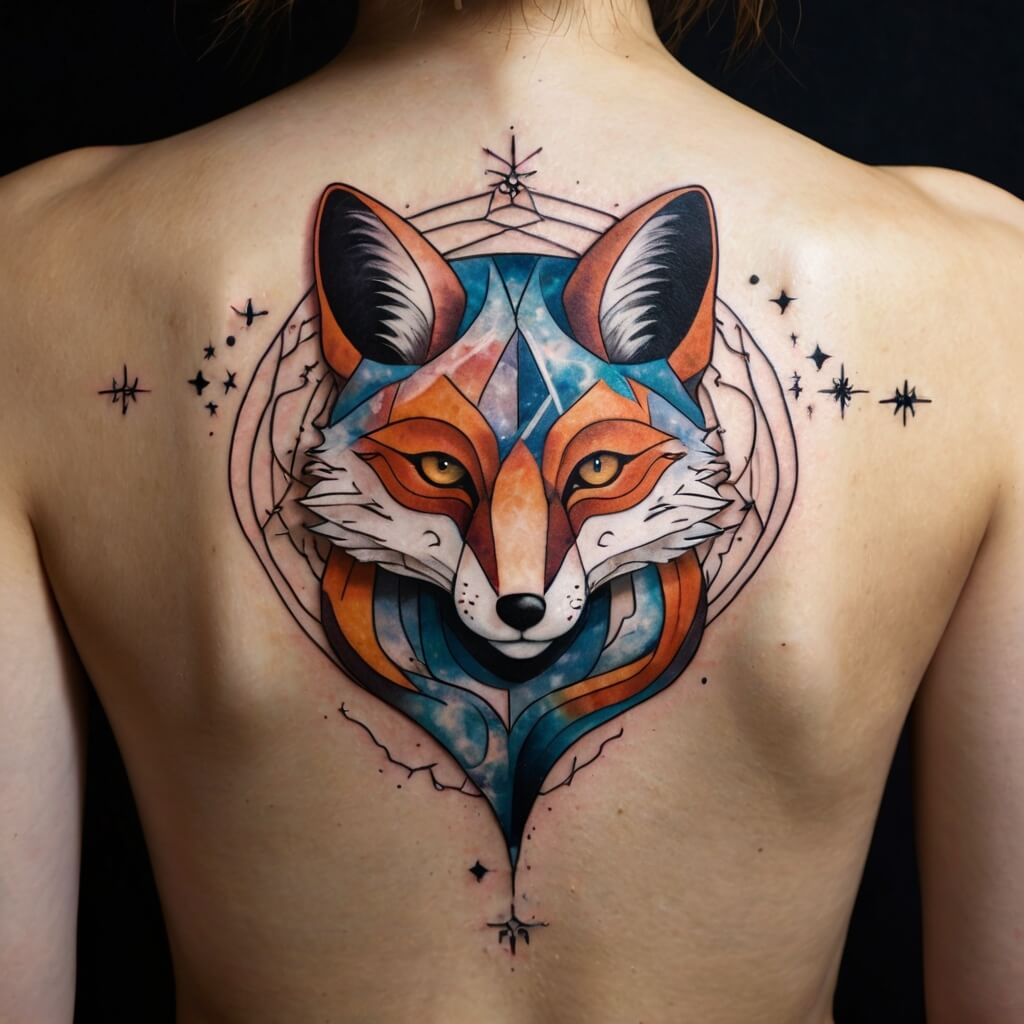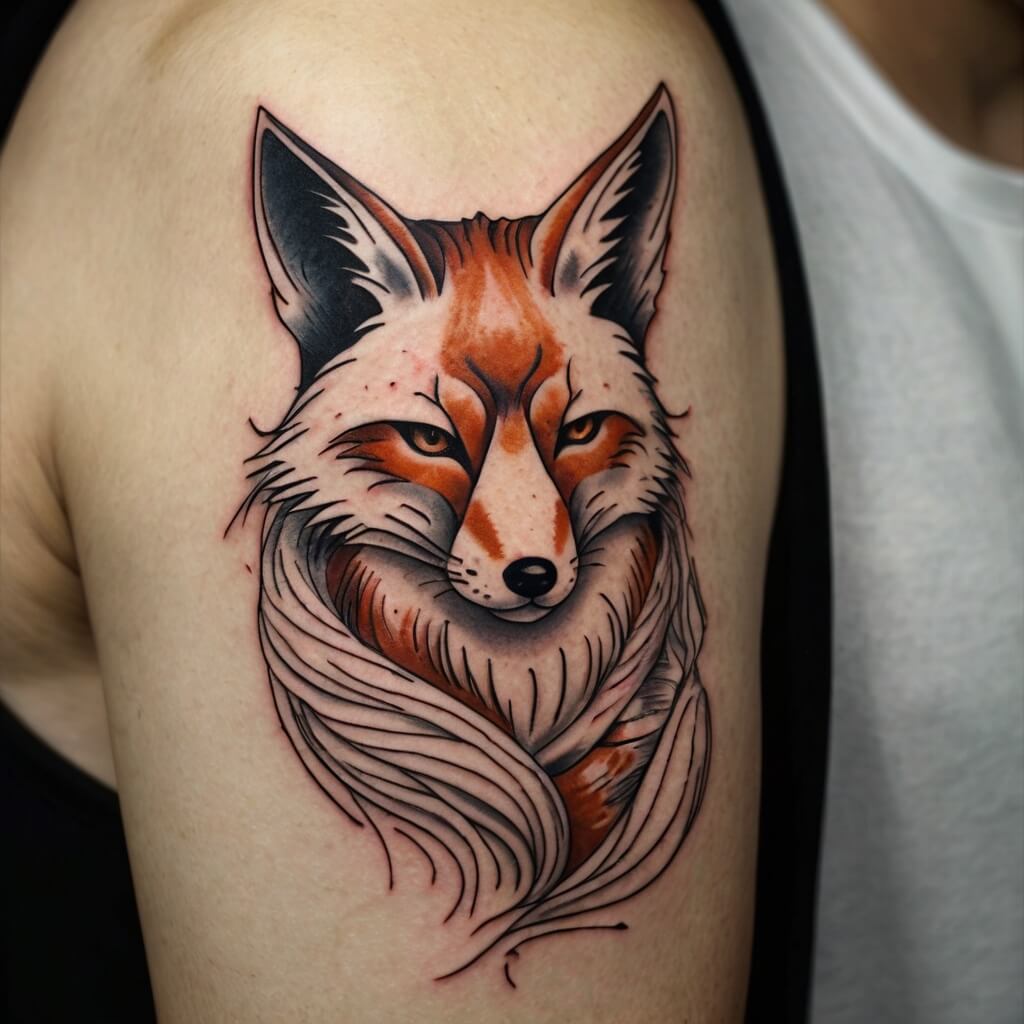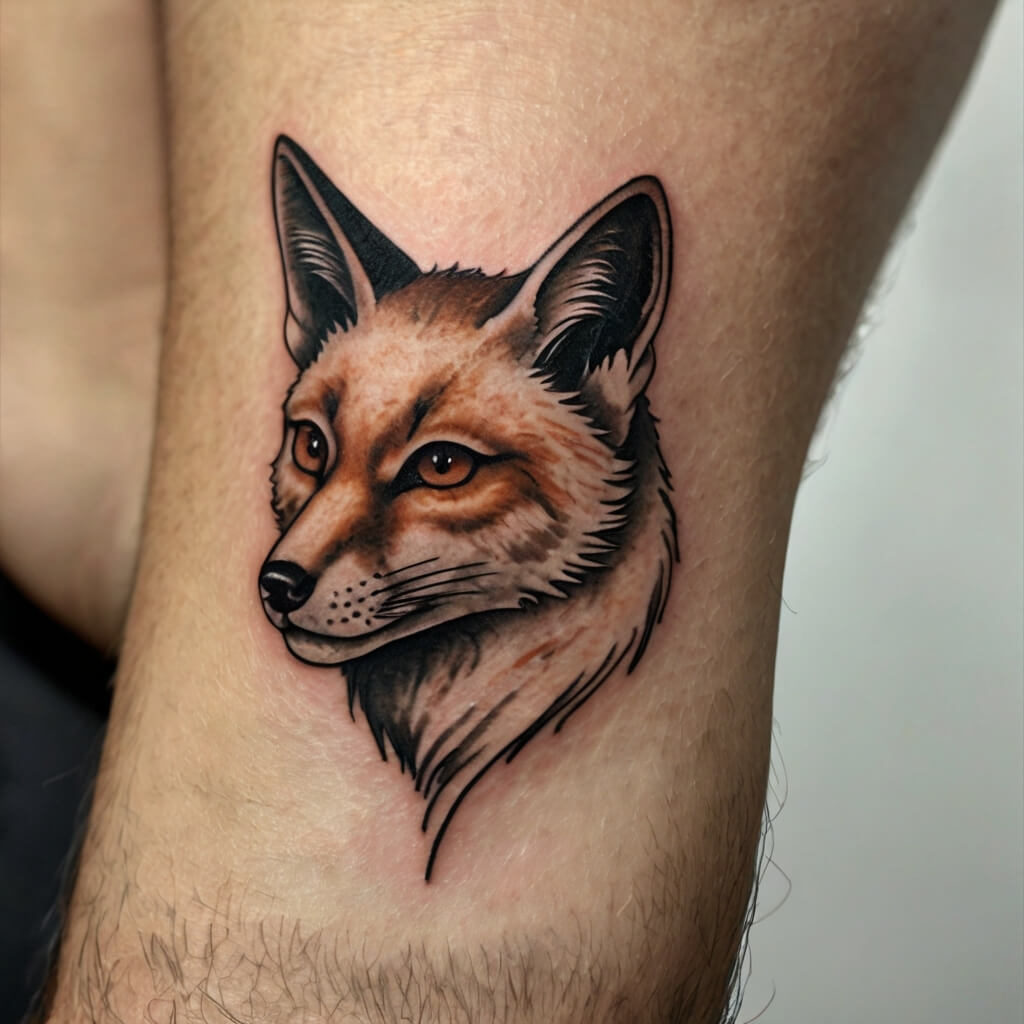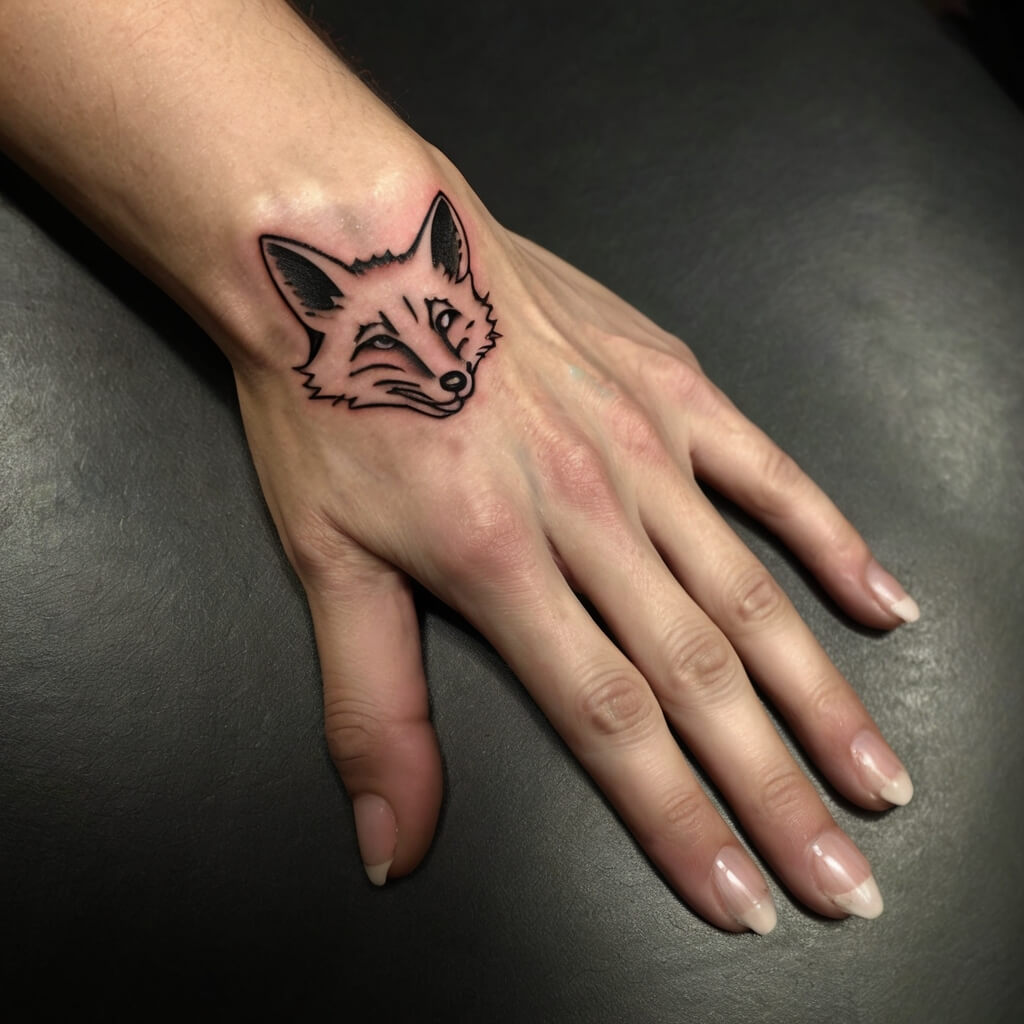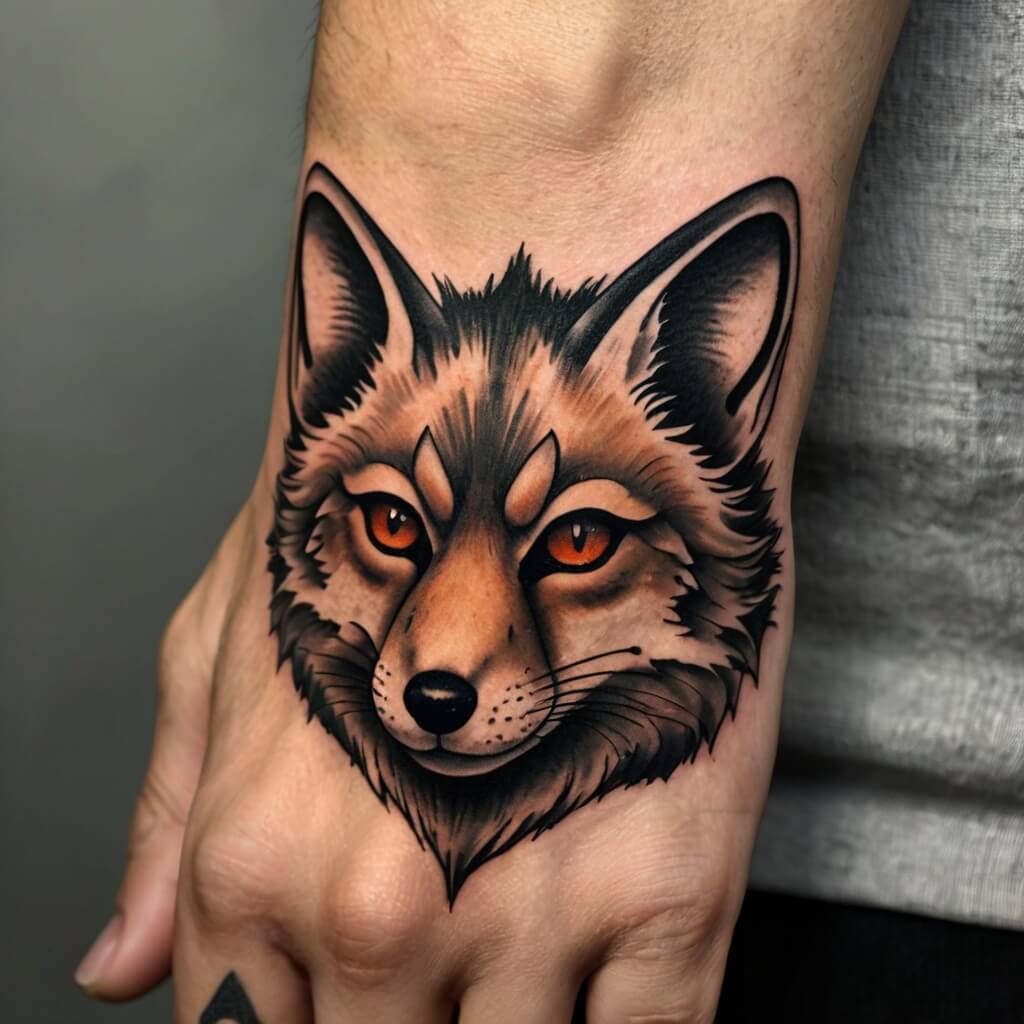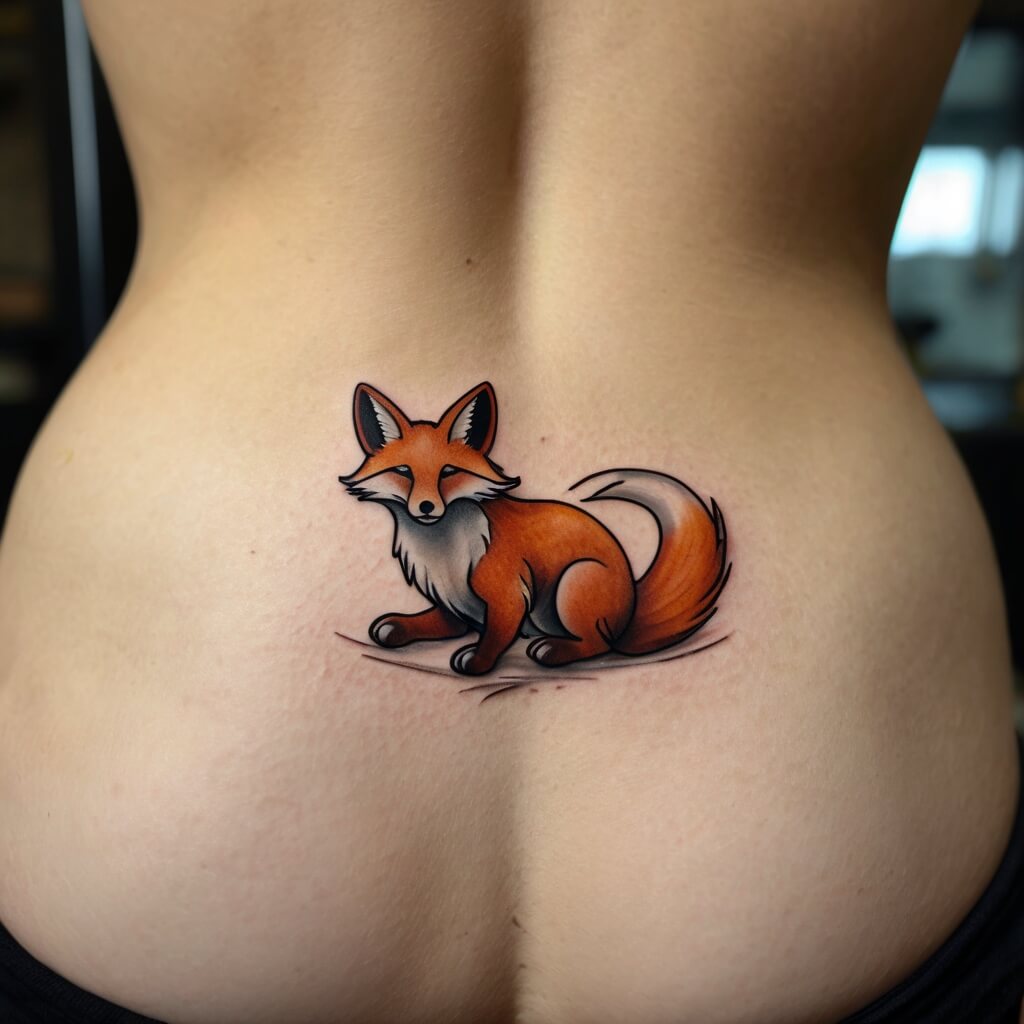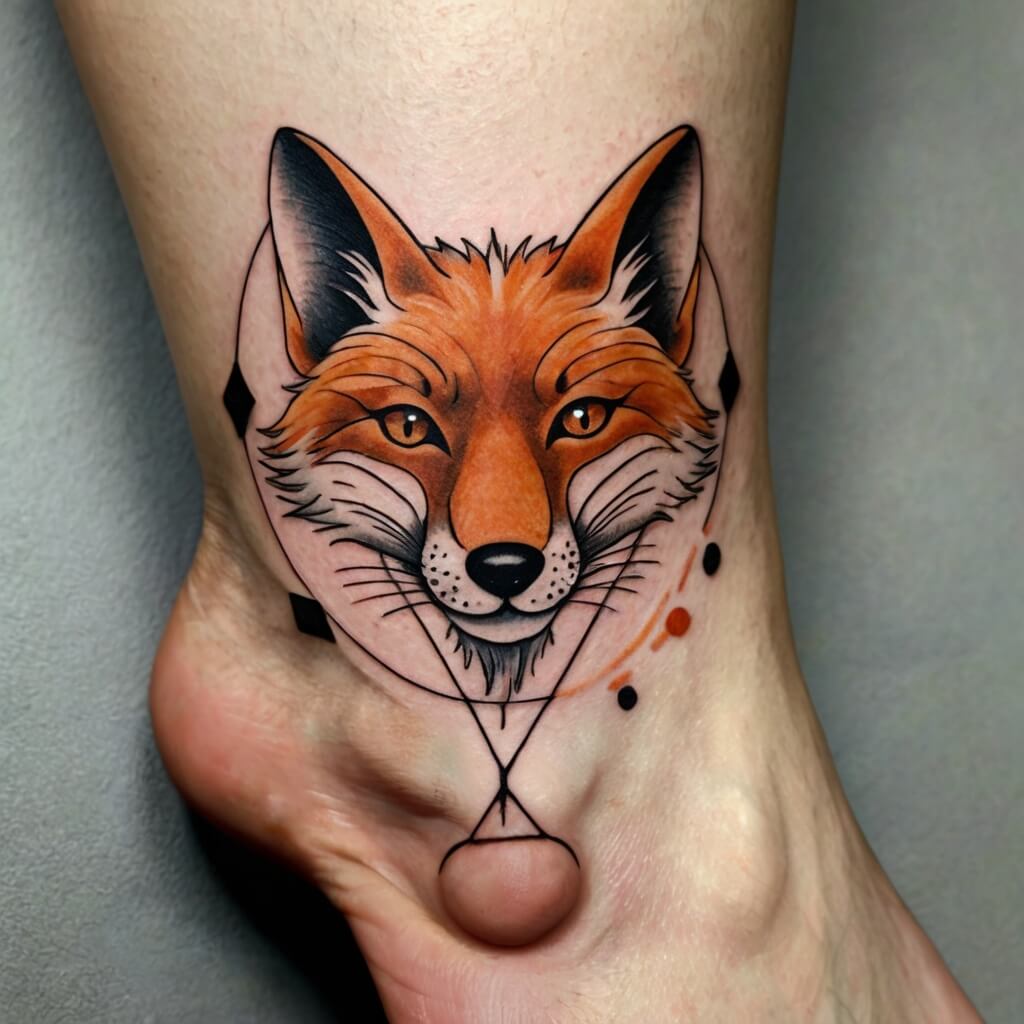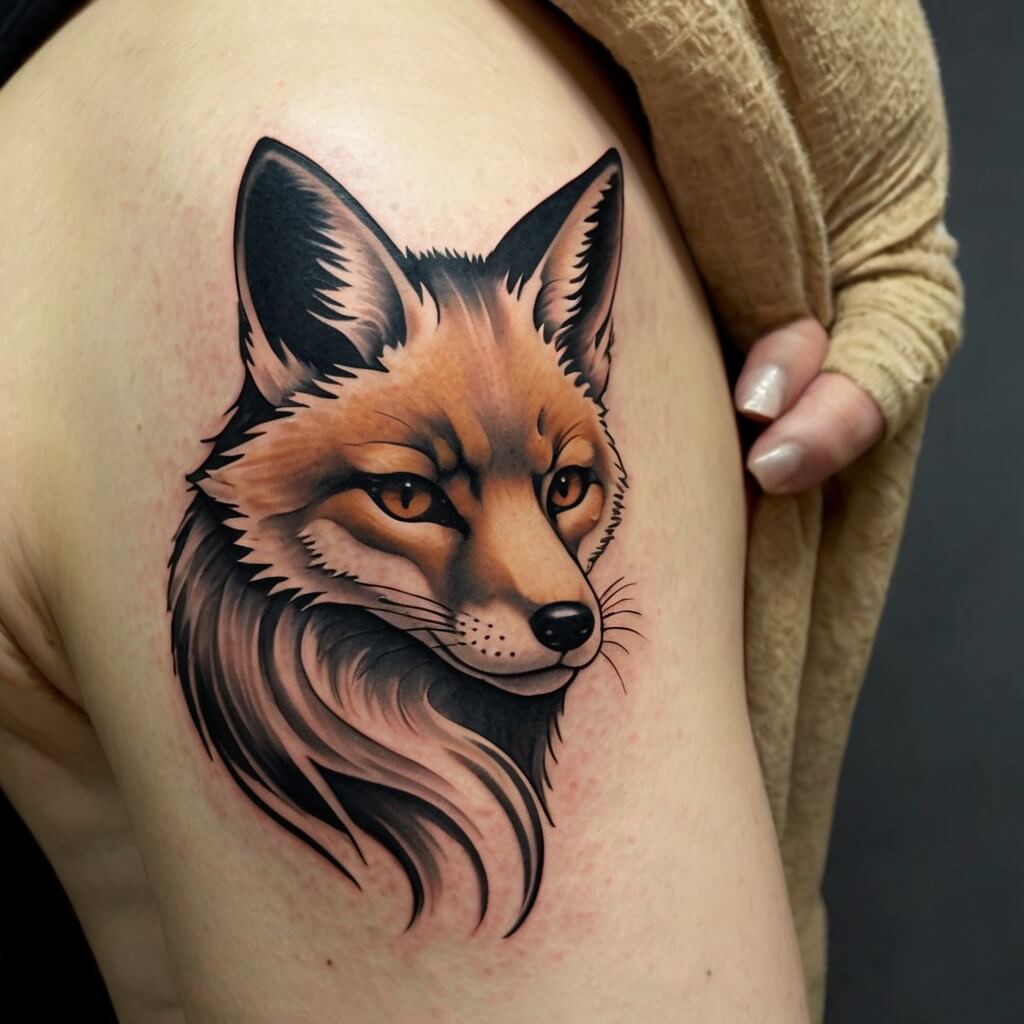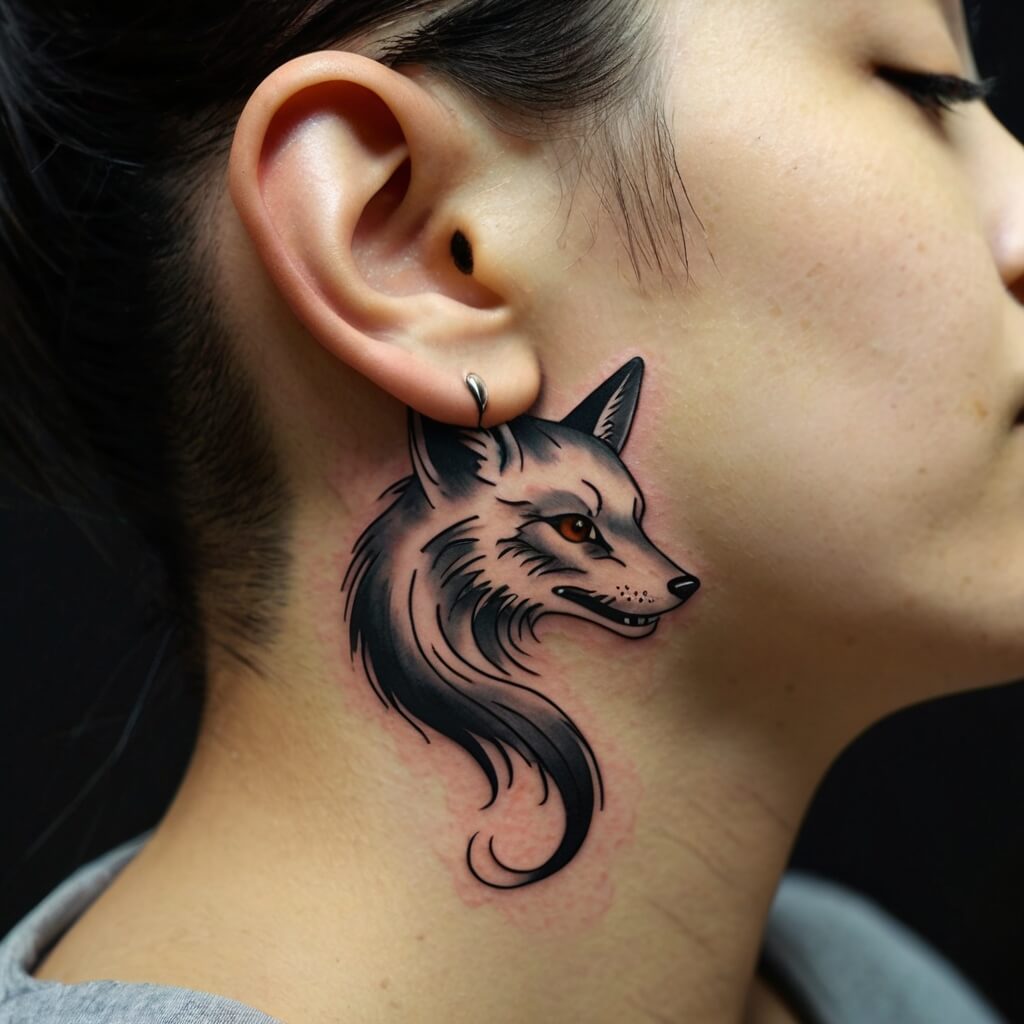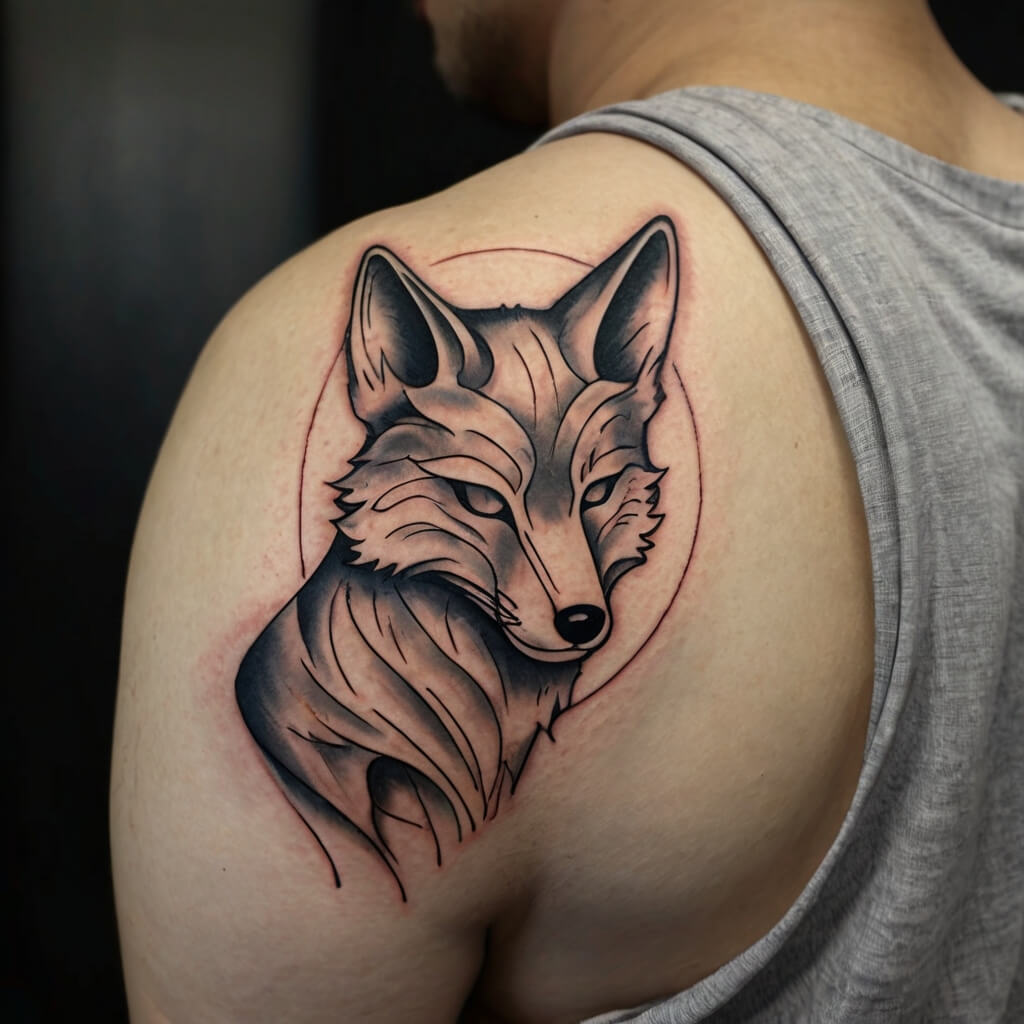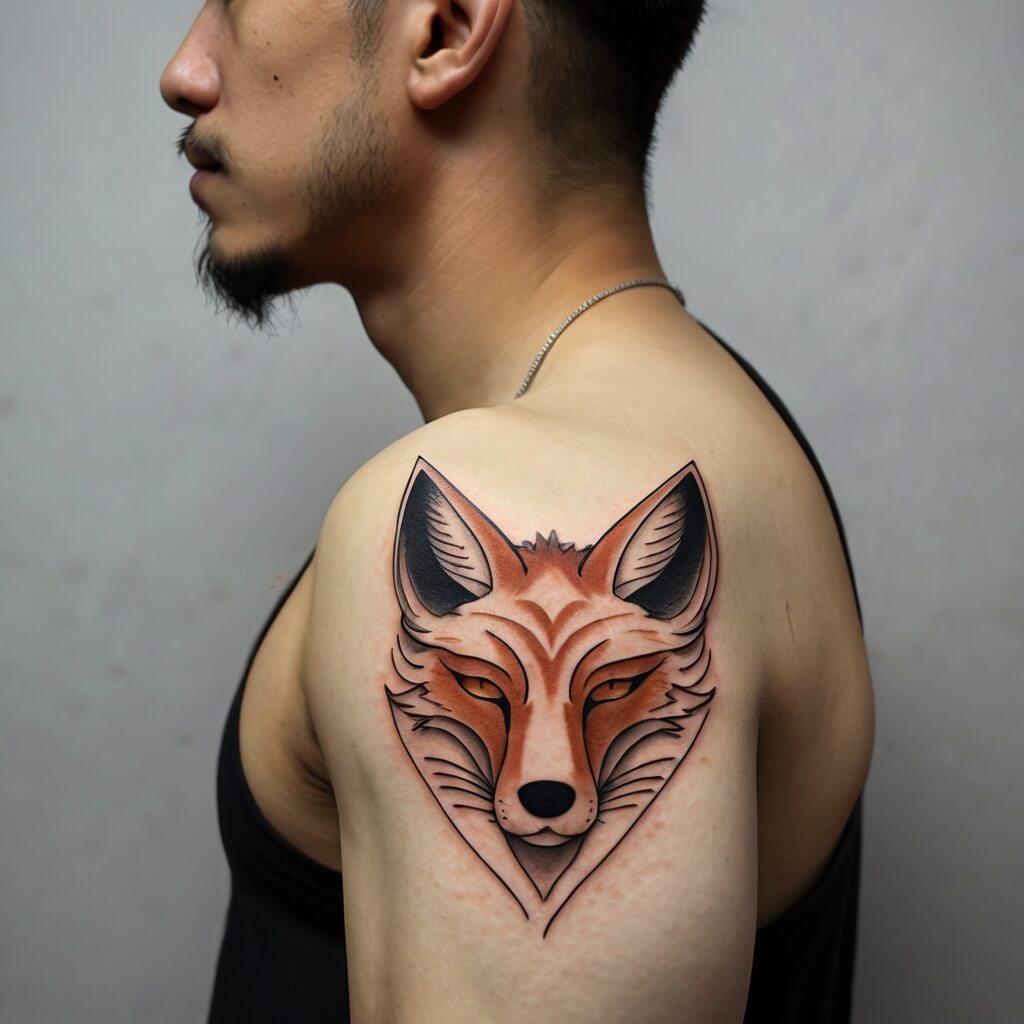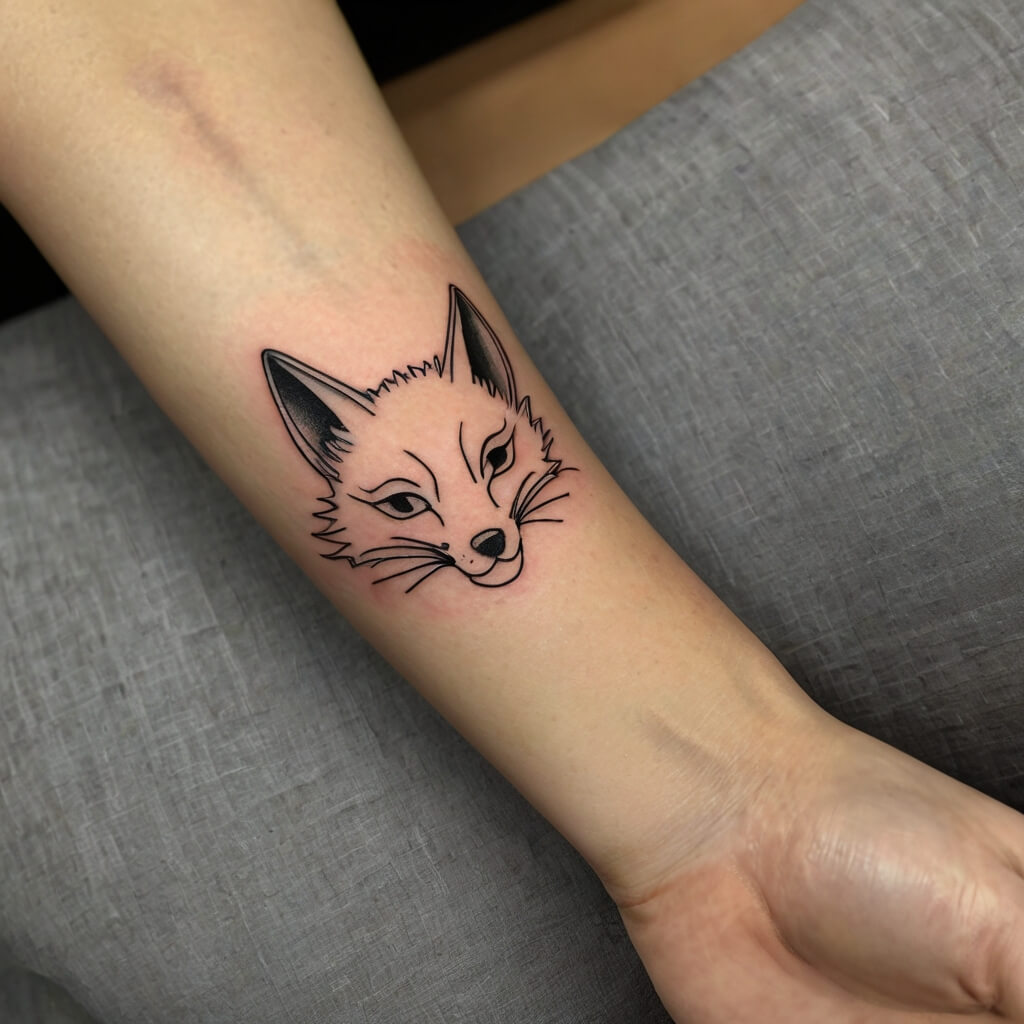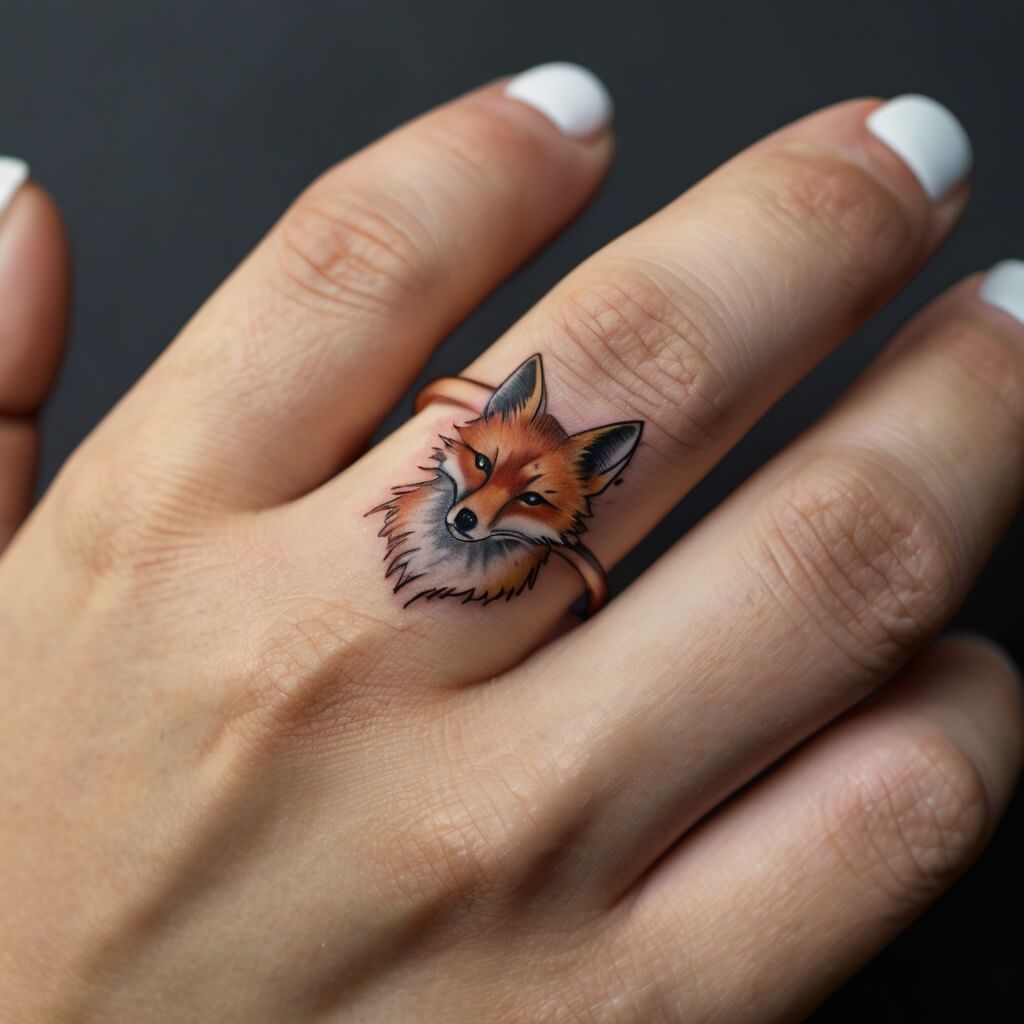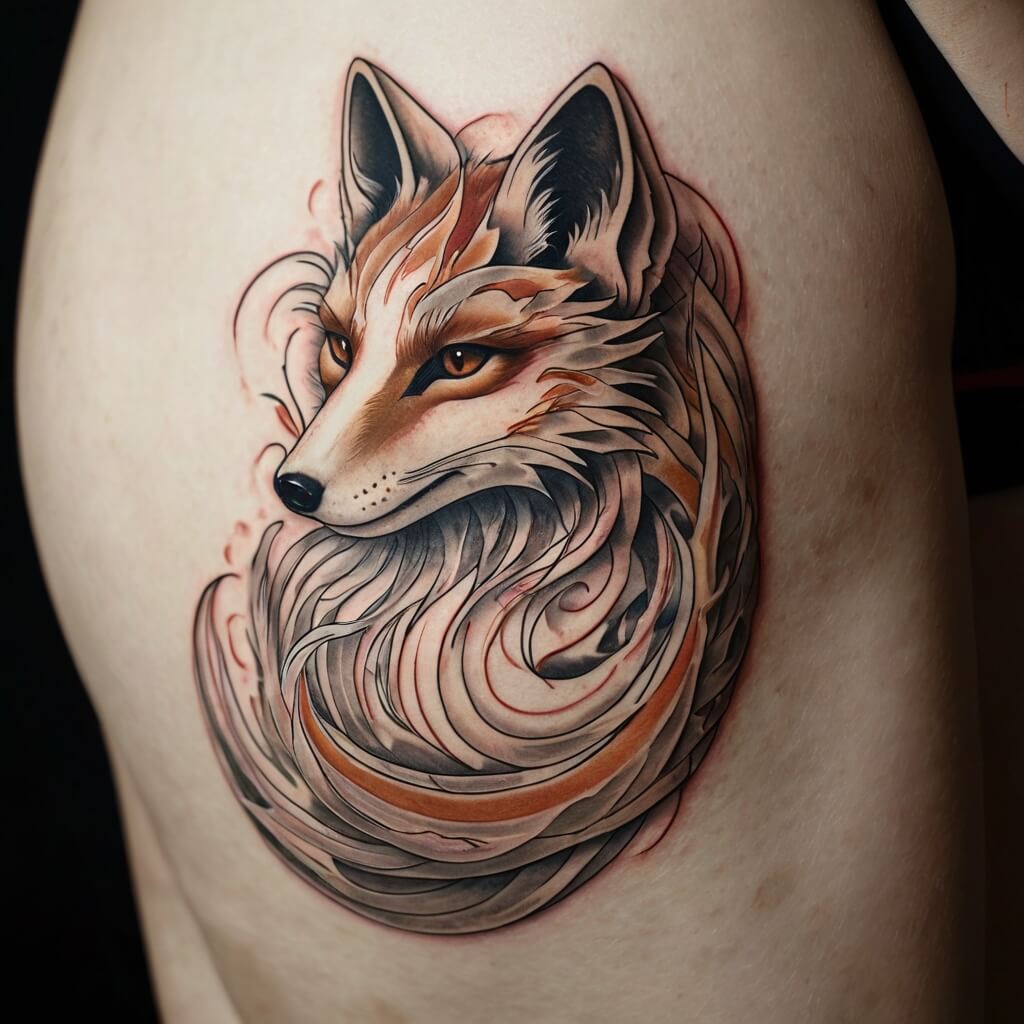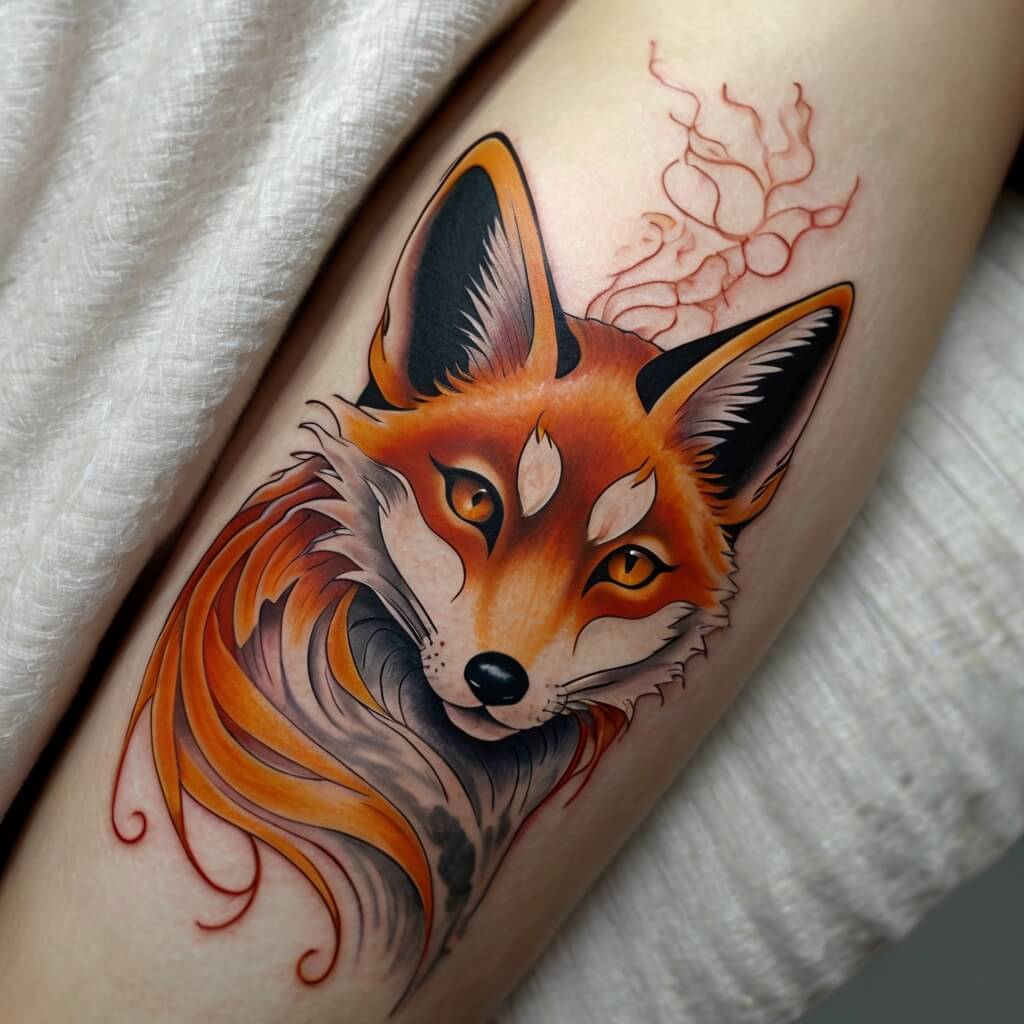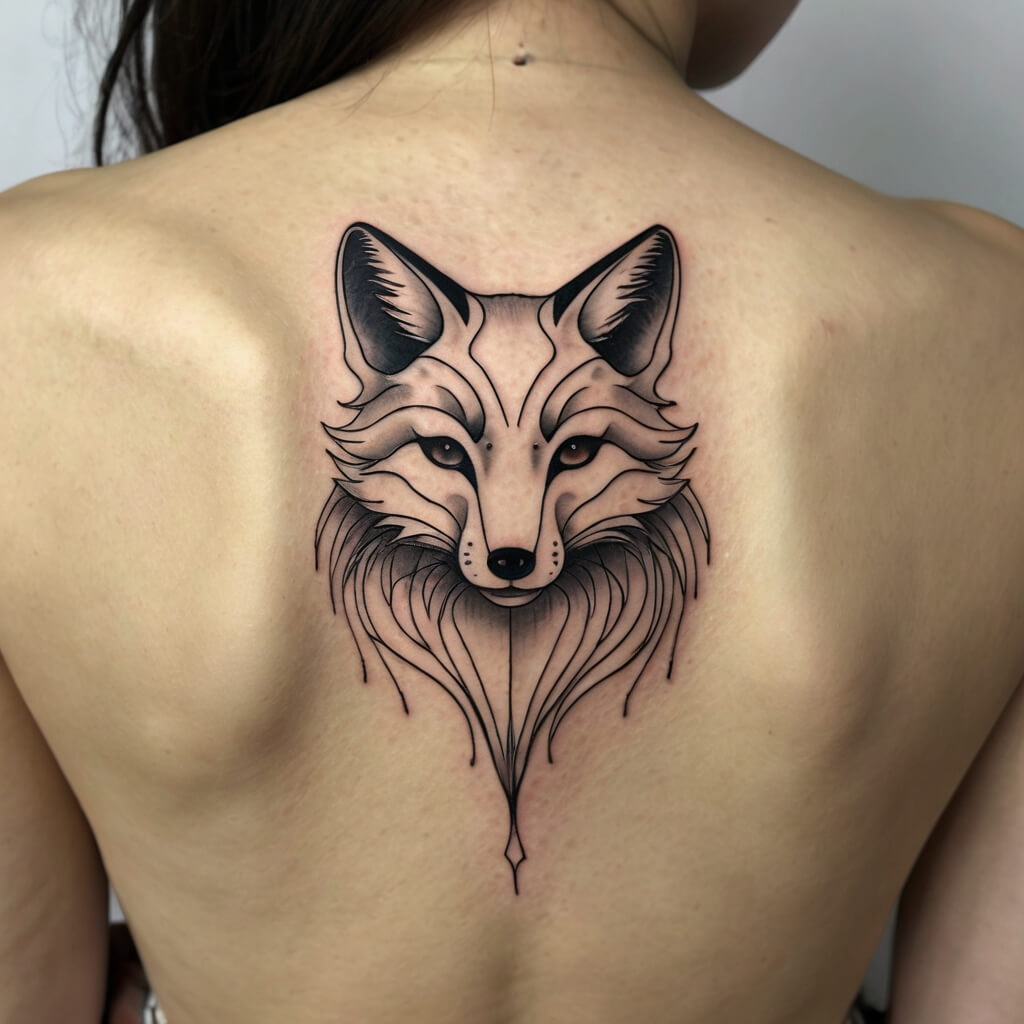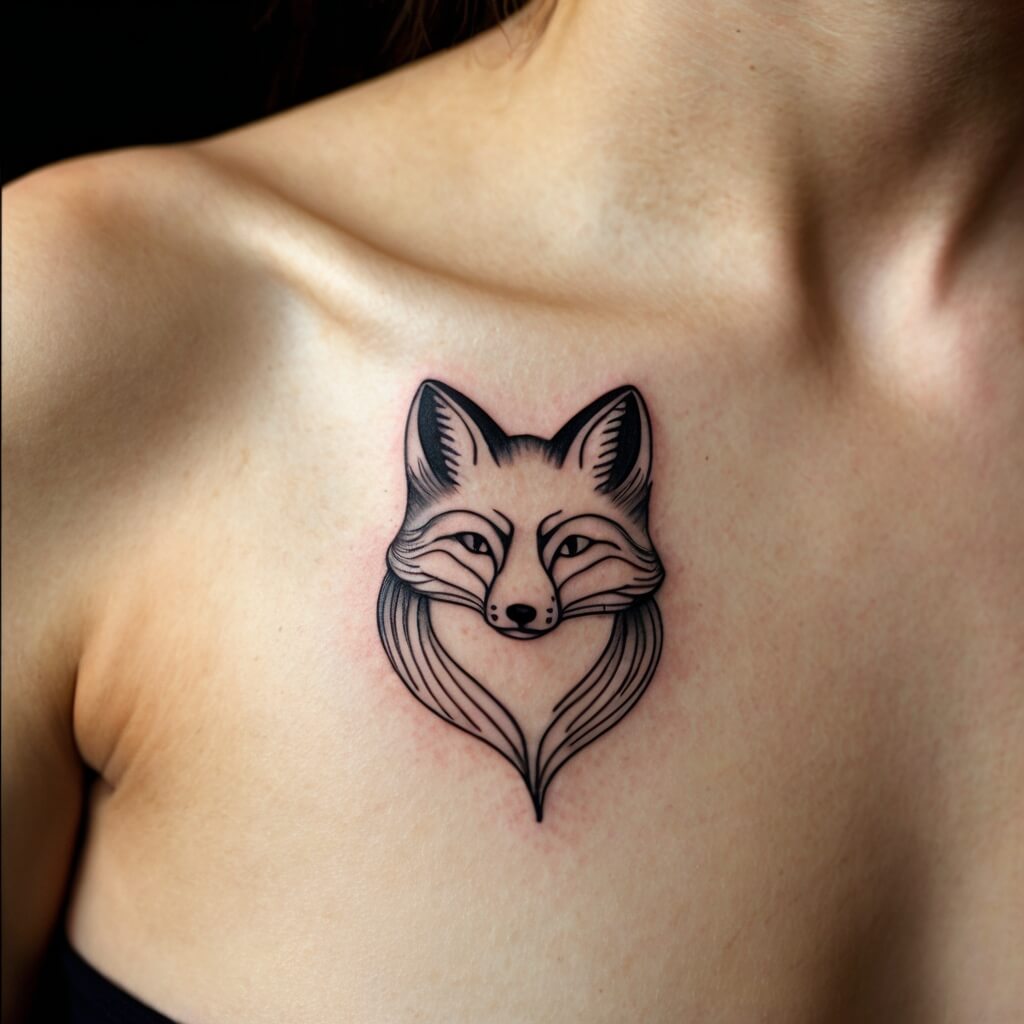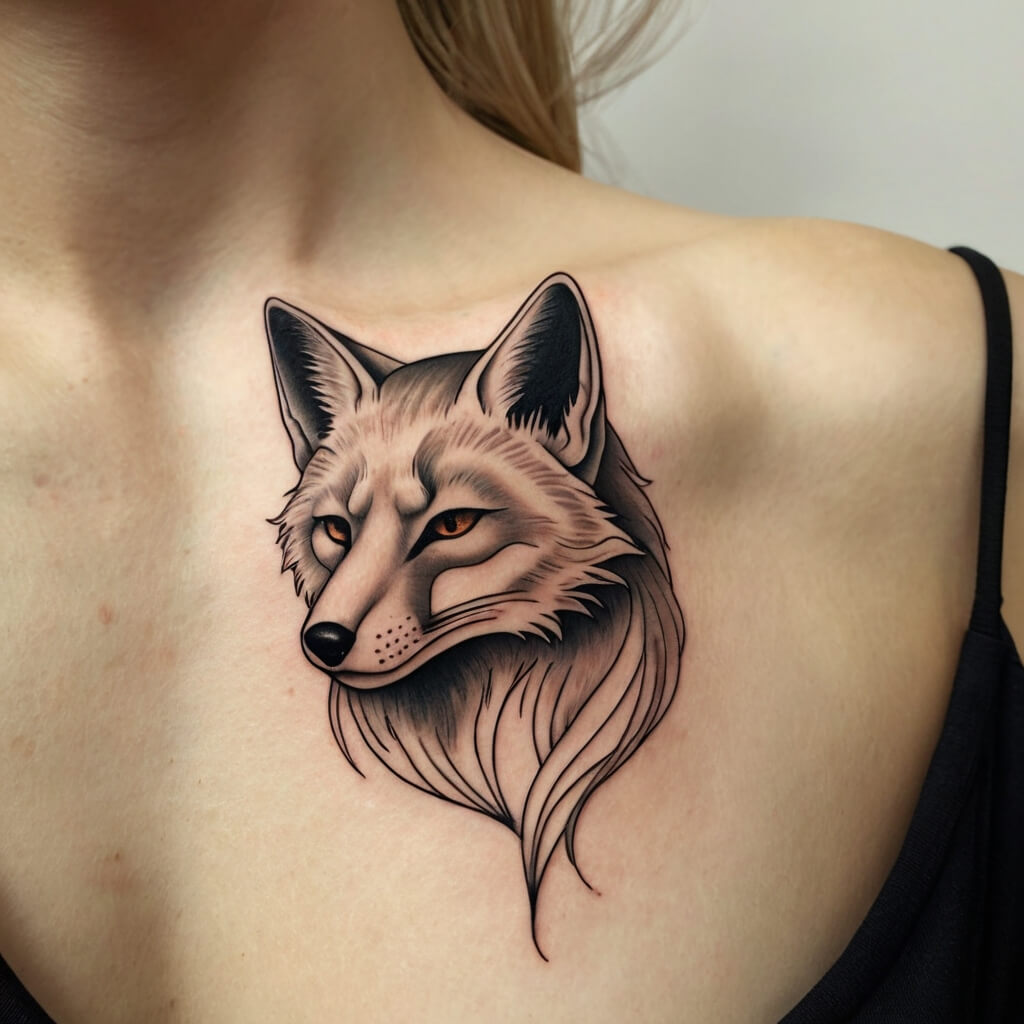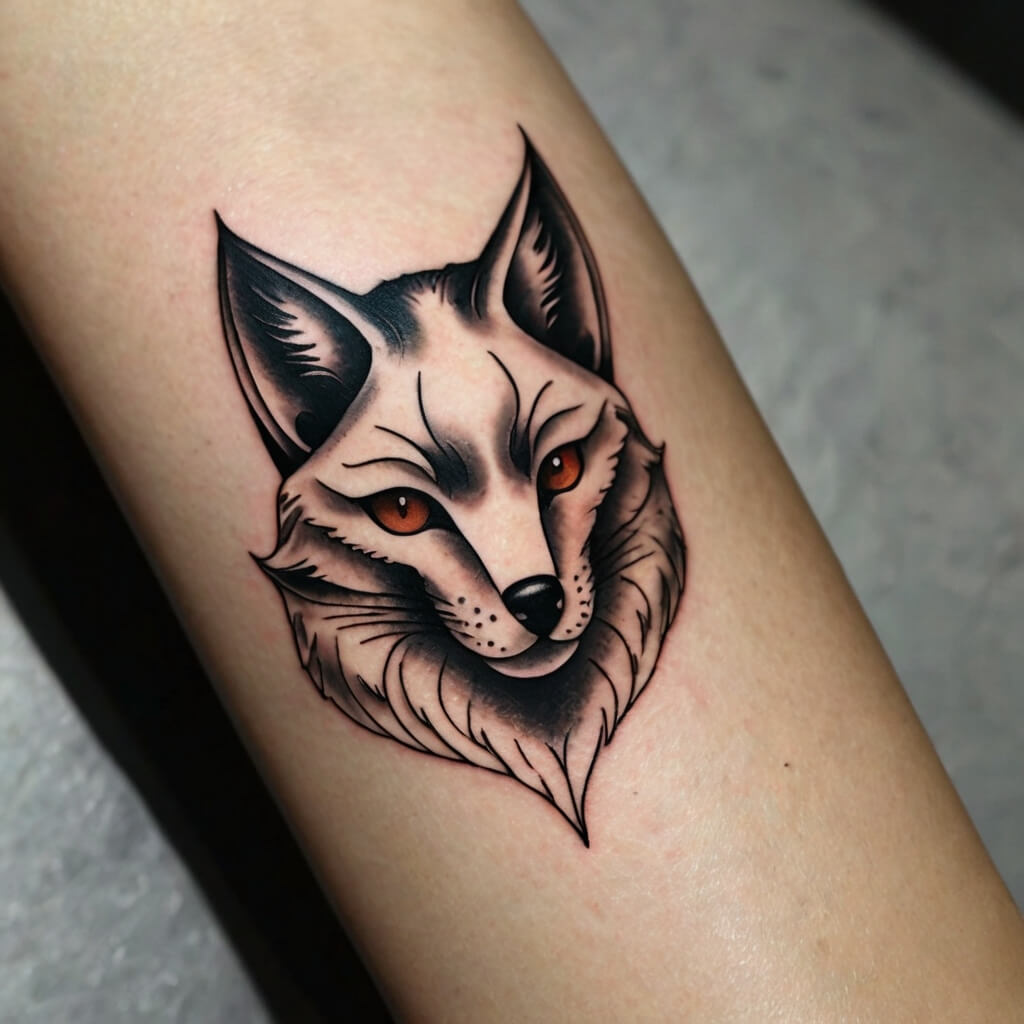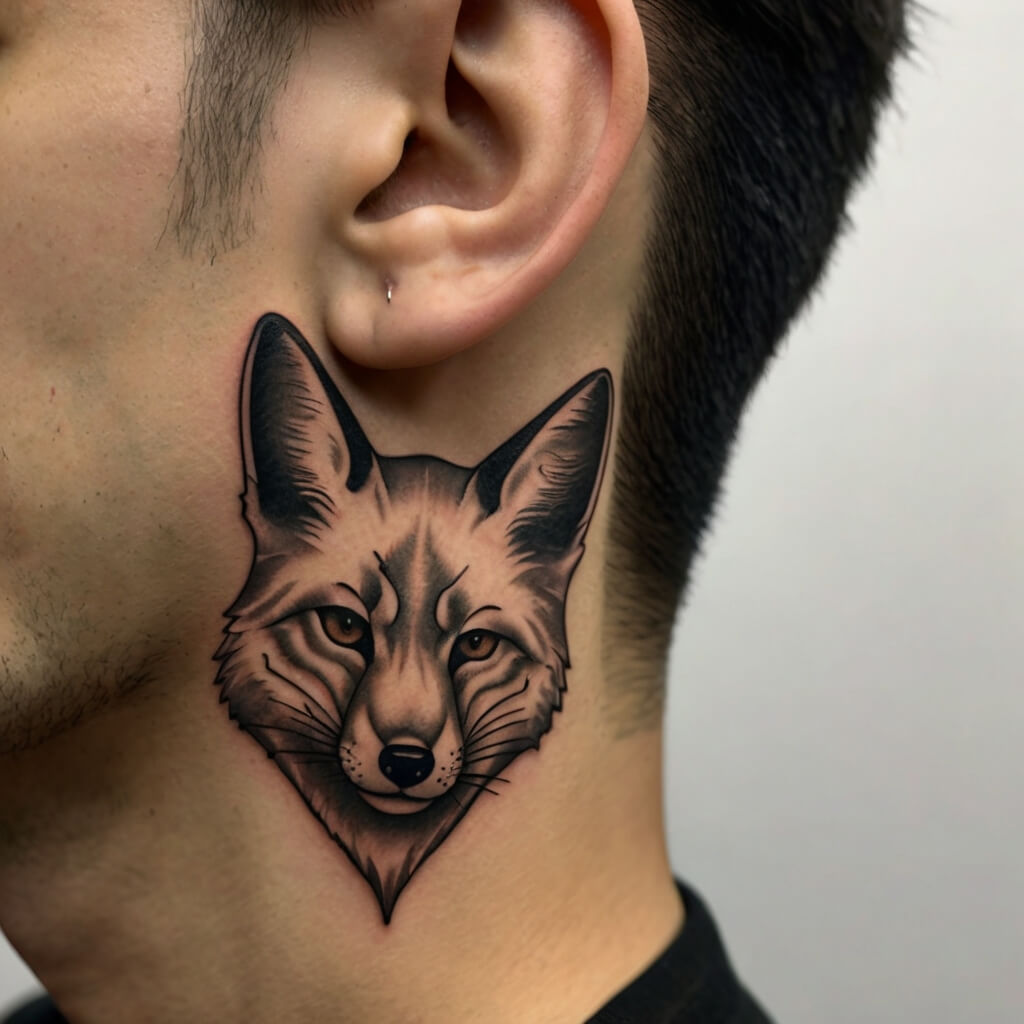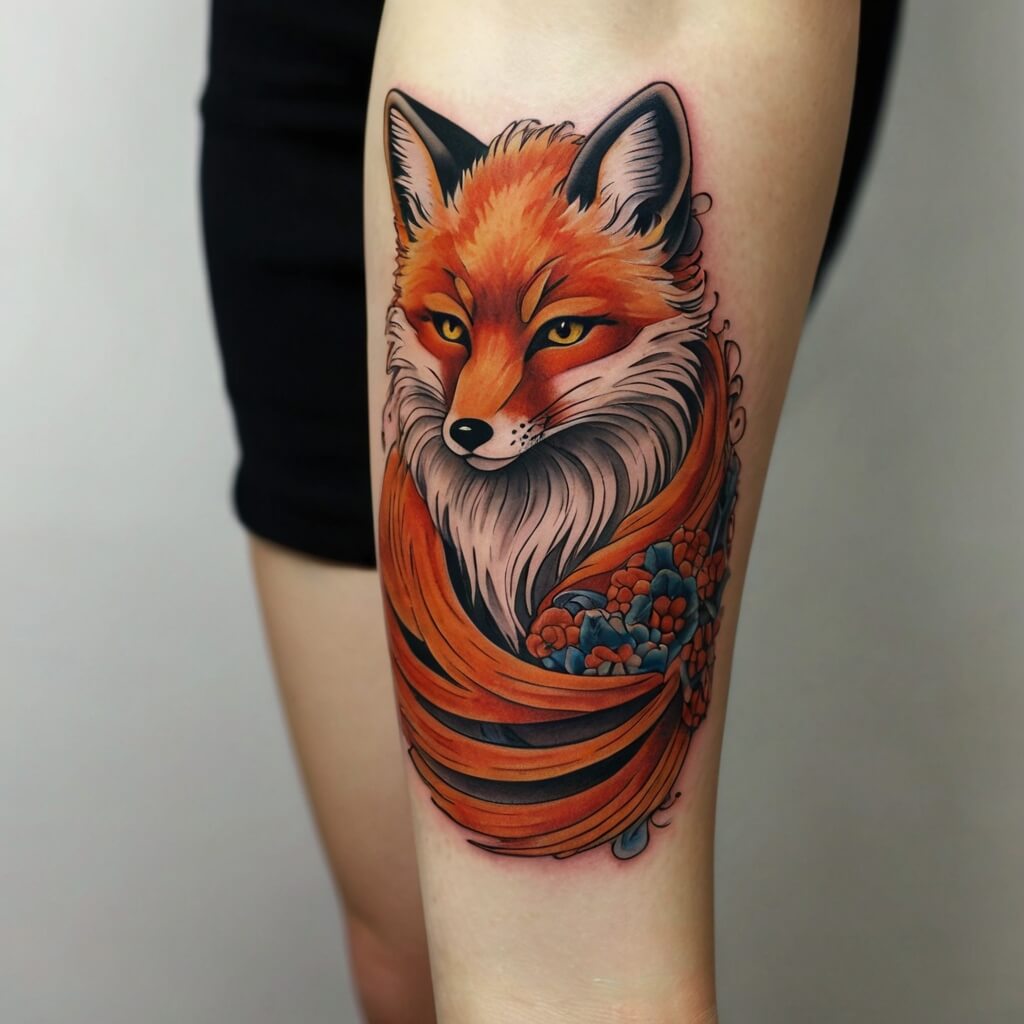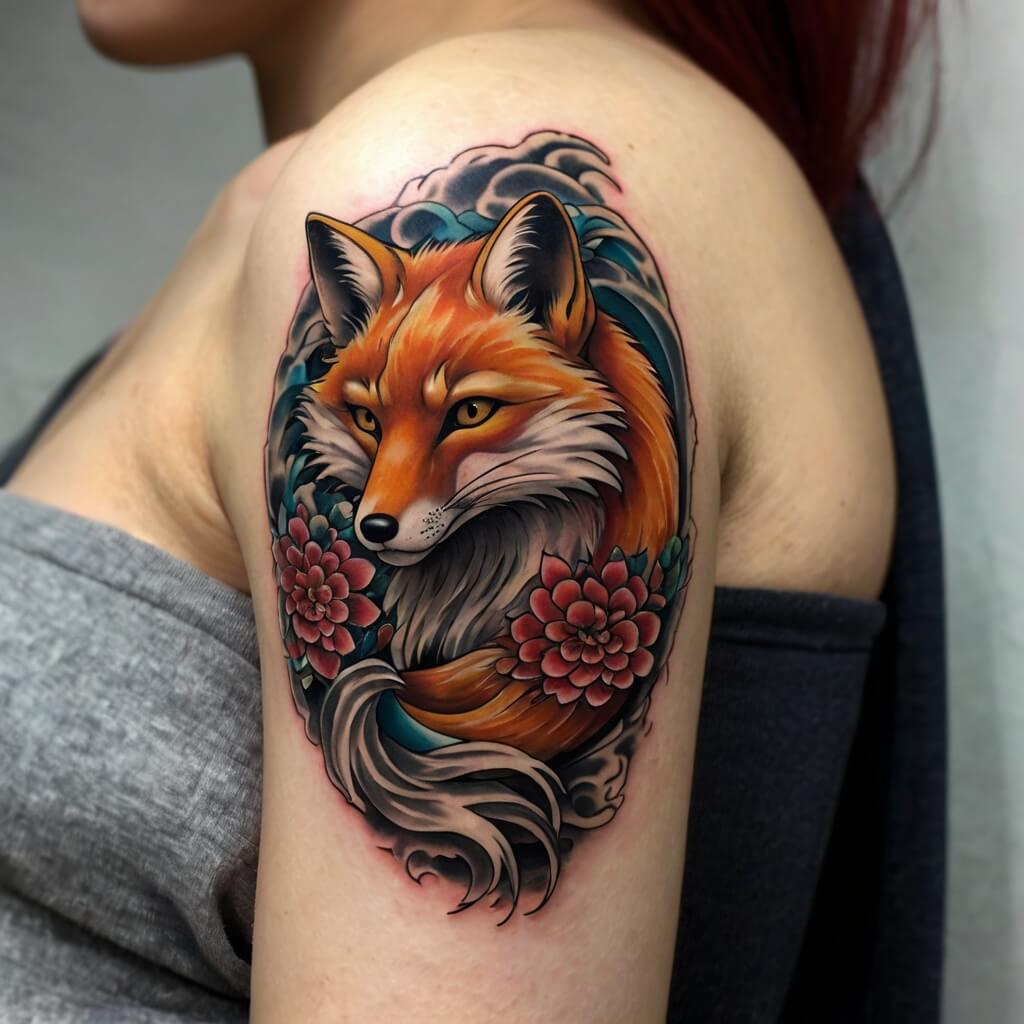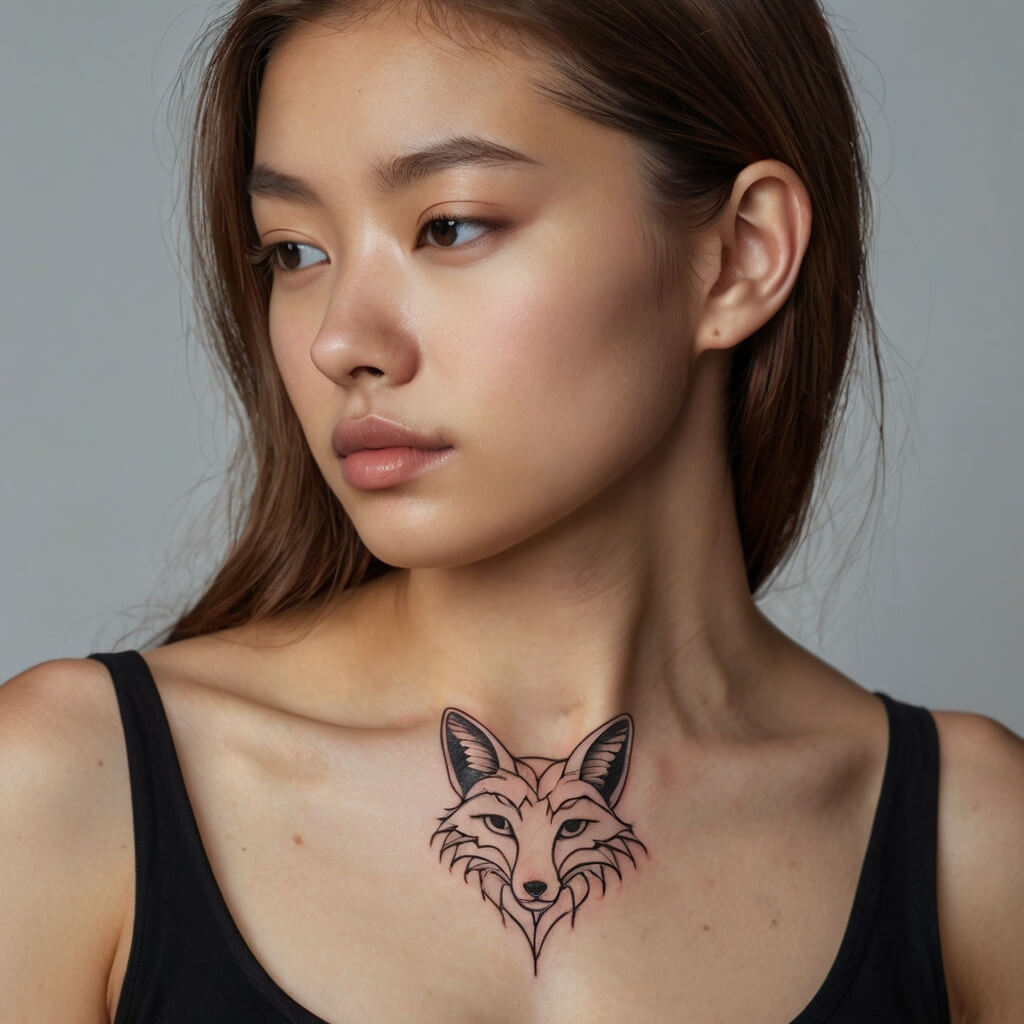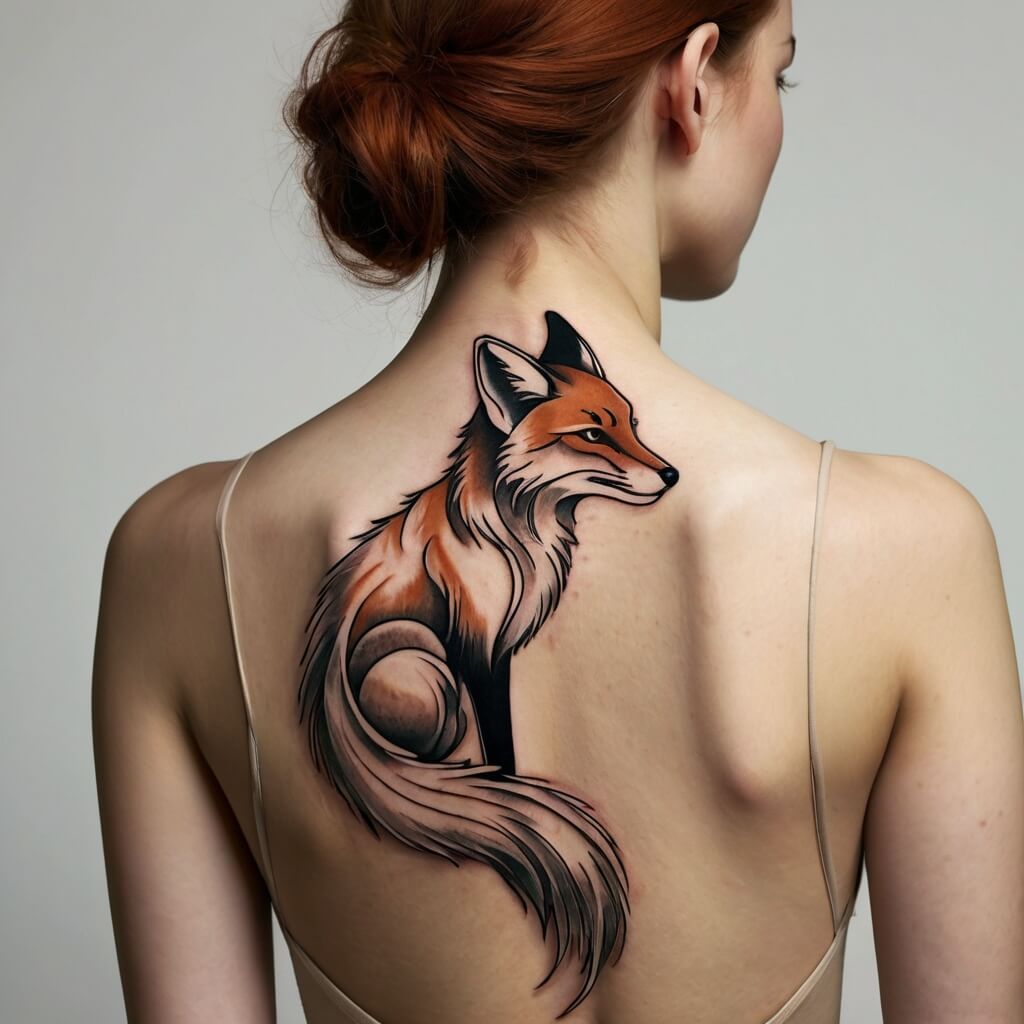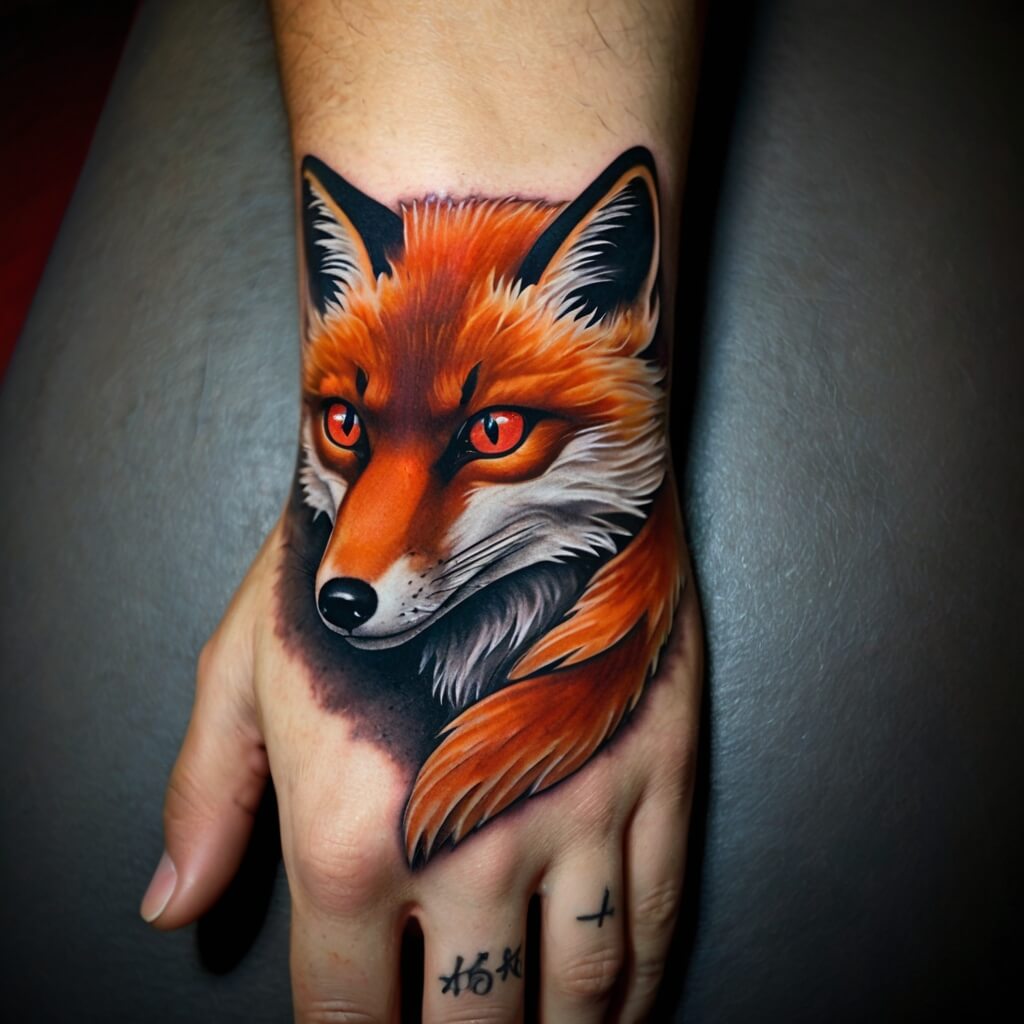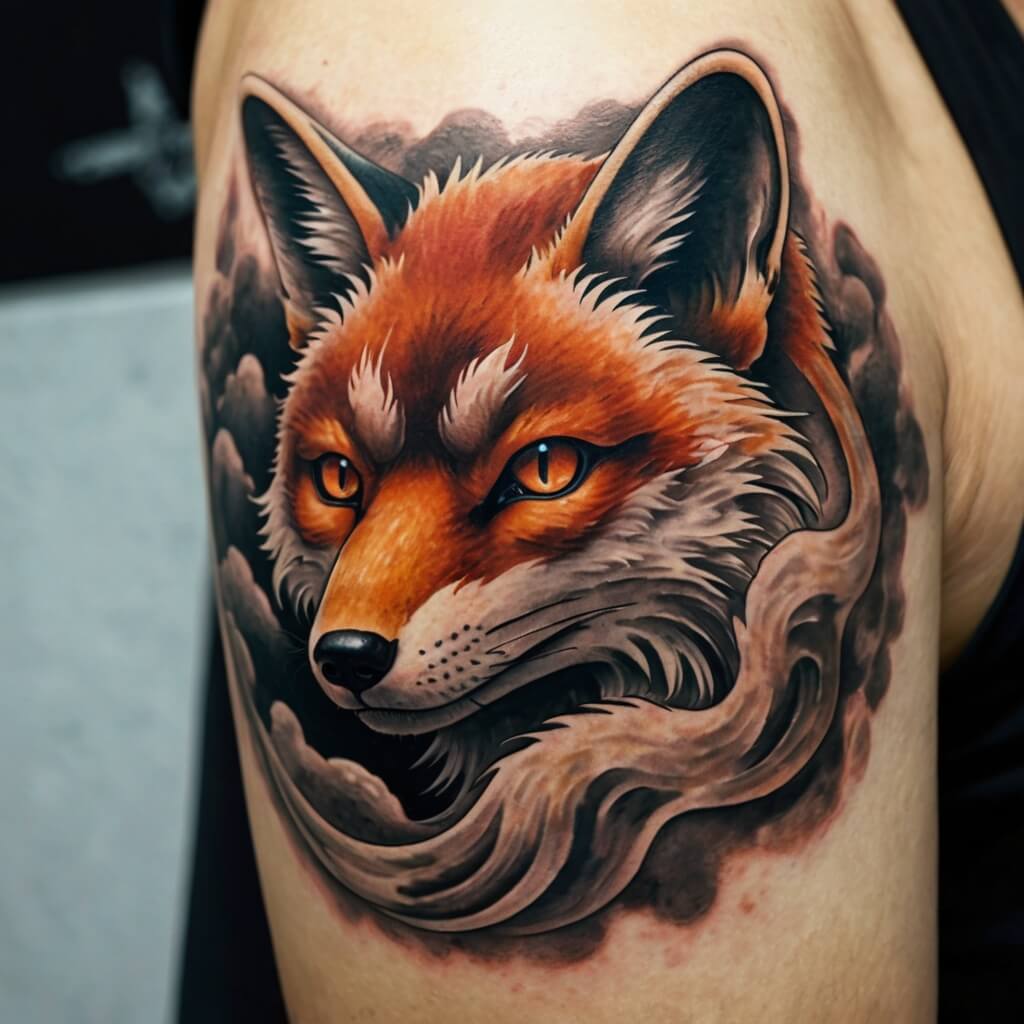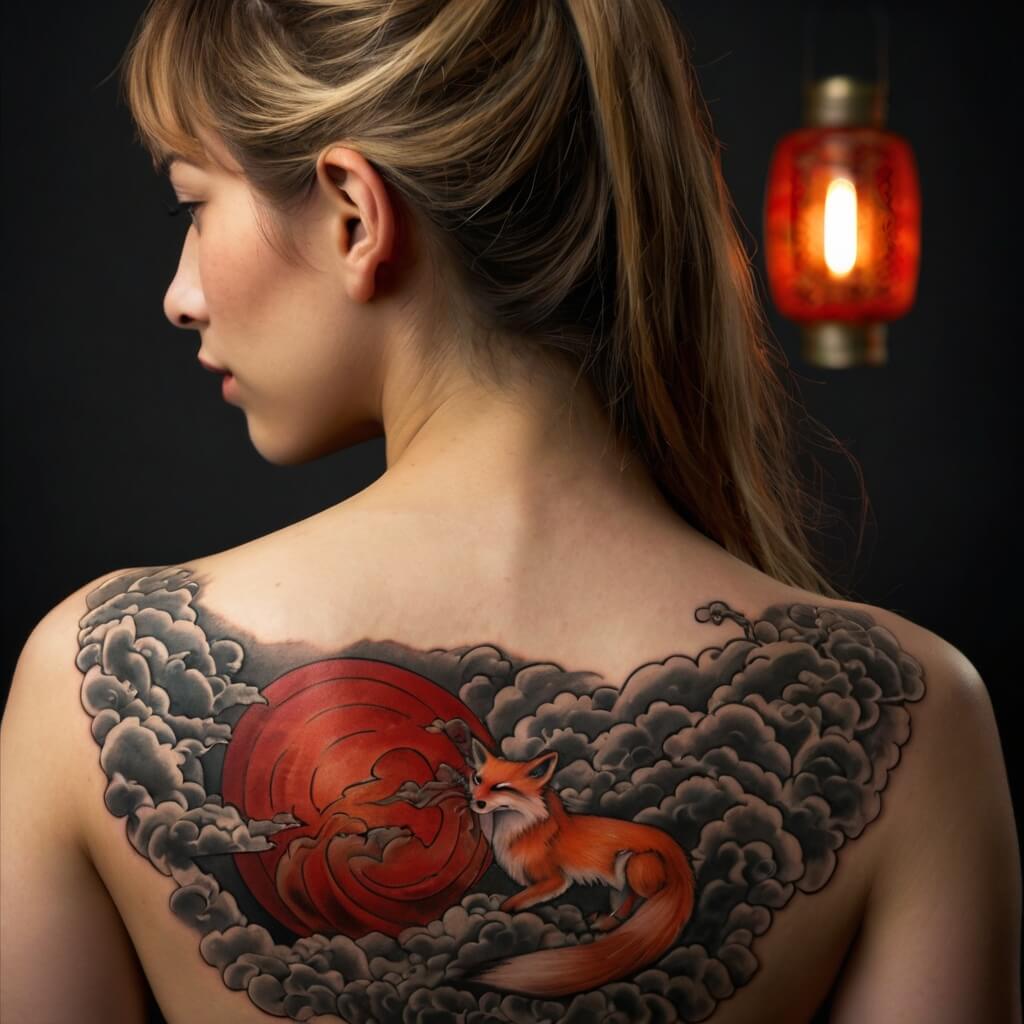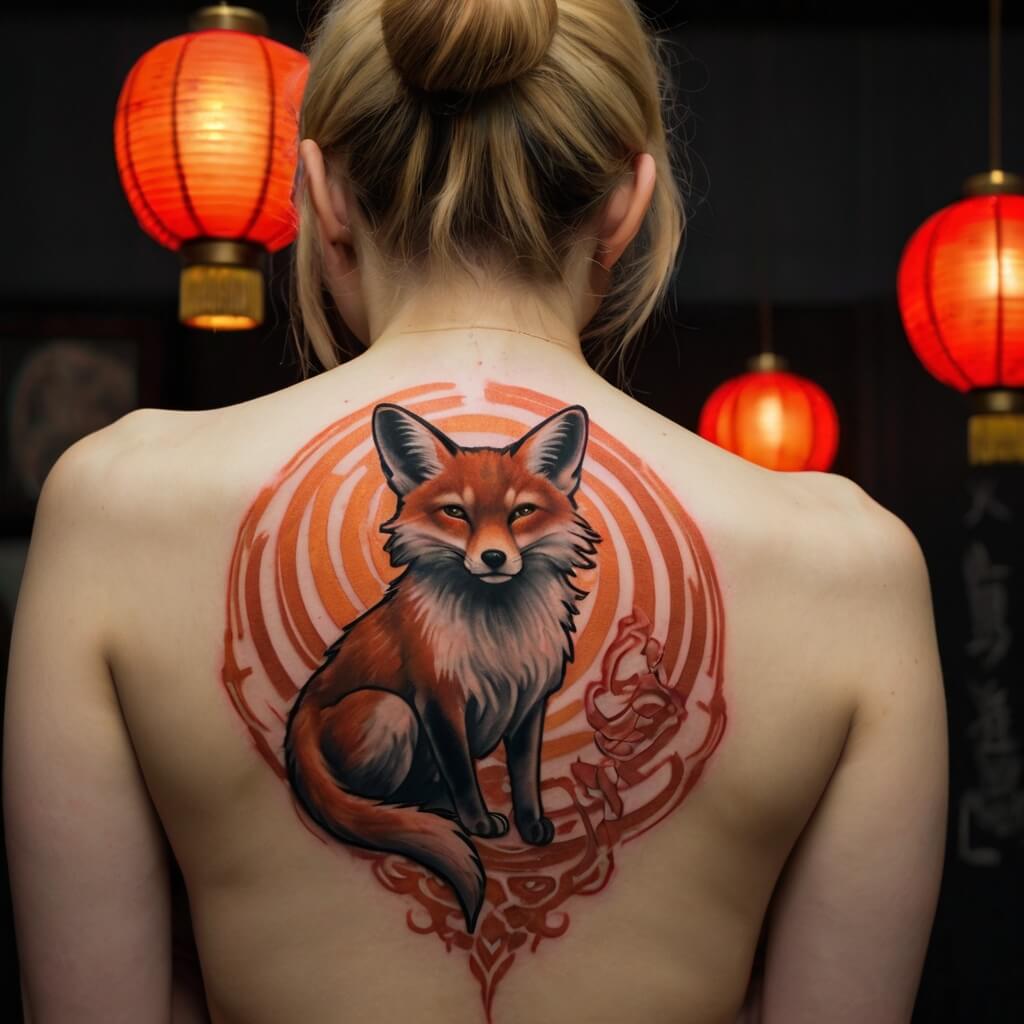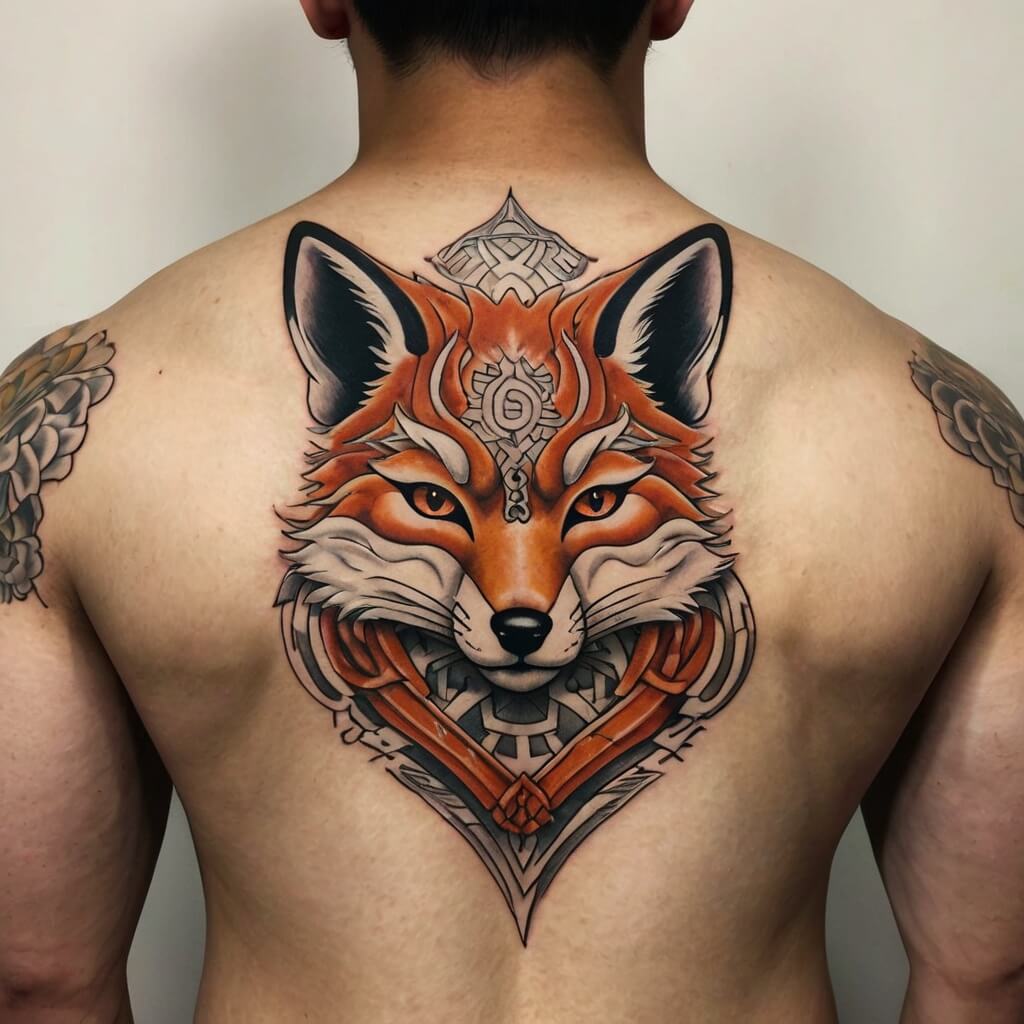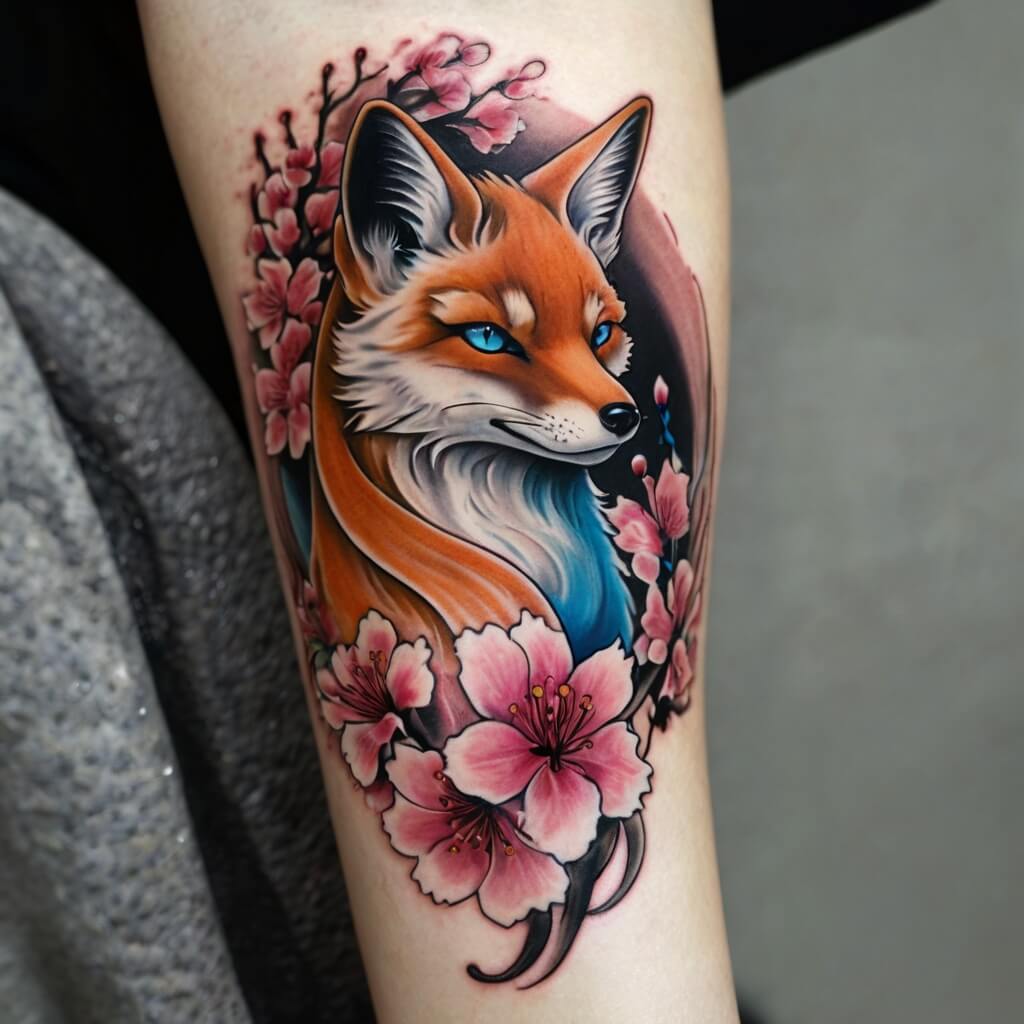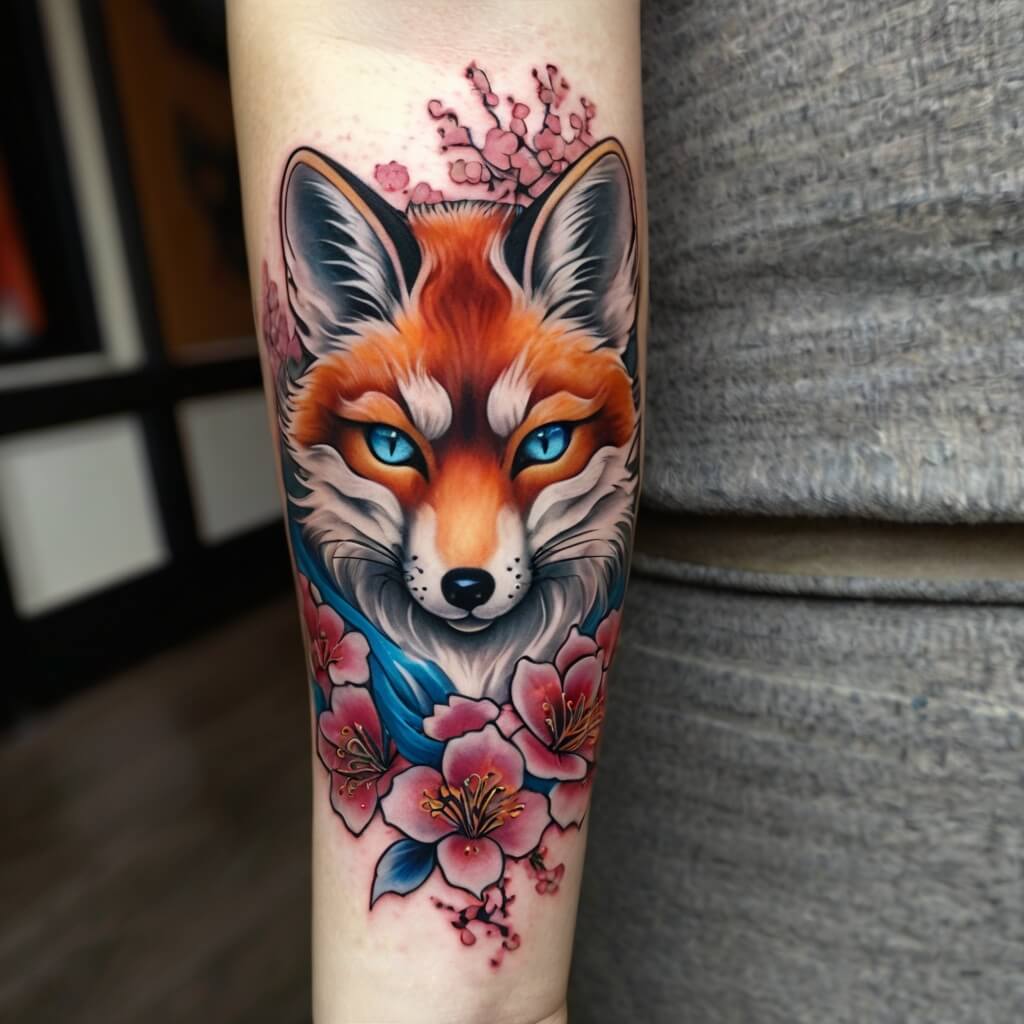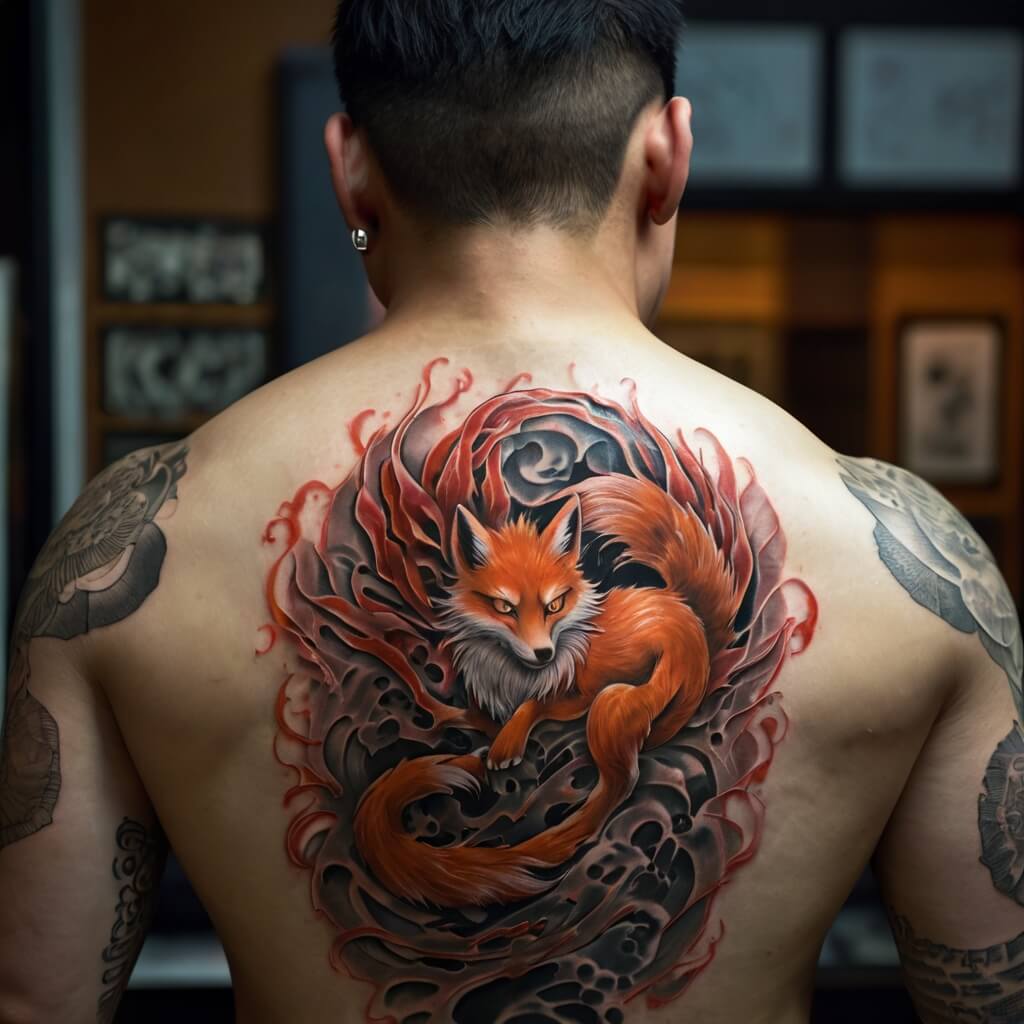Tattoos let us show who we are right on our skin, sharing our stories, beliefs, and what we love. Among the many tattoo designs out there, kitsune tattoos stand out. These mystical foxes from Japanese tales are known for their mystery, power, and ability to change shape. But why do these foxes catch the eye of so many tattoo lovers? Let’s take a closer look at where kitsune come from, their history, what they mean, the discussions they spark, and why they look so cool as tattoos.
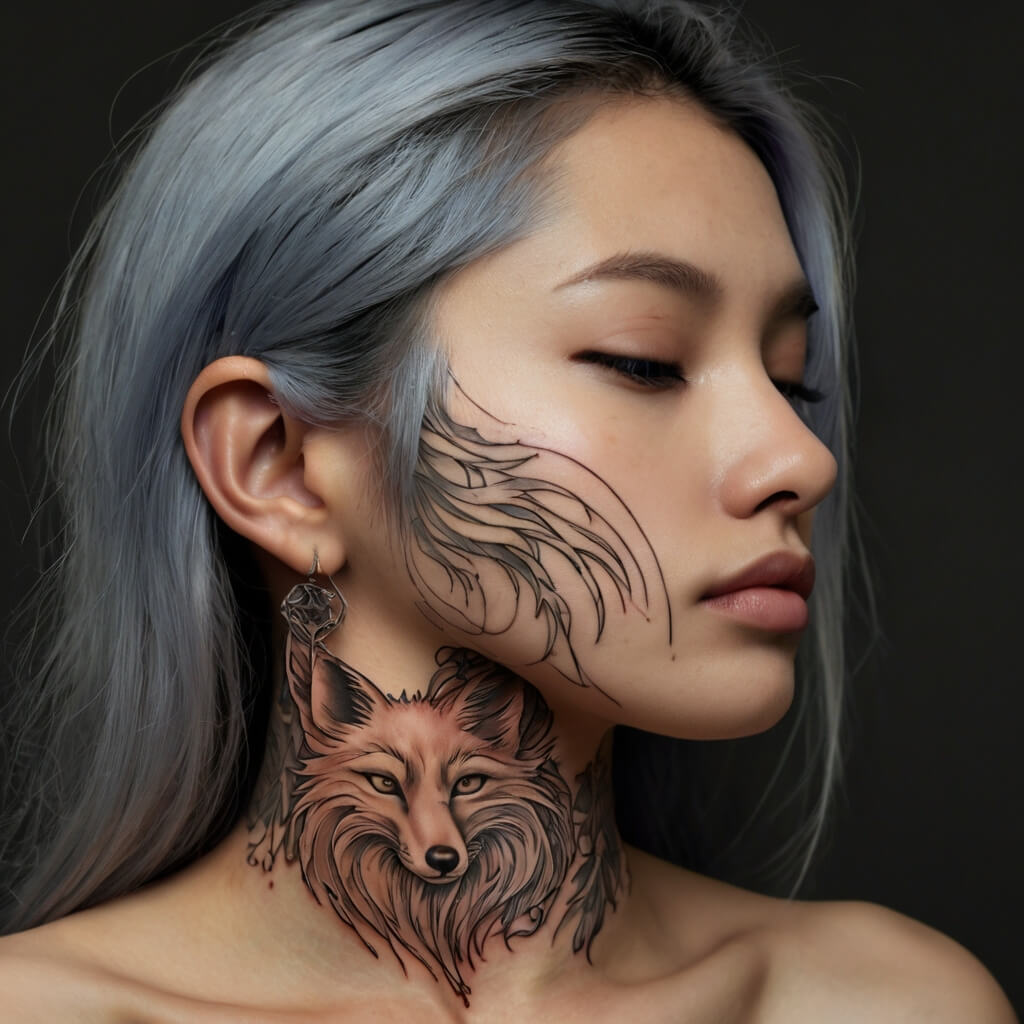
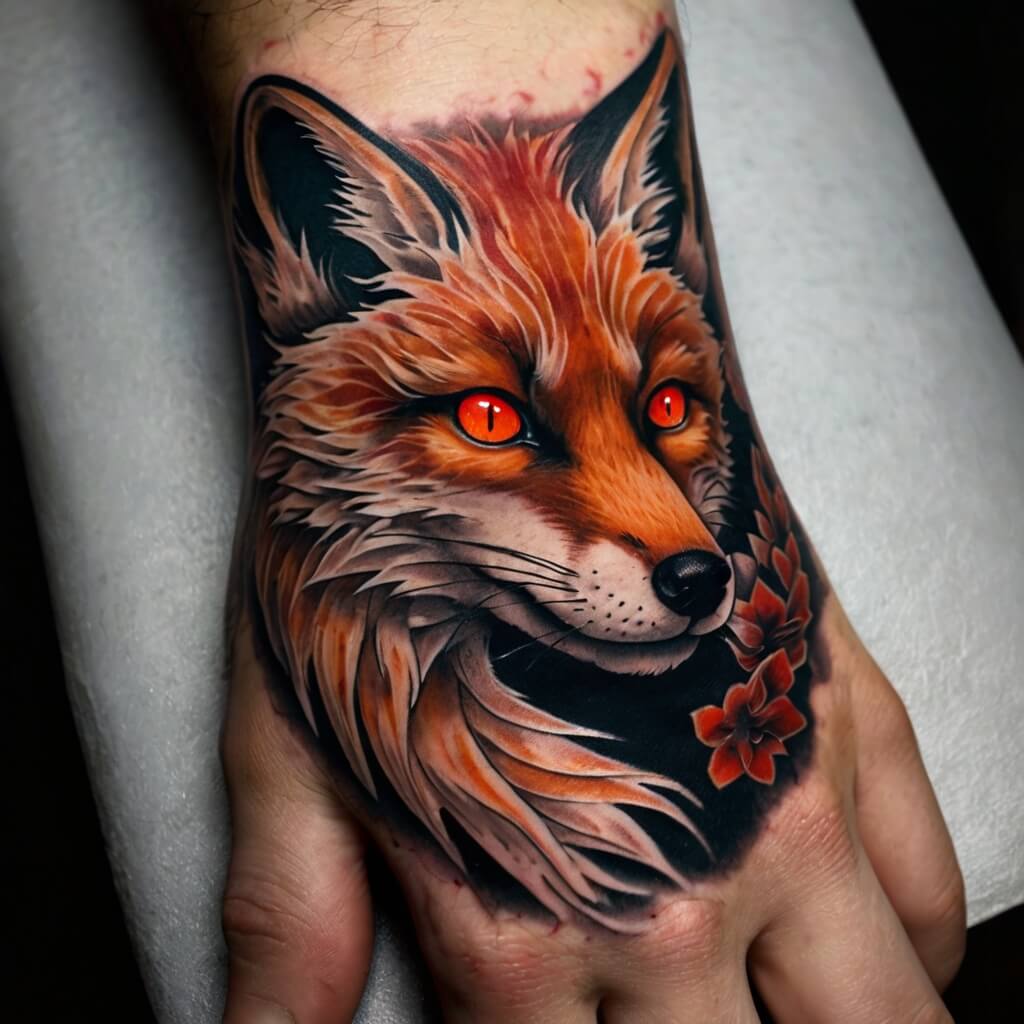
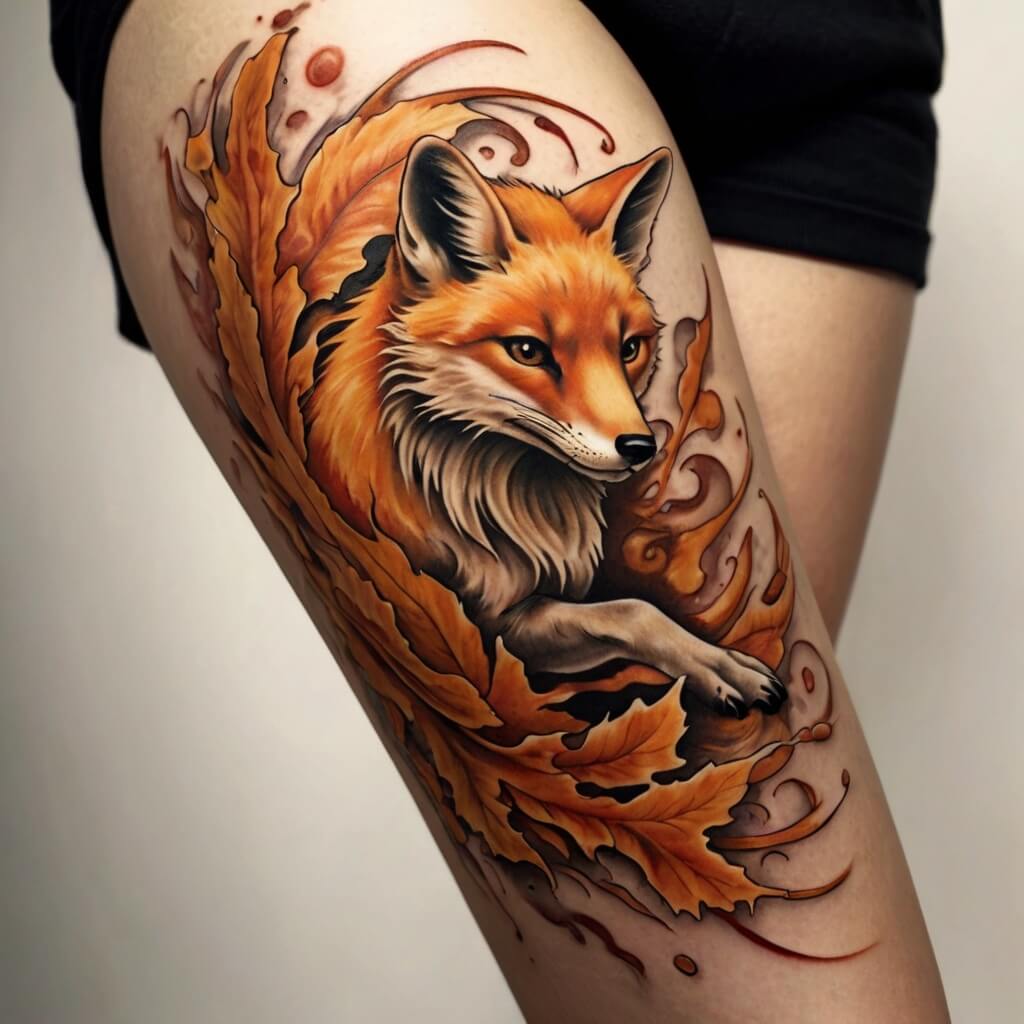
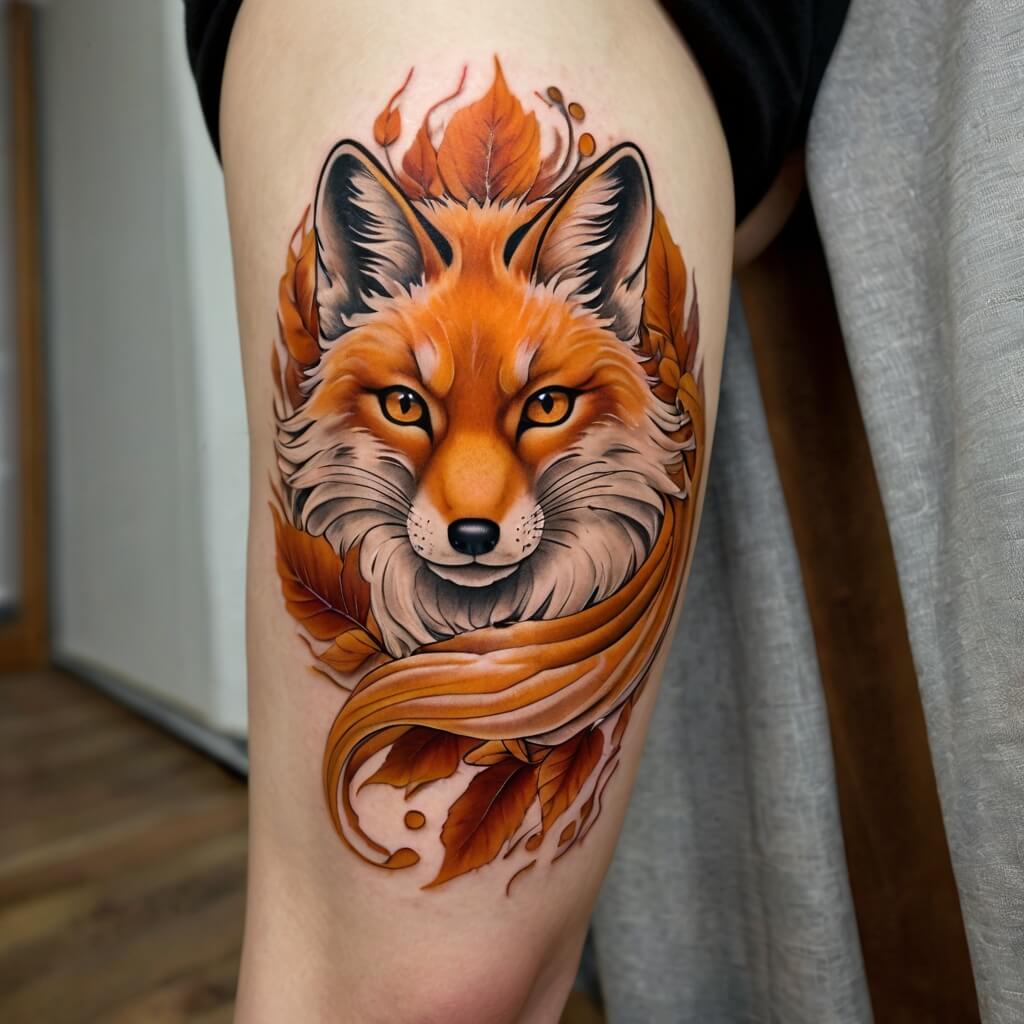
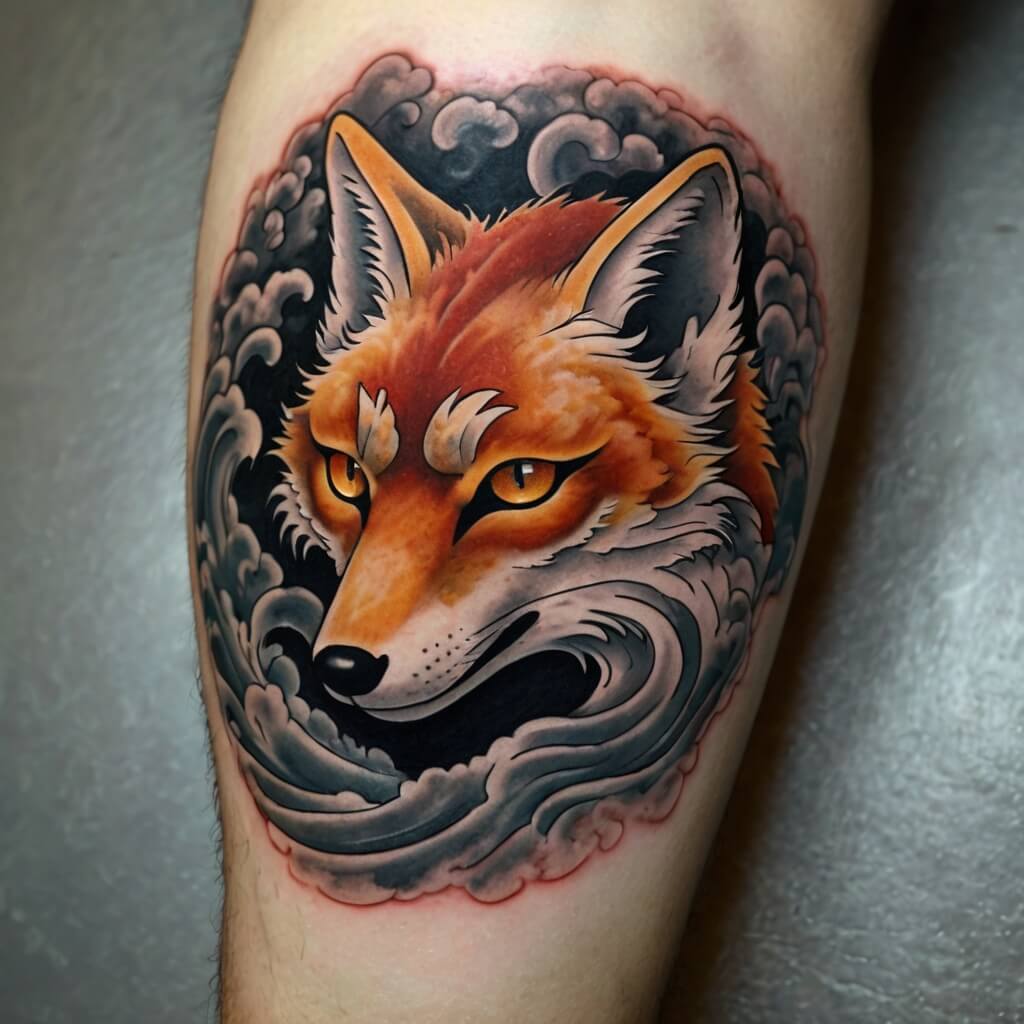
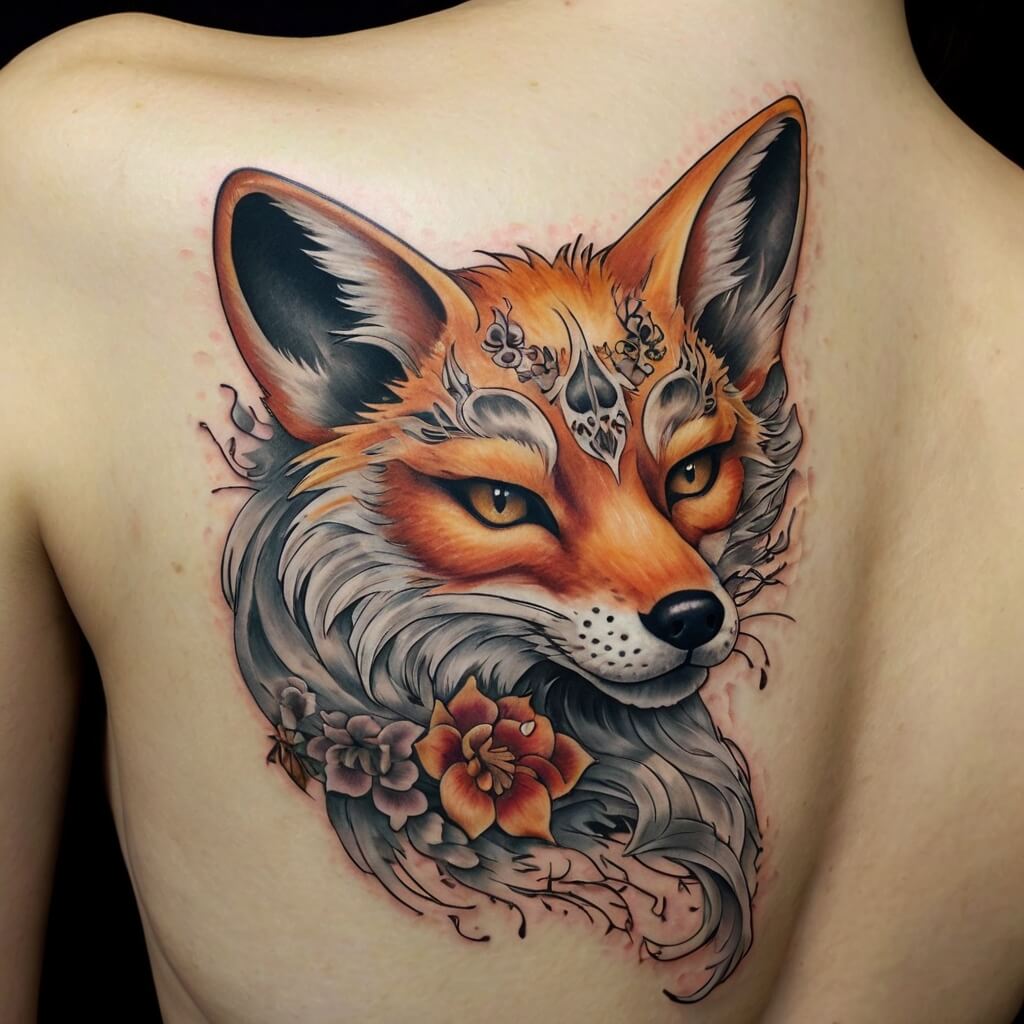
Origins of the Kitsune in Japanese Folklore
The Mythical Foxes of Japan
In Japanese stories, “kitsune” means “fox.” But these aren’t your average foxes. They’re spiritual creatures that can transform, often into beautiful women. Kitsune is linked to Inari, the Shinto god of rice, fertility, and wealth. They serve as Inari’s messengers and are both honoured and feared. Known for their cunning, kitsune can be both helpful and mischievous, weaving a complex web of good and evil.
Dual Nature of Kitsune: Benevolent and Malevolent
Kitsune is split into two main types:
- Zenko (善狐): The good ones. These foxes are seen as kind and protective spirits. They work for Inari, bringing wealth and luck.
- Yako (野狐): The wild ones. These foxes love to play tricks and sometimes act mean. They often fool humans for fun or to teach them something.
This mix of good and bad makes the kitsune a rich symbol, full of both light and dark. That’s what makes them such intriguing choices for tattoos.

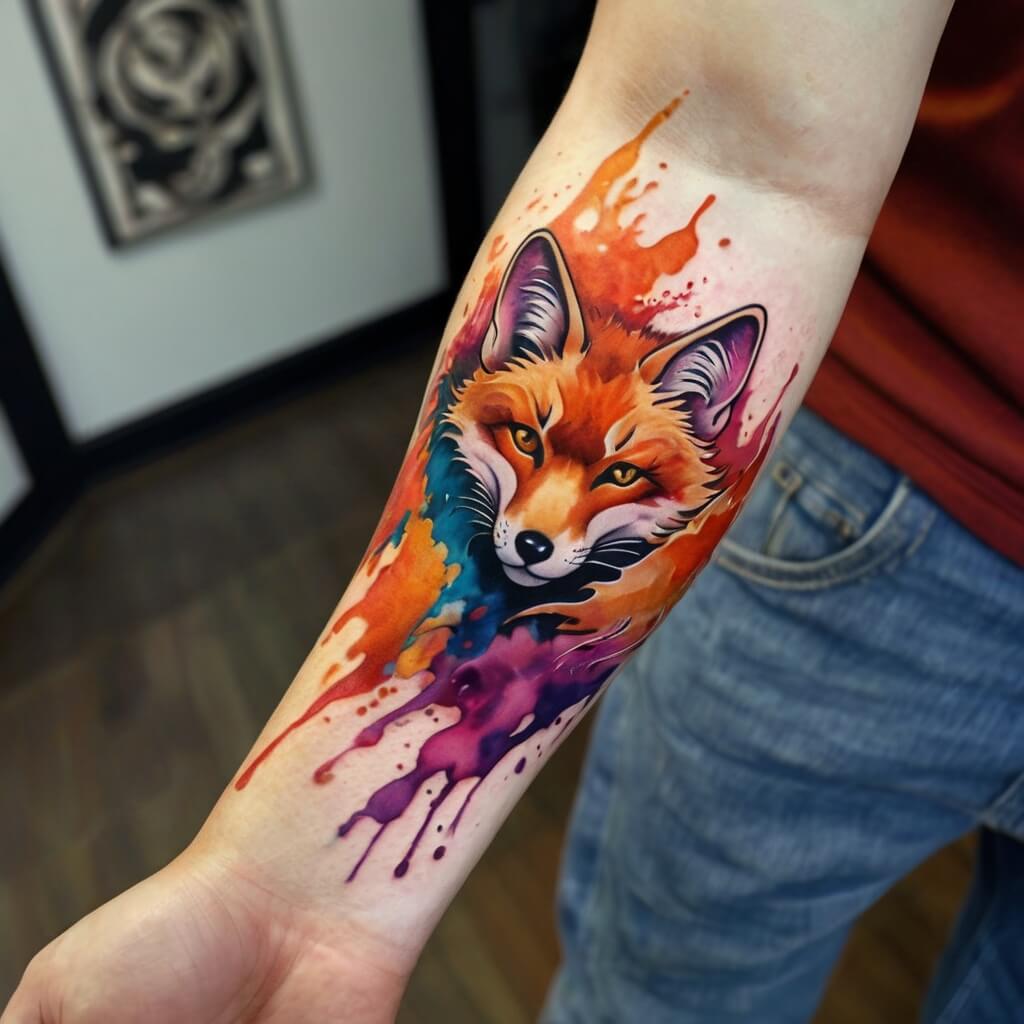
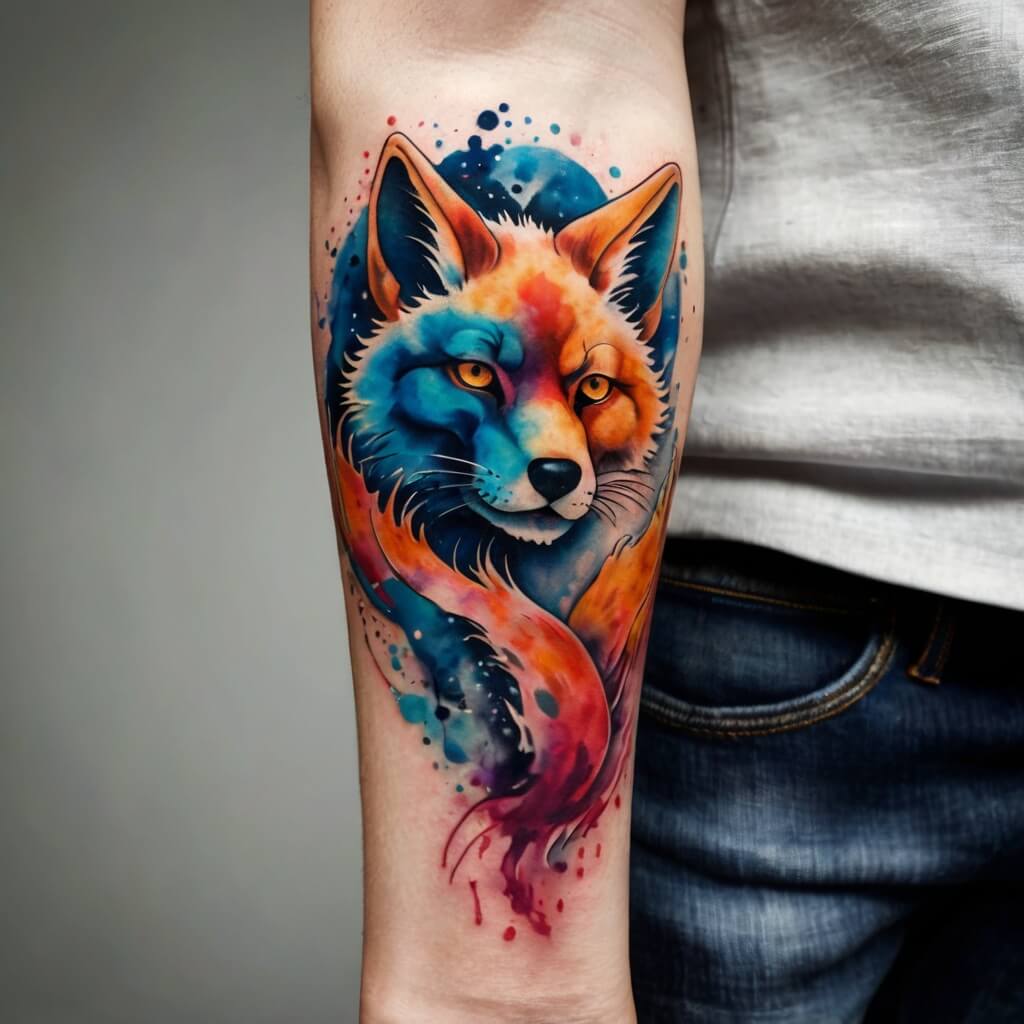
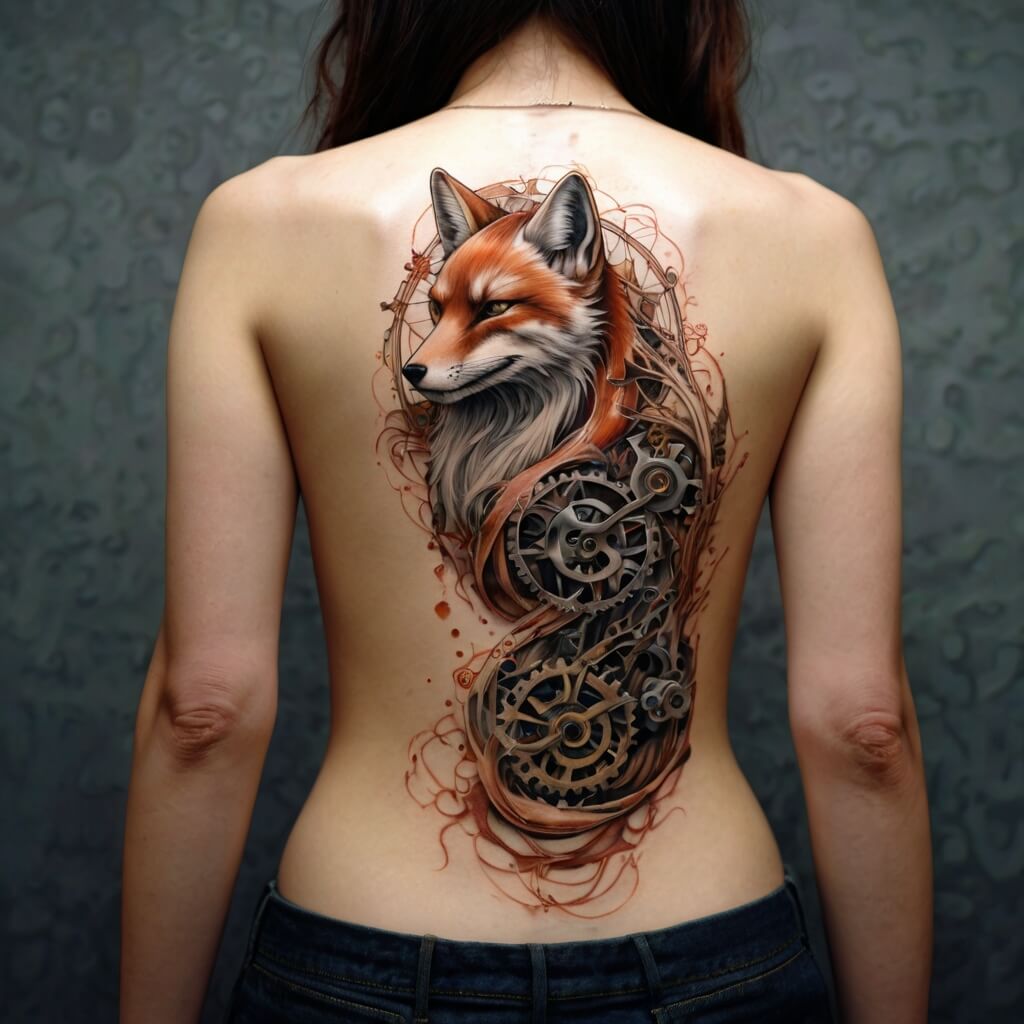
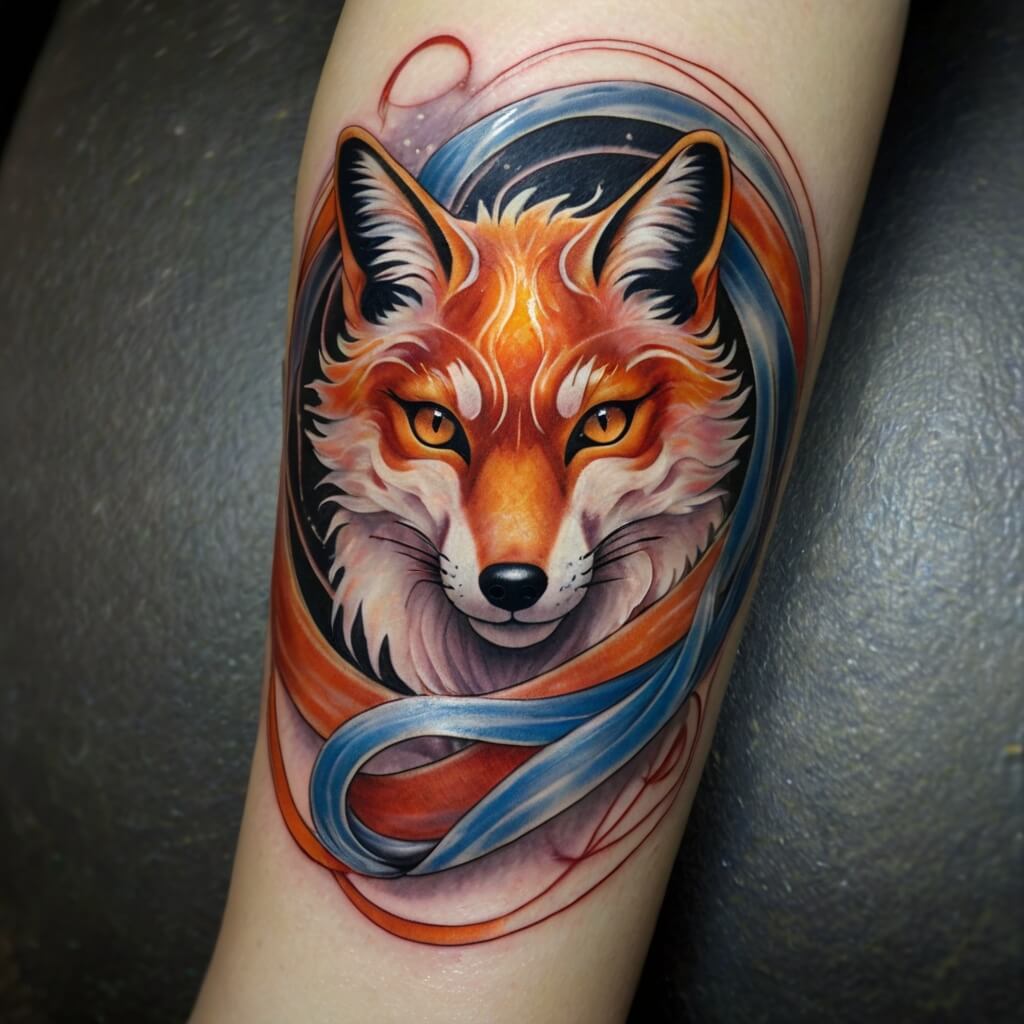

Historical Evolution of Kitsune Imagery
The Kitsune in Ancient and Medieval Japan
Kitsune tales have been woven through Japanese culture since the 5th century. At first, these stories painted kitsune as purely evil. But over time, their image changed. By the Edo period, from 1603 to 1868, people saw kitsune as spiritual beings. They could protect or punish, all depending on how humans treated them. This shift shows how deeply these creatures are rooted in the fabric of Japanese mythology.
Kitsune in Ukiyo-e and Art
During the Edo period, kitsune became a favourite theme in ukiyo-e, the art of woodblock prints. Famous artists like Kuniyoshi and Yoshitoshi portrayed kitsune in many ways—often as beautiful women or eerie spirits. These artworks have shaped how kitsune appears in modern tattoos, drawing from this deep artistic heritage.
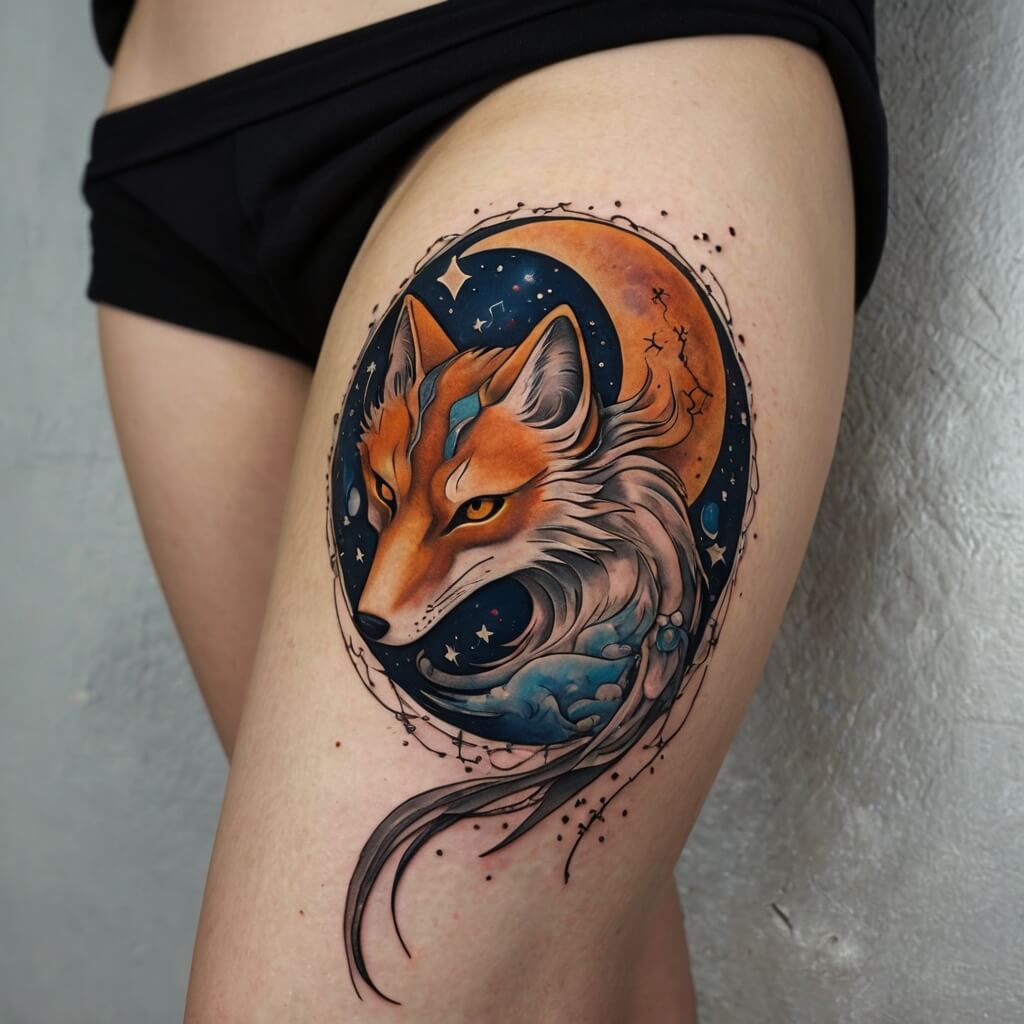
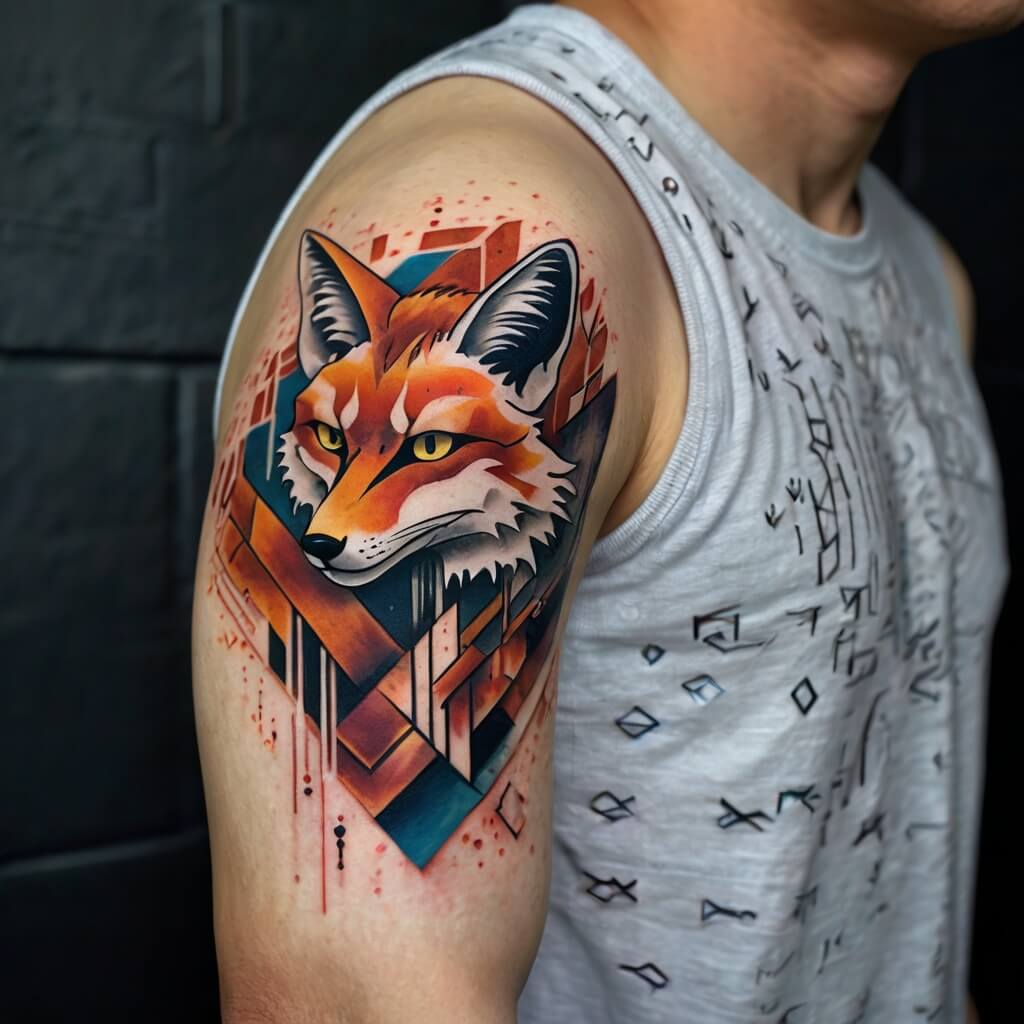
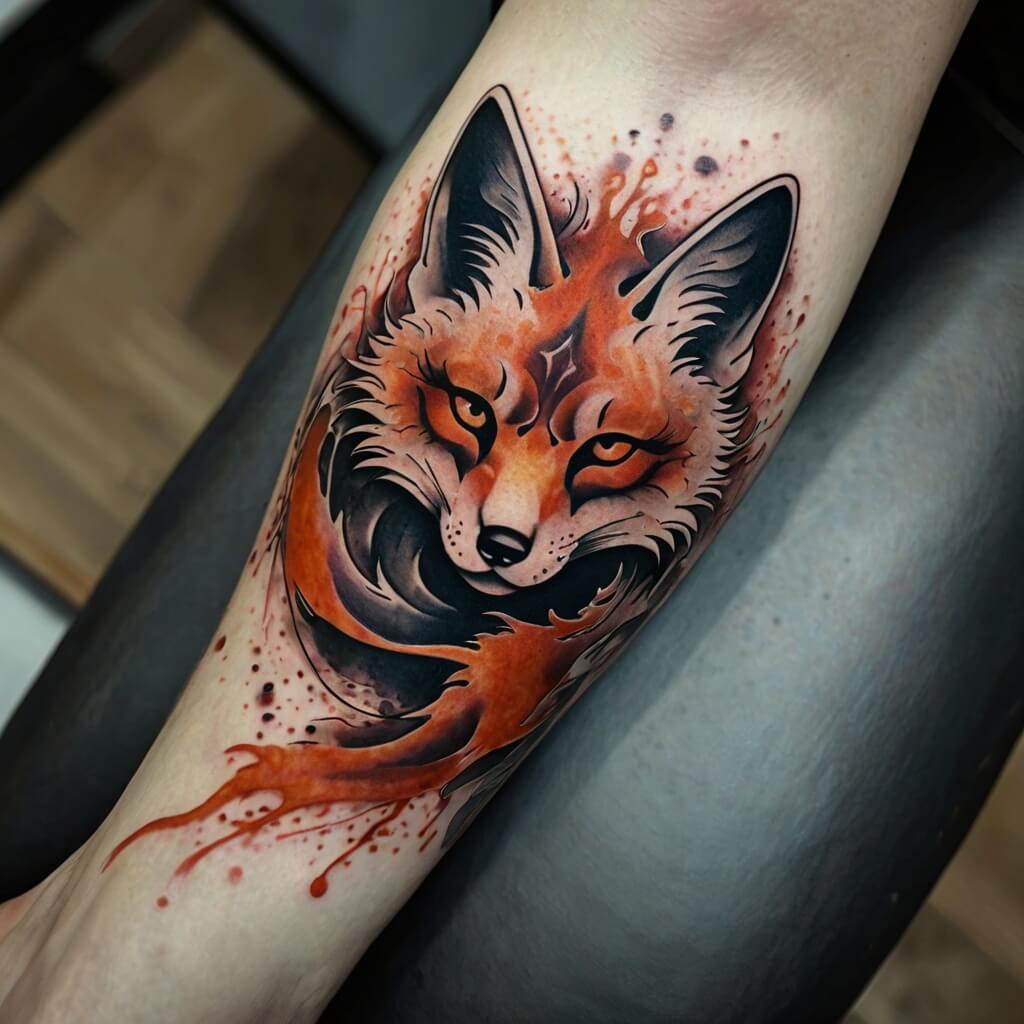

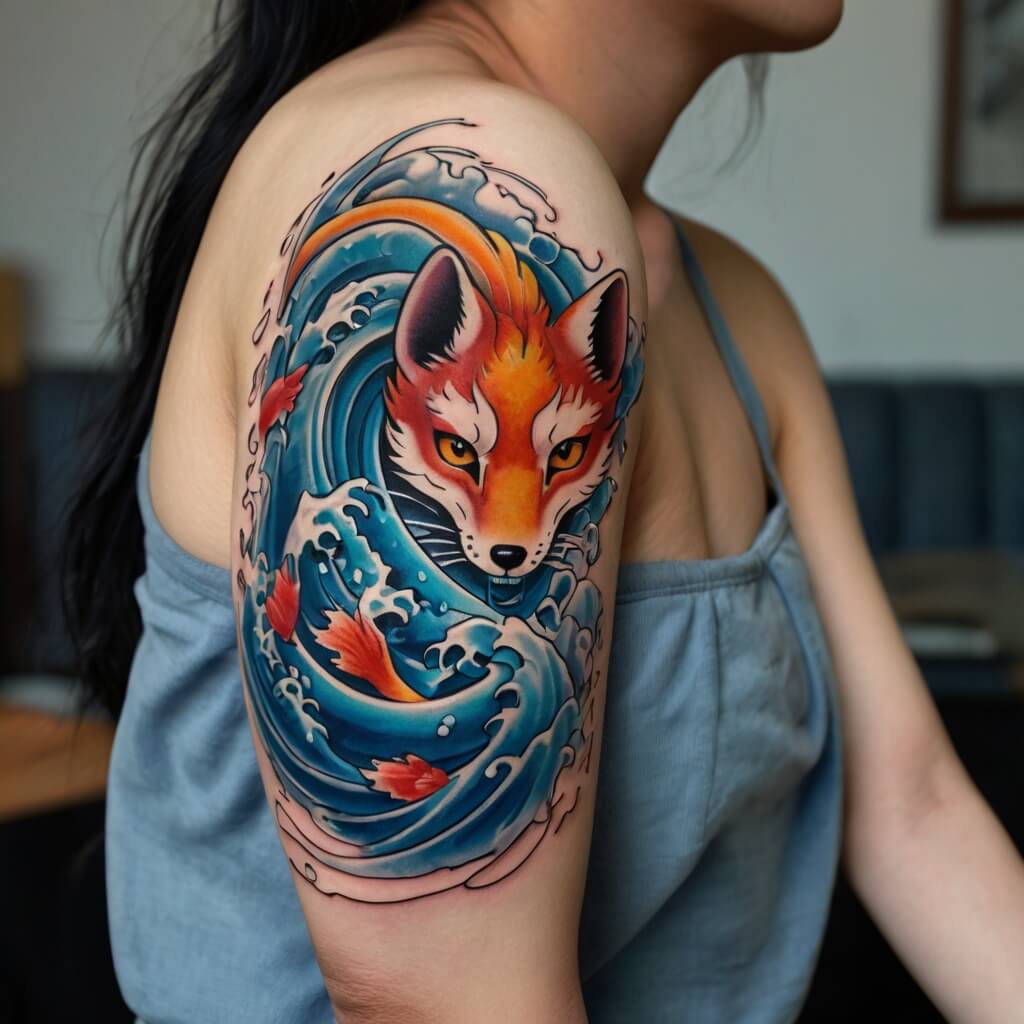
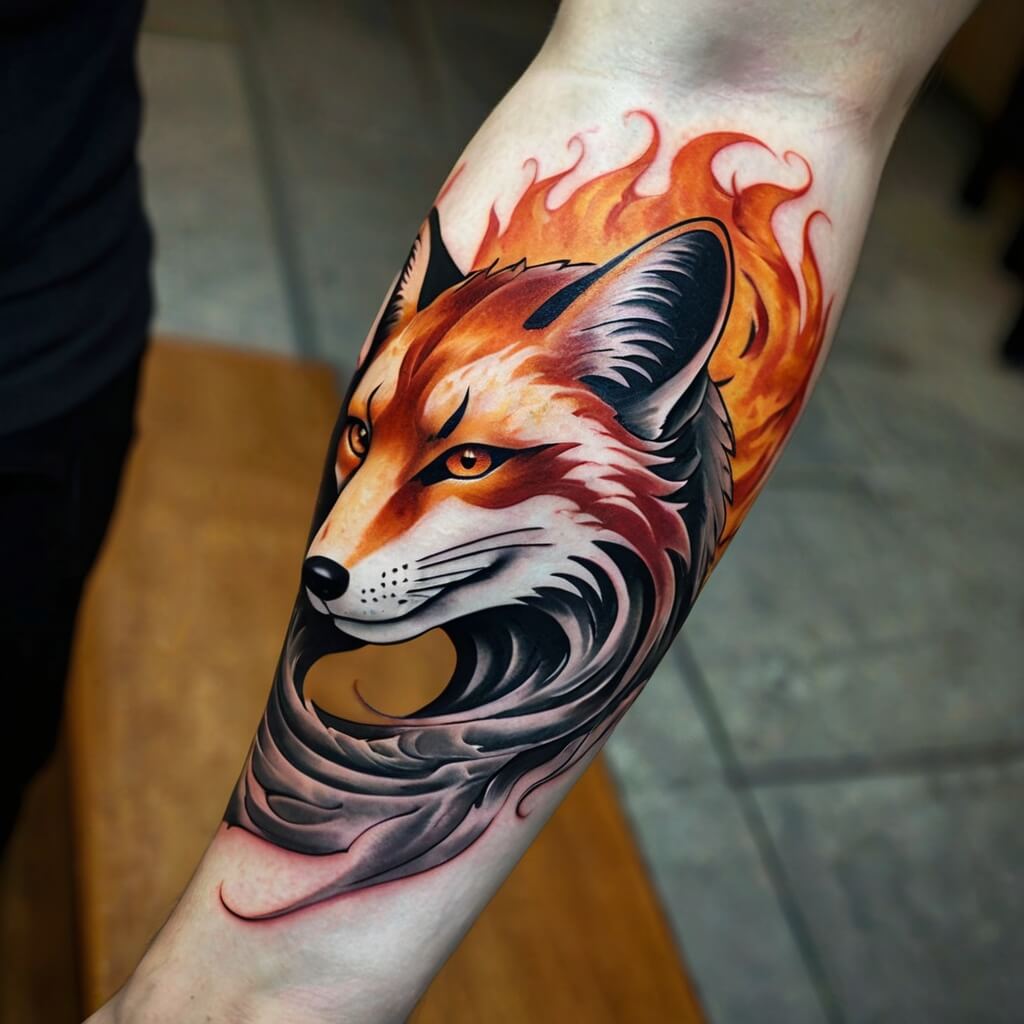
The Meaning and Symbolism of Kitsune Tattoos
Emblems of Transformation and Adaptability
Kitsune are famous for their ability to change shapes, often turning into human women. This skill stands for change, adaptability, and managing life’s different stages. For someone who has seen a lot of change, a kitsune tattoo can be a symbol of their toughness and growth.
Guardianship and Protection
As messengers of Inari, Zenko kitsune are viewed as protectors. A kitsune tattoo can represent a guardian spirit that looks out for the wearer, offering protection and guidance. This is especially meaningful for anyone deeply connected to Japanese culture or the Shinto religion.

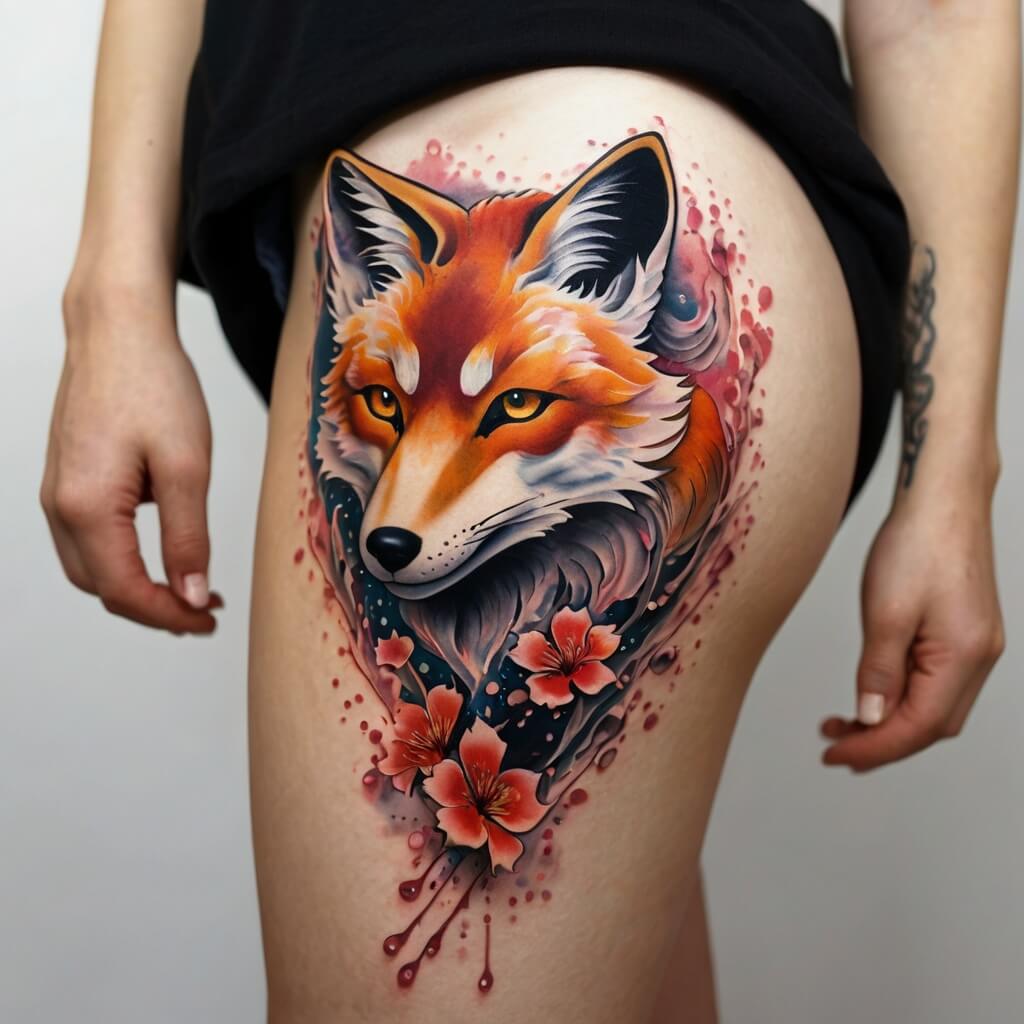
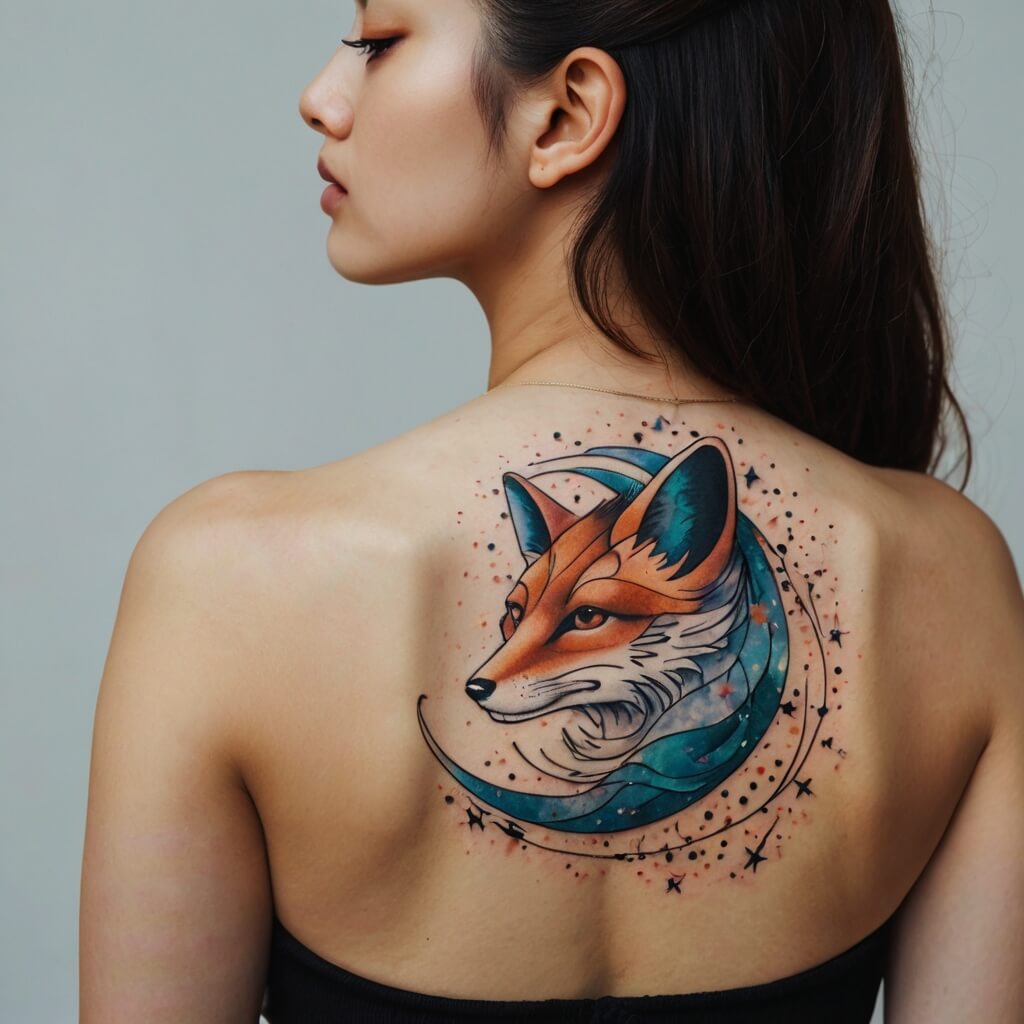
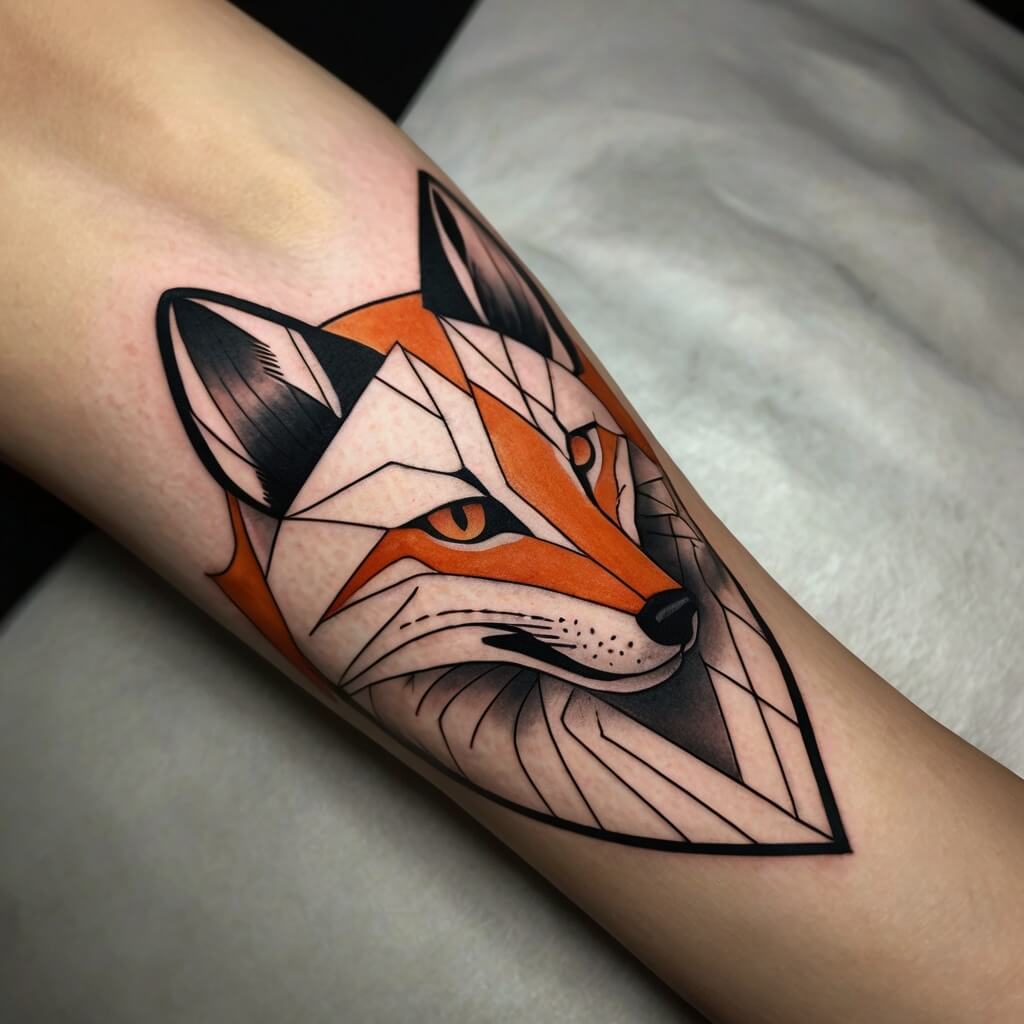

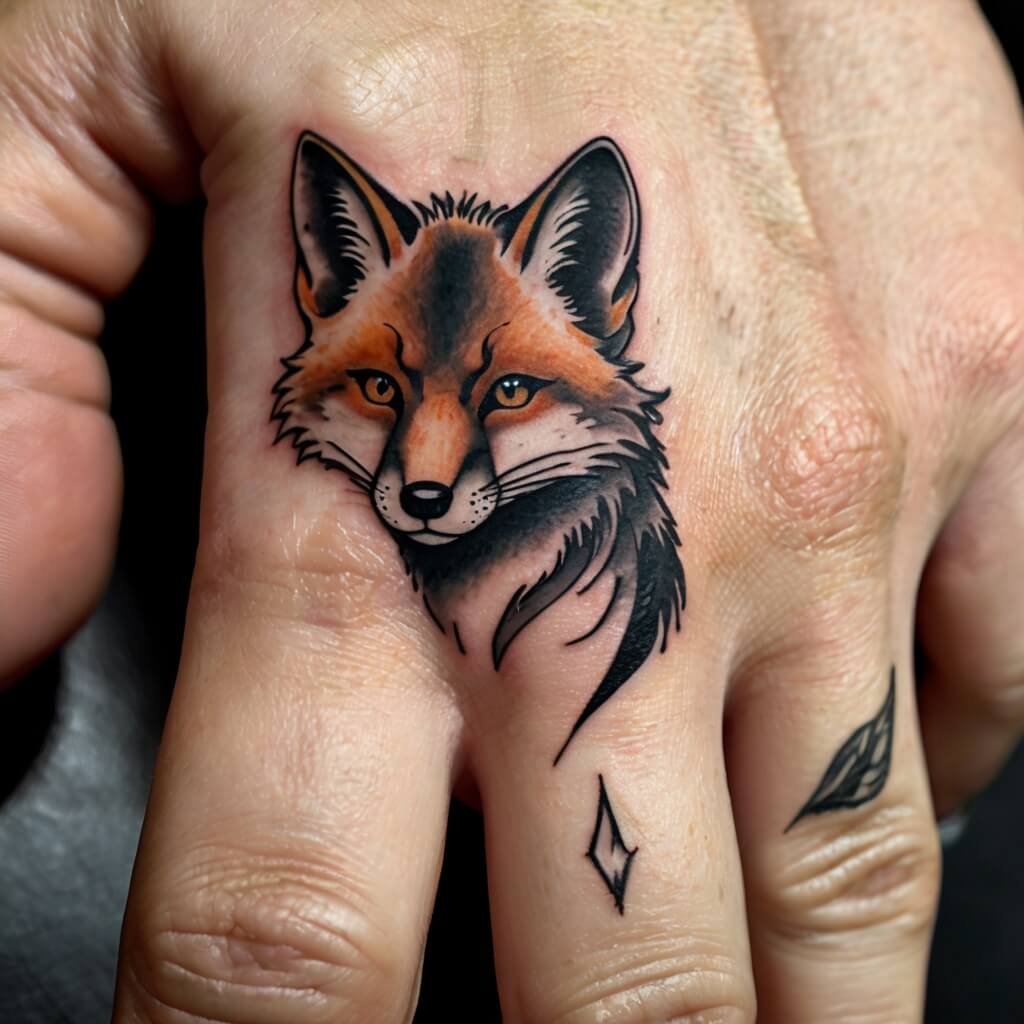
Cunning and Intelligence
Kitsune are known for their smarts, often beating their rivals with cleverness instead of force. For some, a kitsune tattoo stands for sharp thinking, smart planning, and the strength of the mind.
Duality of Nature
The kitsune’s ability to be both good and evil makes it a powerful symbol of duality. A kitsune tattoo can represent the balance between opposites—light and dark, good and bad, love and hate. It’s a reminder that everyone has multiple sides, and embracing this complexity is key to understanding oneself.
Liberty Tattoos: Meaning, Symbolism & Historical Significance (72 Designs)
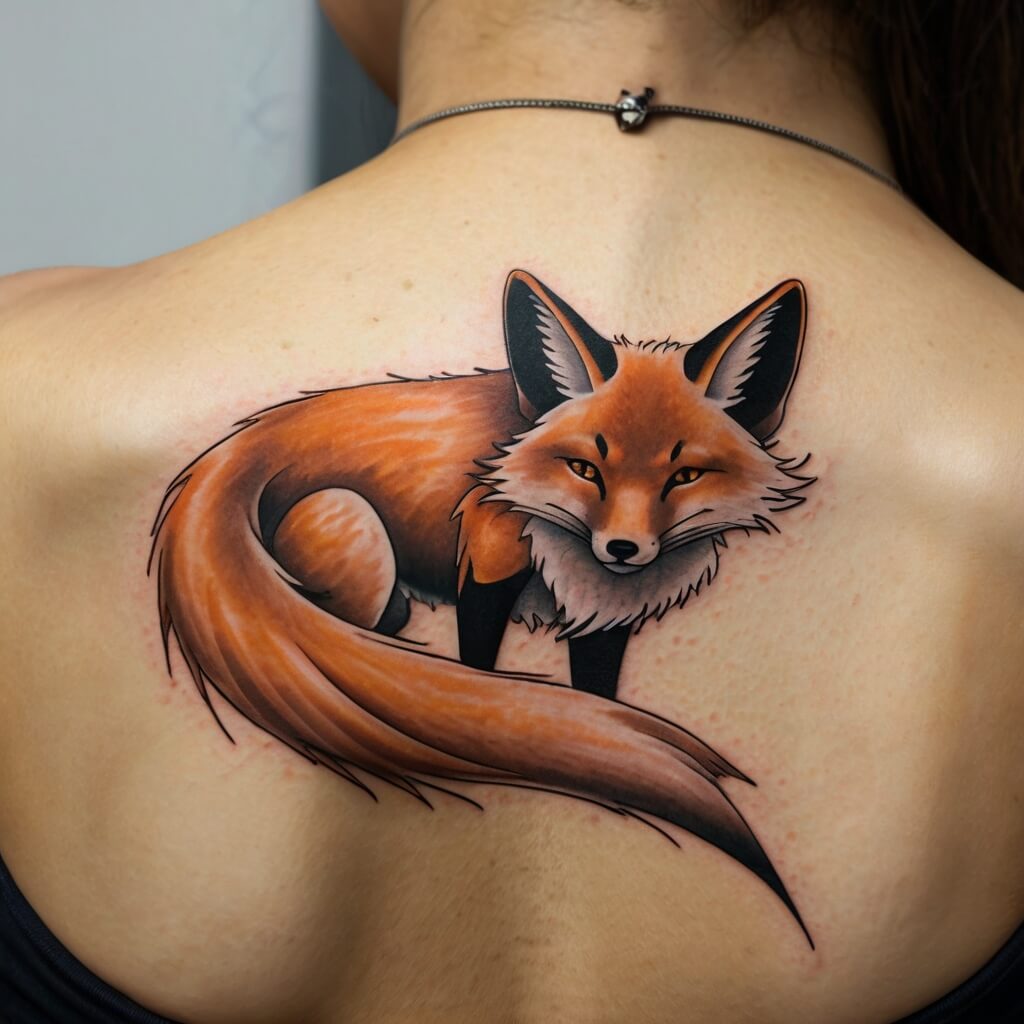

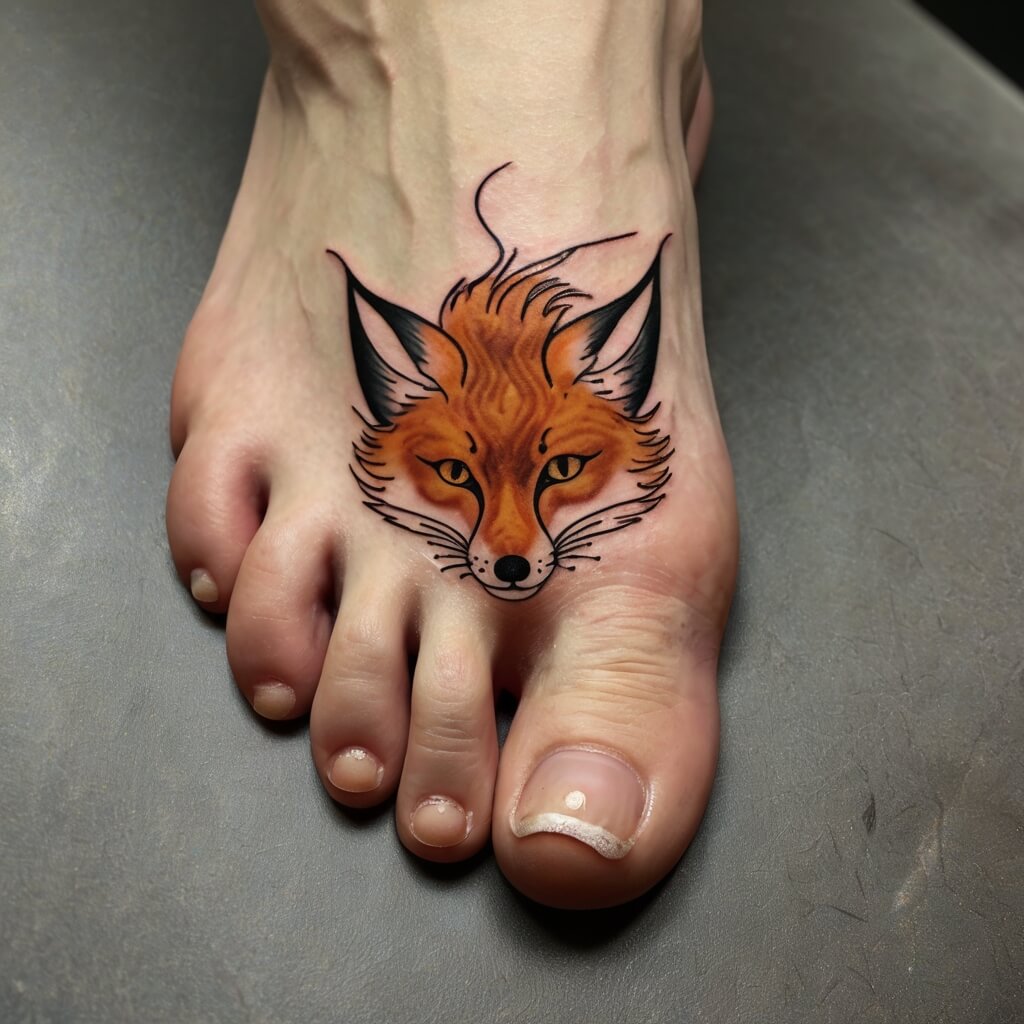
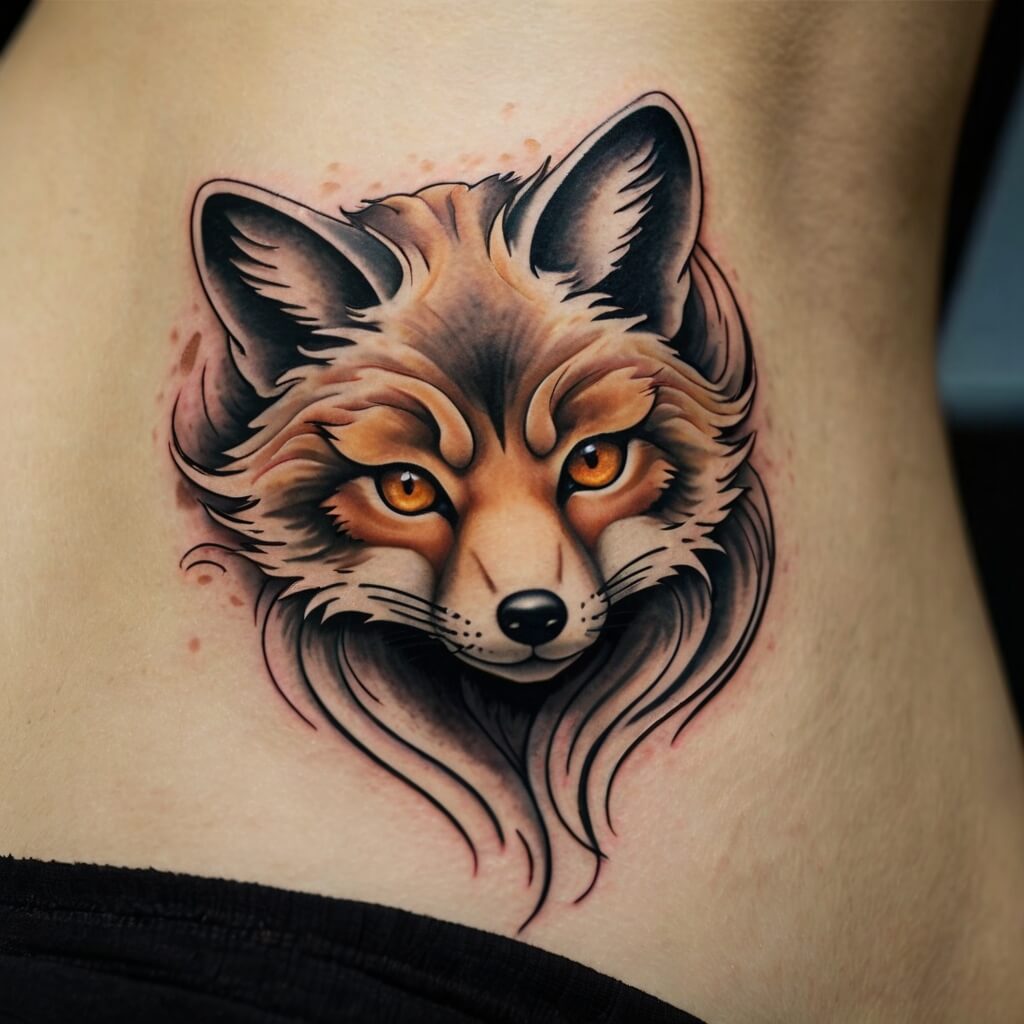
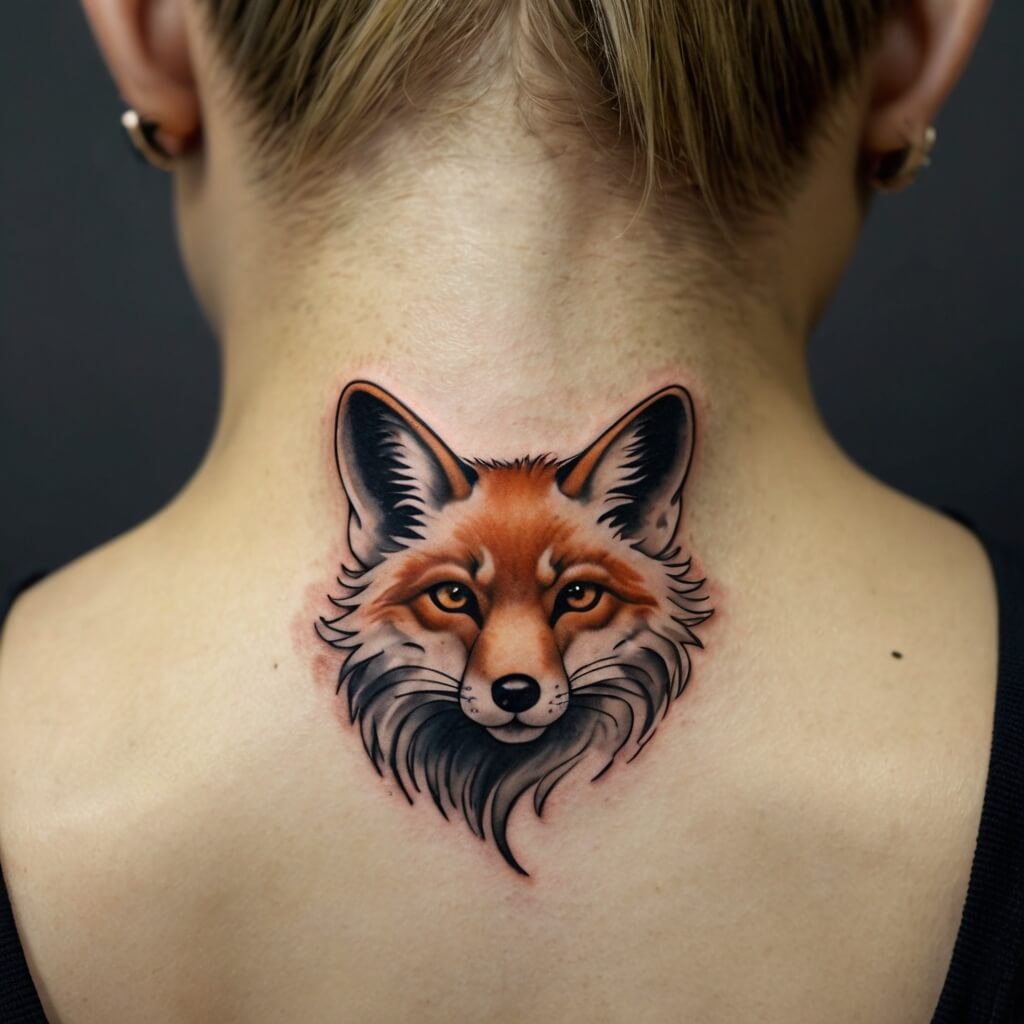
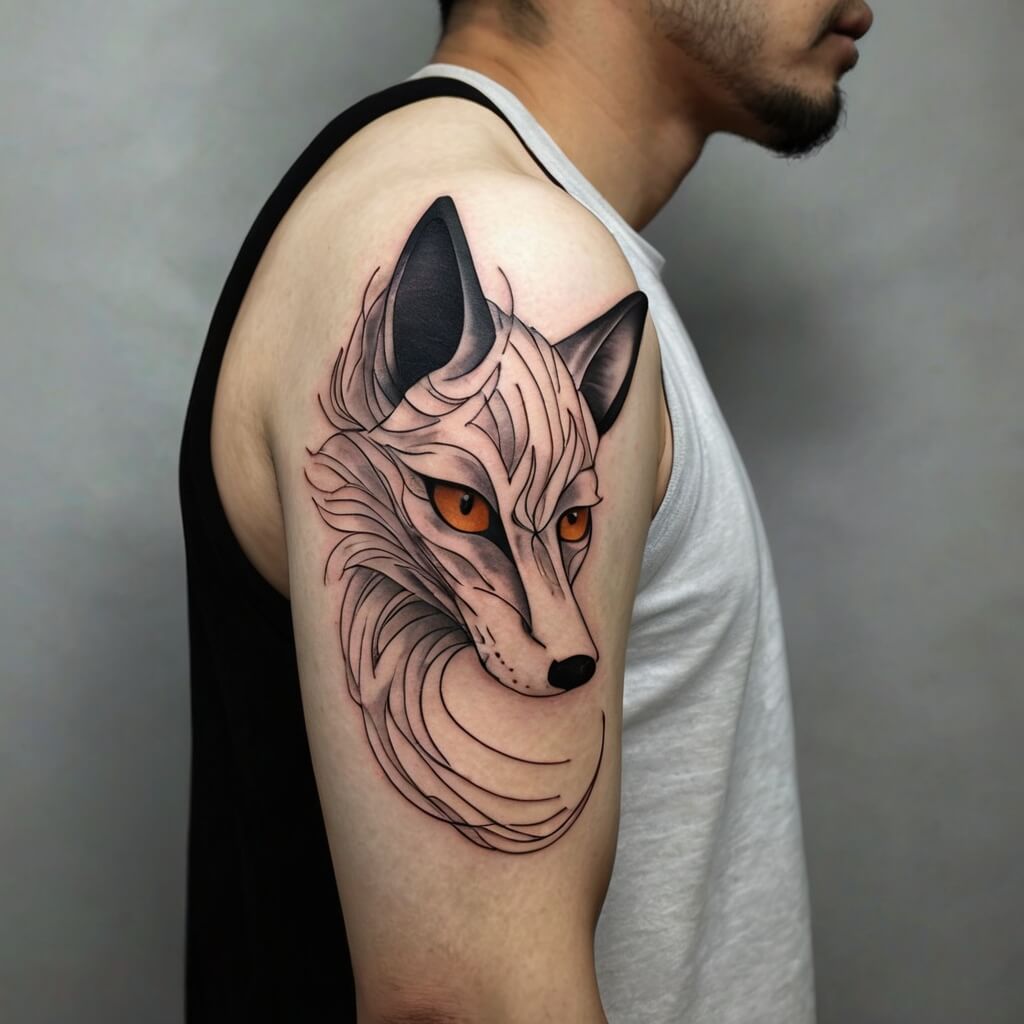
Cultural Debates: Appropriation or Appreciation?
The Thin Line Between Respect and Misuse
Recently, the rise in kitsune tattoos among non-Japanese folks has stirred up some debates about cultural appropriation. The Kitsune is a core symbol in Japanese culture. Some people feel that using it outside of this context might come off as disrespectful or shallow.
Cultural Appreciation Through Education
On the other hand, some argue that with genuine understanding and respect, kitsune tattoos can celebrate Japanese culture. It’s important for anyone thinking about this tattoo to learn about its origins, meanings, and significance. When done respectfully and with knowledge, a kitsune tattoo can honour Japanese traditions rather than misuse them.
The Artist’s Role
Tattoo artists are key to this discussion, too. Artists who focus on Japanese-style tattoos usually know a lot about the cultural meanings behind their designs. Picking an artist who understands kitsune and Japanese folklore helps make sure your tattoo is done with the right respect and detail.
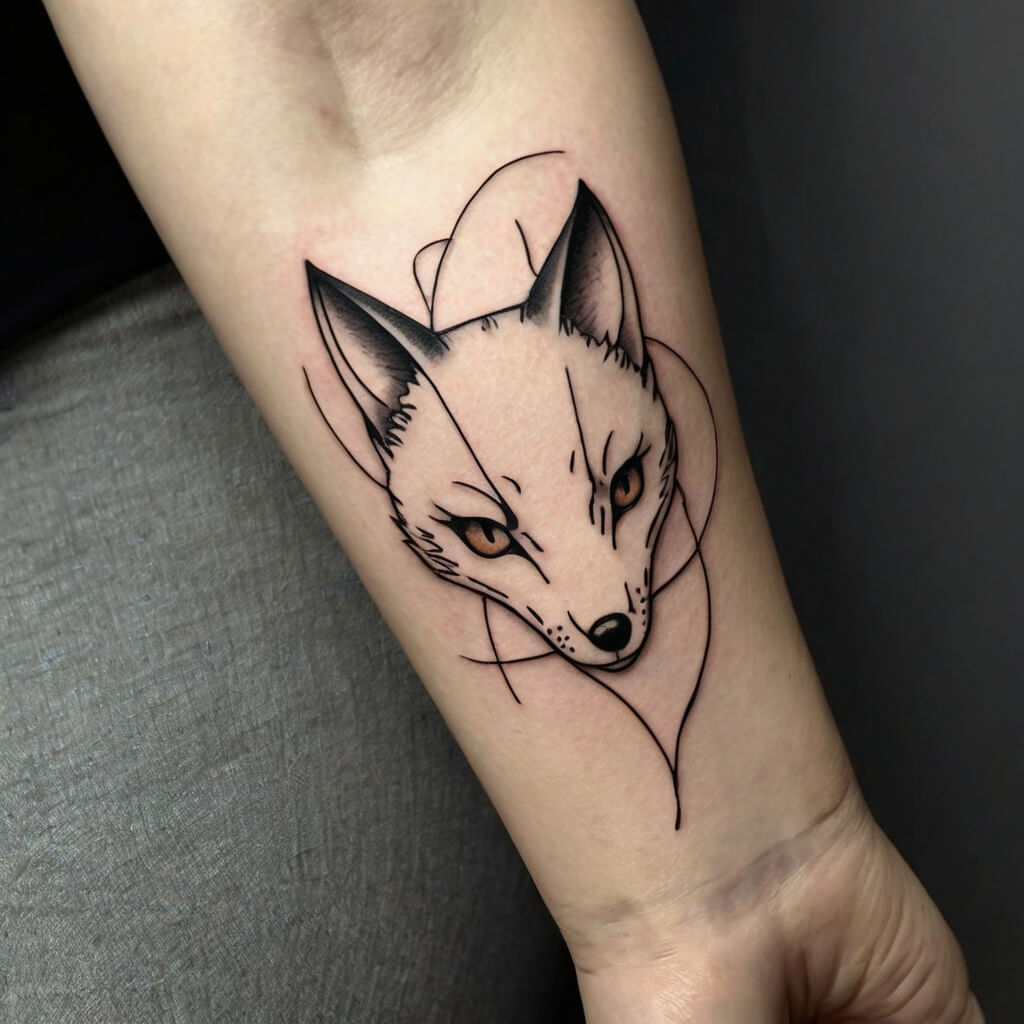
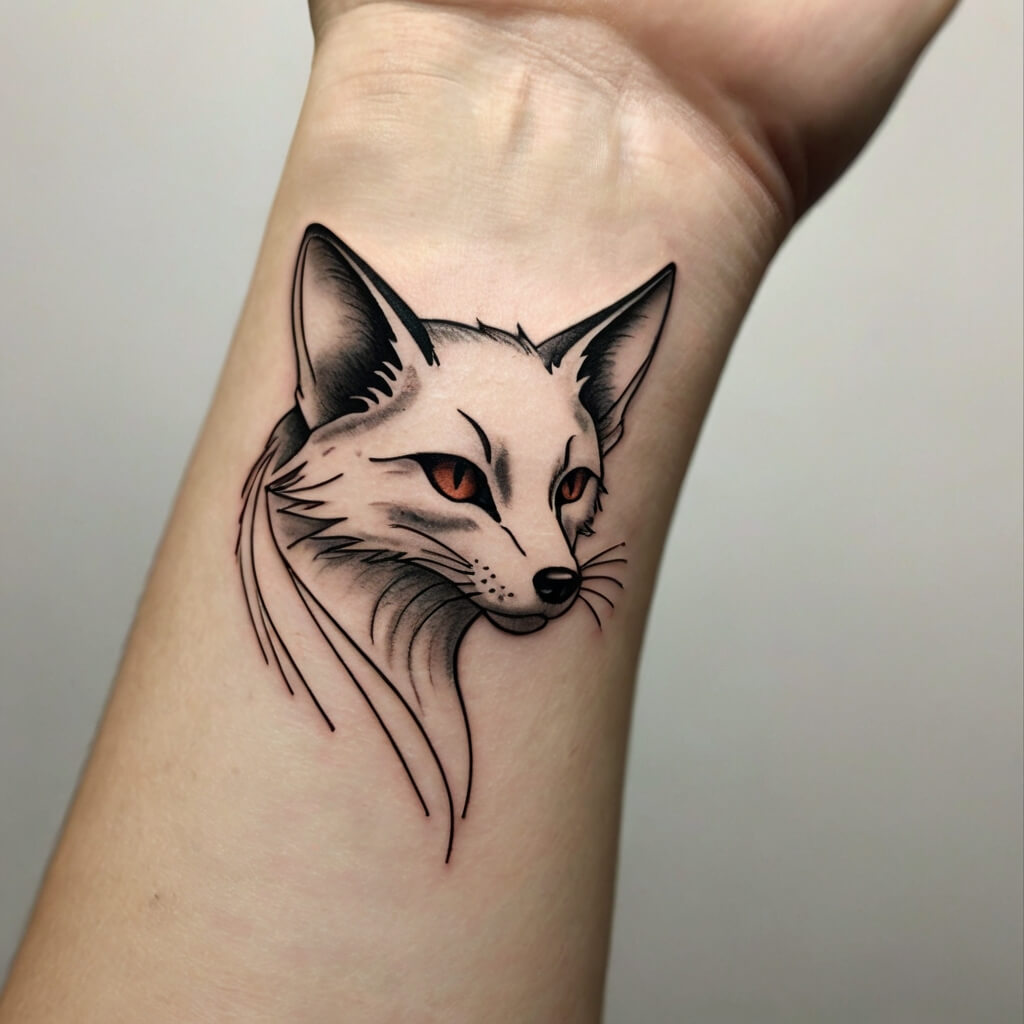
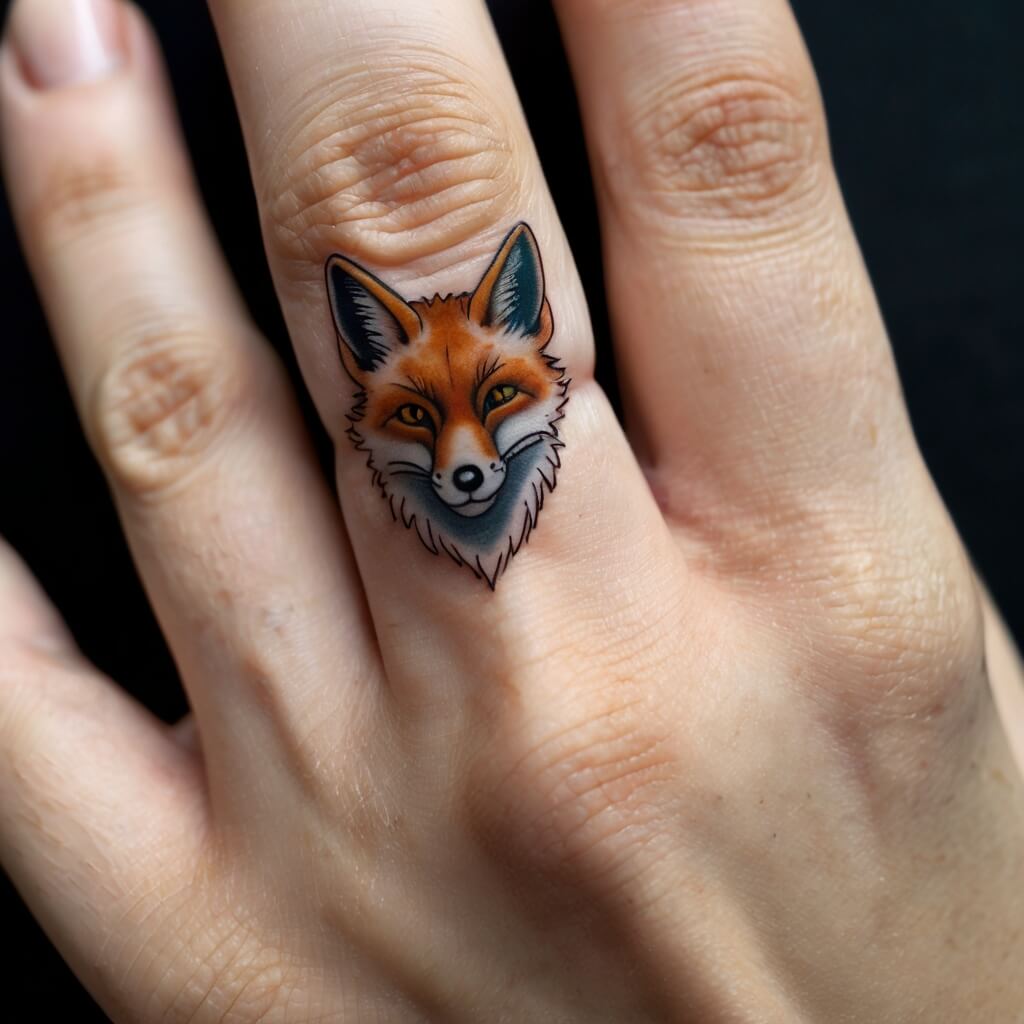
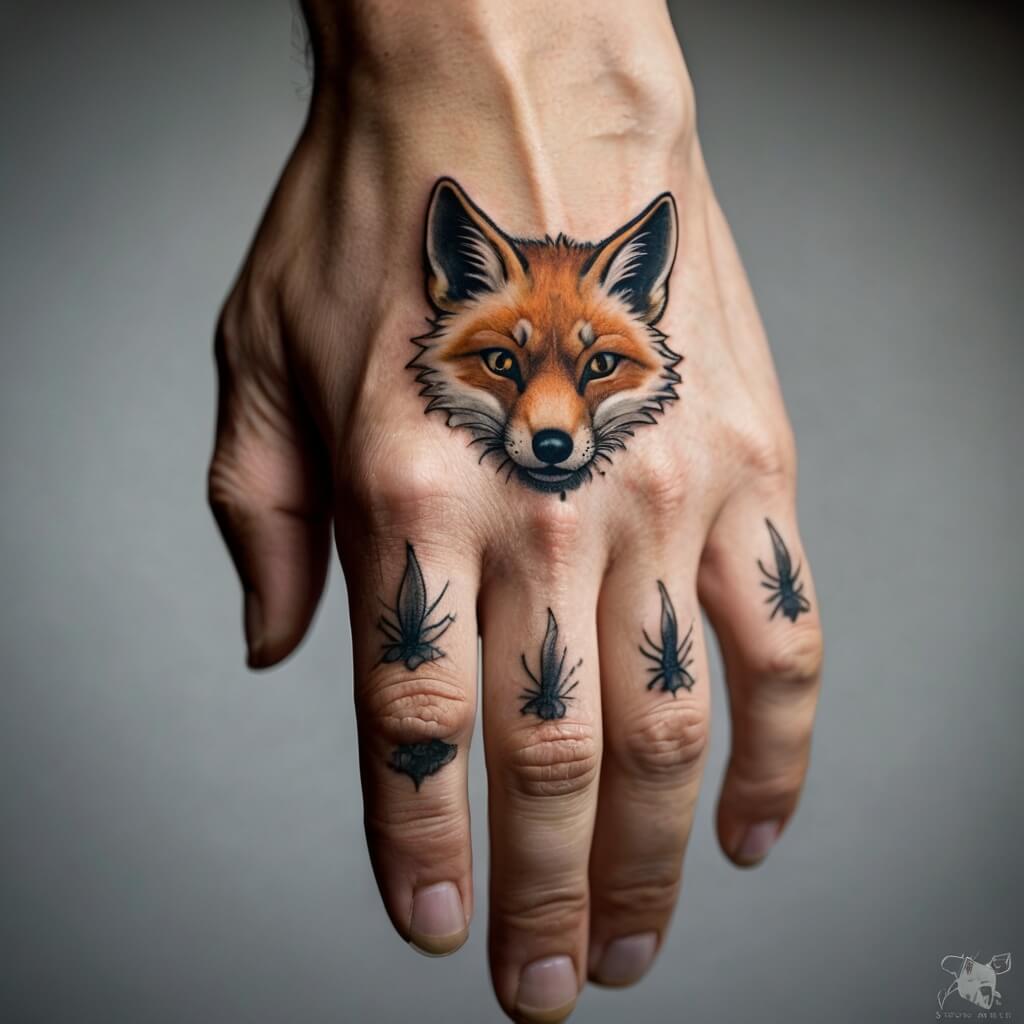

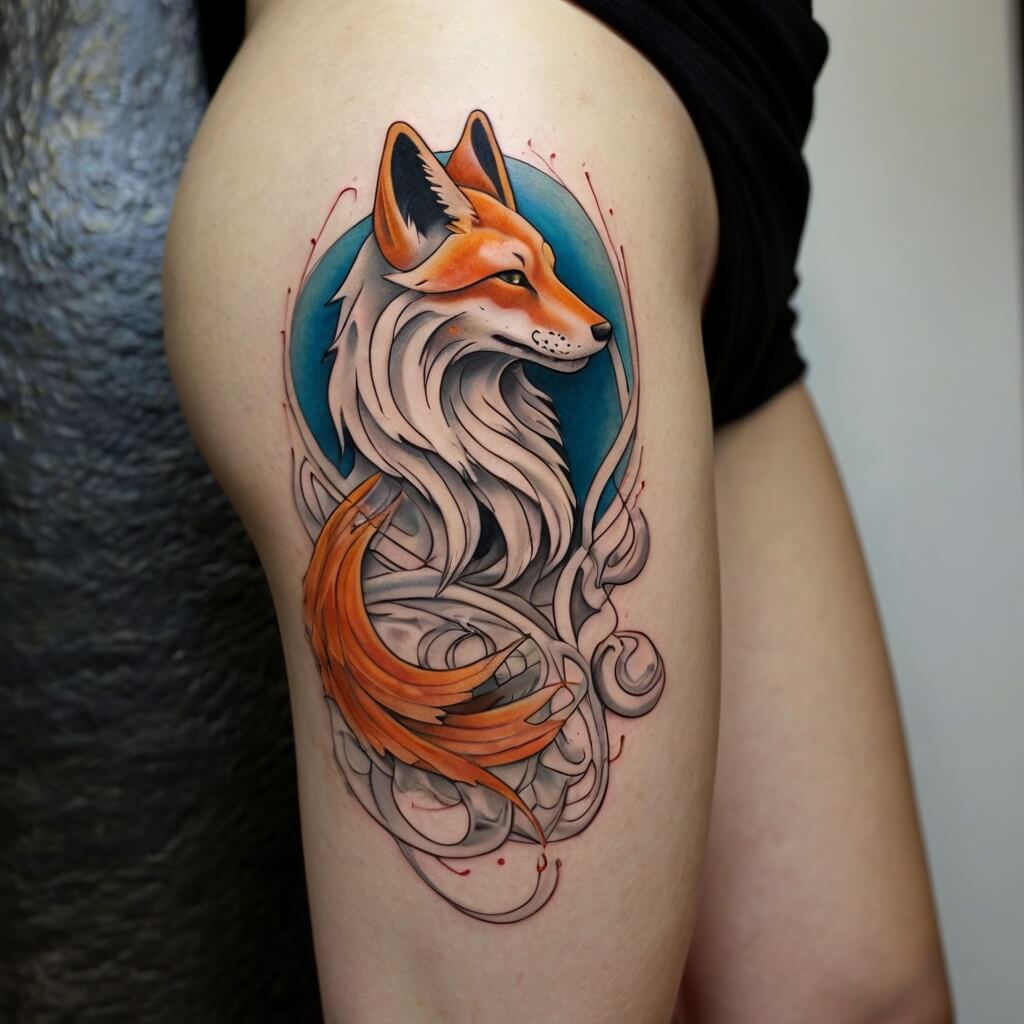
The Alluring Aesthetics of Kitsune Tattoos
Versatility in Design
Kitsune tattoos are popular because you can style them in so many ways, each showing off a different side of their character:
Traditional Style: Inspired by ukiyo-e art, these tattoos feature bold lines and bright colours, often including classic Japanese elements like cherry blossoms or waves.
Modern Interpretations: Some opt for a fresher take, with abstract or minimalist designs that highlight the fox’s eyes or its mask-like face.
Realistic Art: For those who love detail, kitsune tattoos can show off the fine points of the fox’s fur, eyes, and their almost magical quality.
Colour Symbolism
Colour is key in kitsune tattoos, with each shade bringing its own meaning:
White: Stands for purity, protection, and good luck. White kitsune are often linked to Inari and seen as guardians.
Black: Represents mystery, the unknown, and sometimes darker forces. A black kitsune tattoo might show the more mysterious side of the fox.
Red: In Japanese culture, red is a strong colour that means energy, life, and vitality. A red kitsune tattoo captures the fox’s fiery spirit and its power to change.
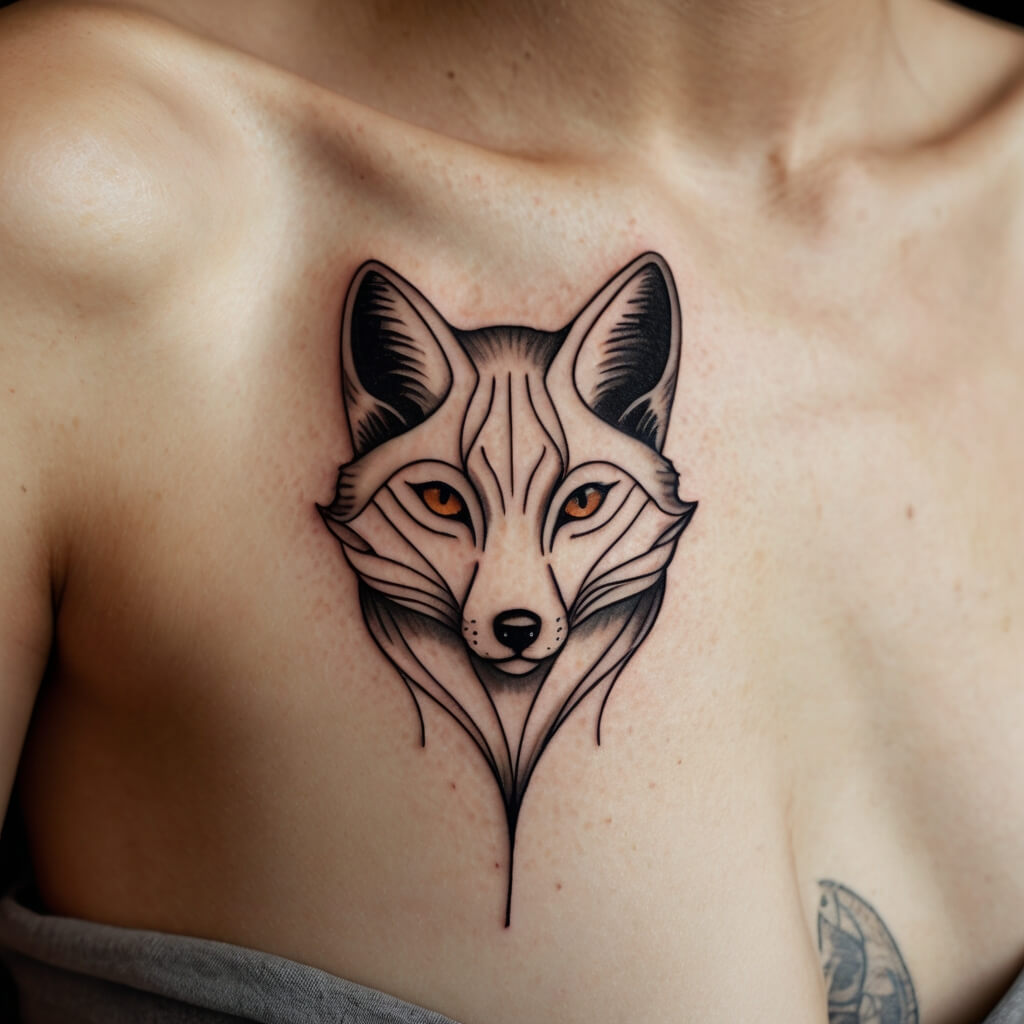
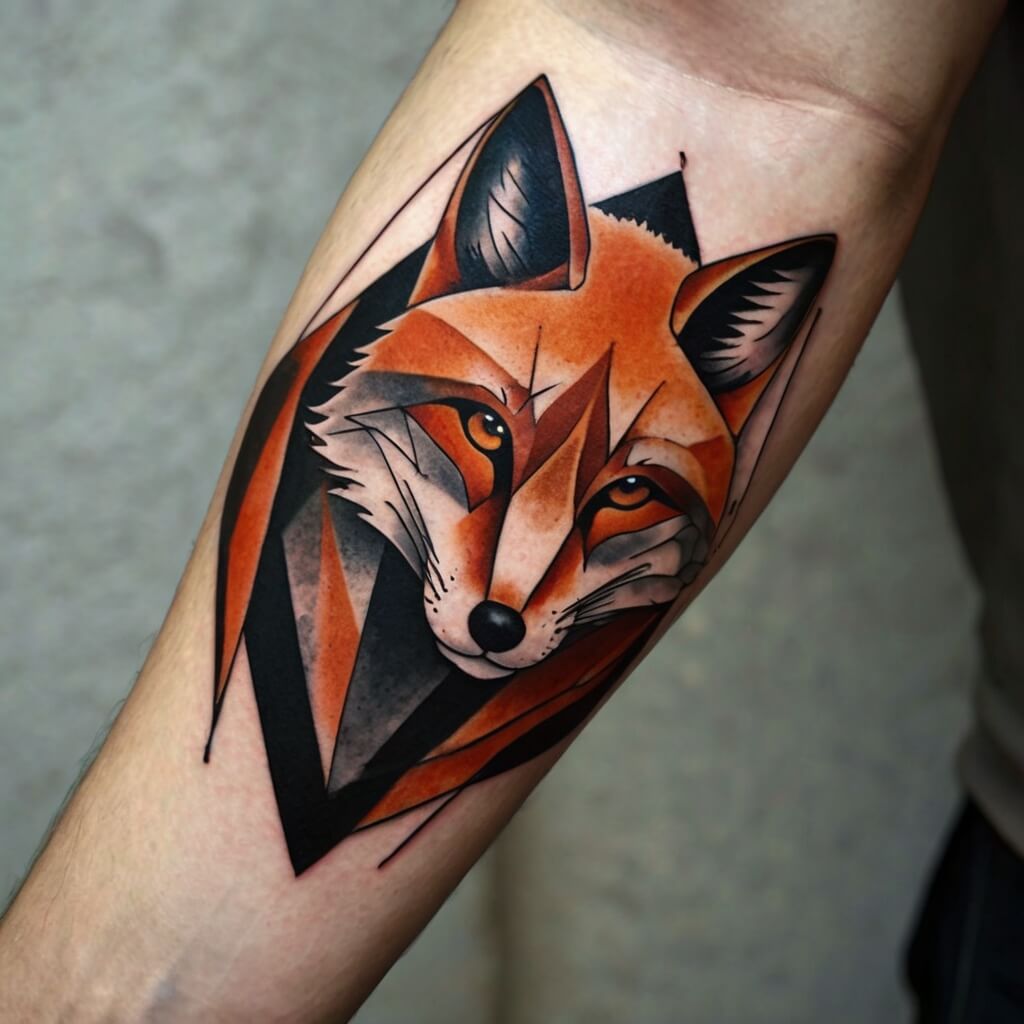
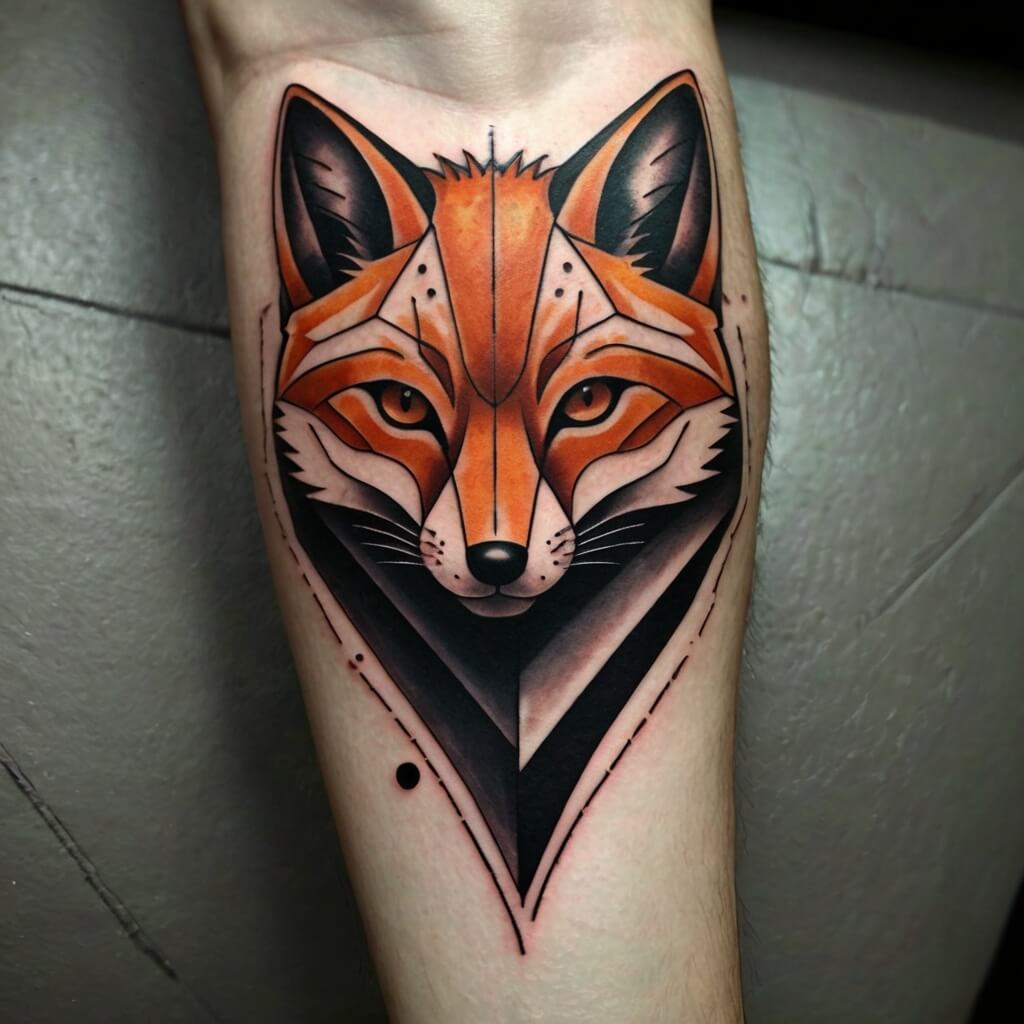
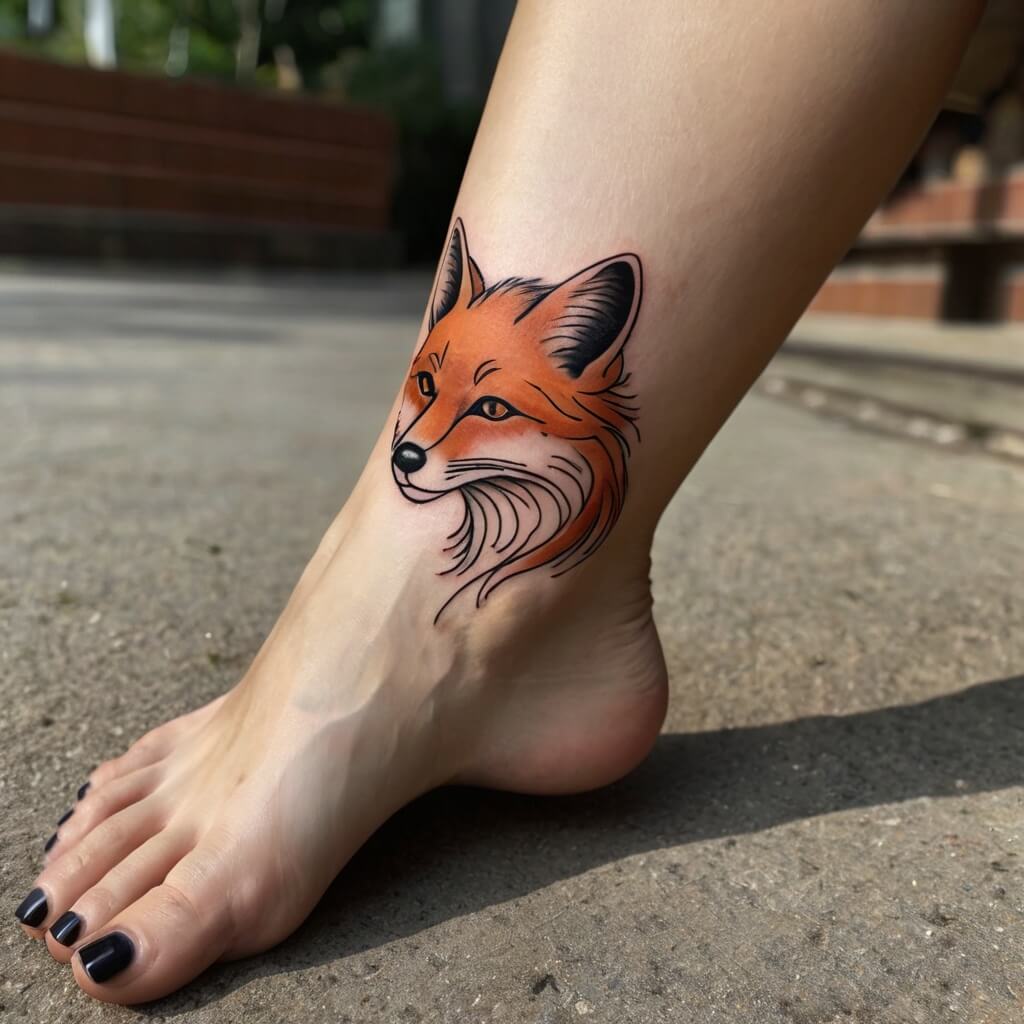
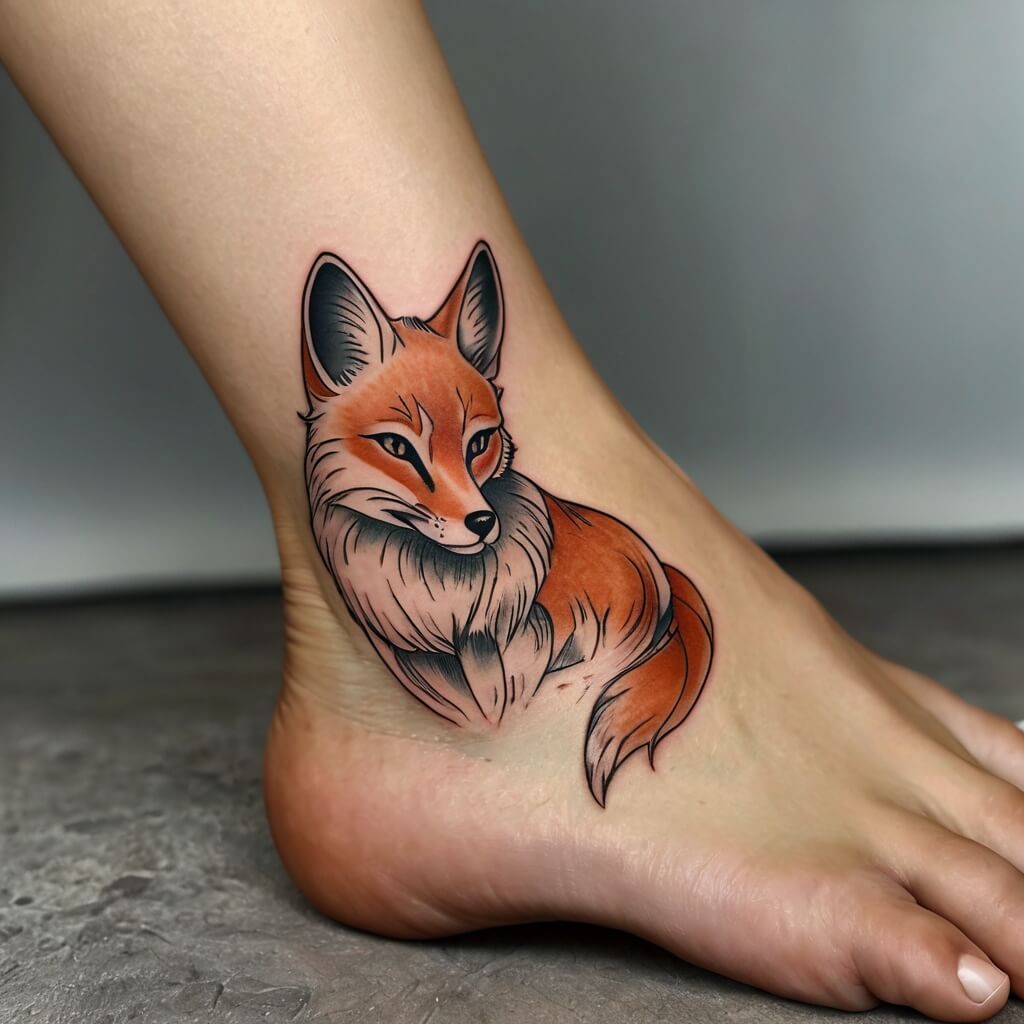
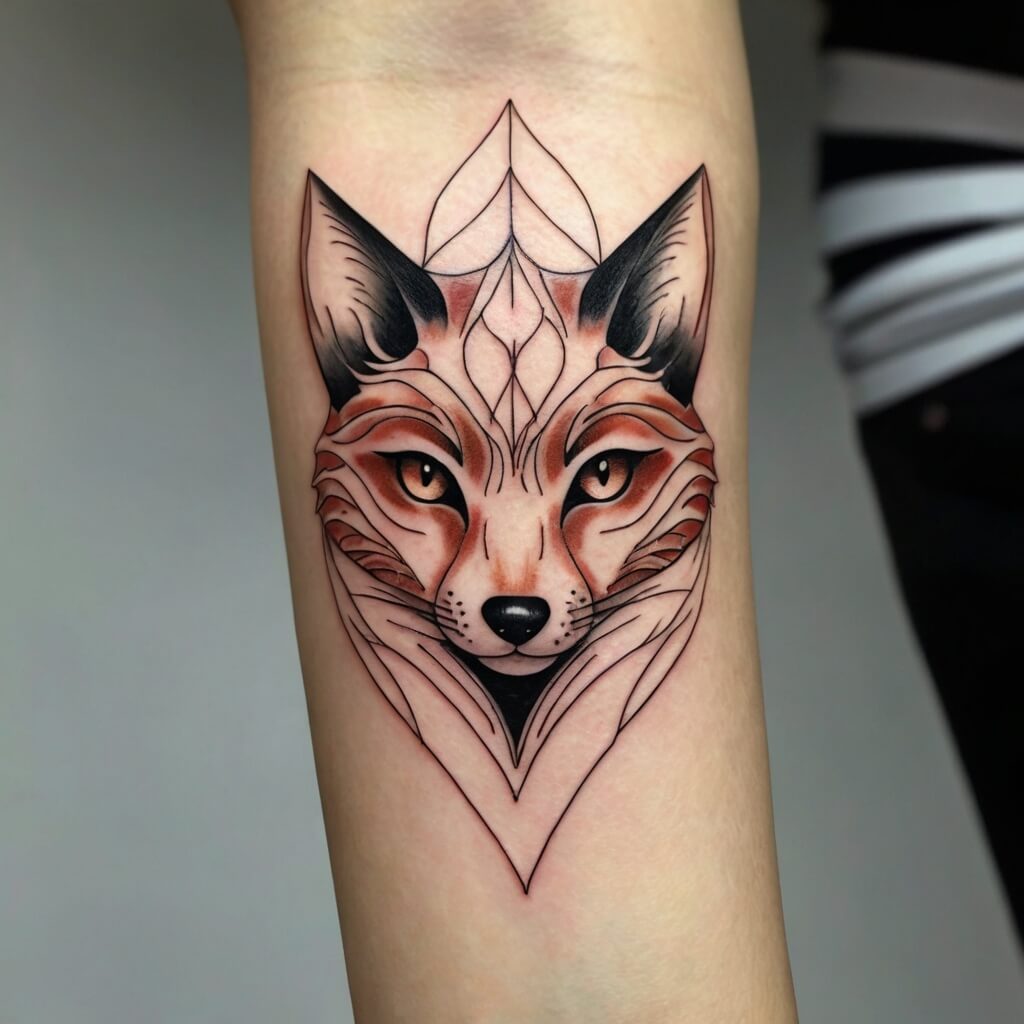
Placement Considerations
Where you place a kitsune tattoo is as important as its design. Here are some favourite spots:
Back: Great for big, detailed designs that tell a story. A full-back tattoo can include extra elements like cherry blossoms, temples, or other mythical figures.
Forearm or Leg: Ideal for long designs, such as a kitsune mid-transformation or running through a mystical scene.
Chest: A chest tattoo stands out. It’s often a bold choice, featuring the kitsune’s face or a dramatic scene.
Incorporating Personal Elements
Many people choose to personalize their kitsune tattoos by incorporating elements that resonate with their own lives. This might include specific flowers, landscapes, or even blending the kitsune with other cultural symbols that hold personal significance.
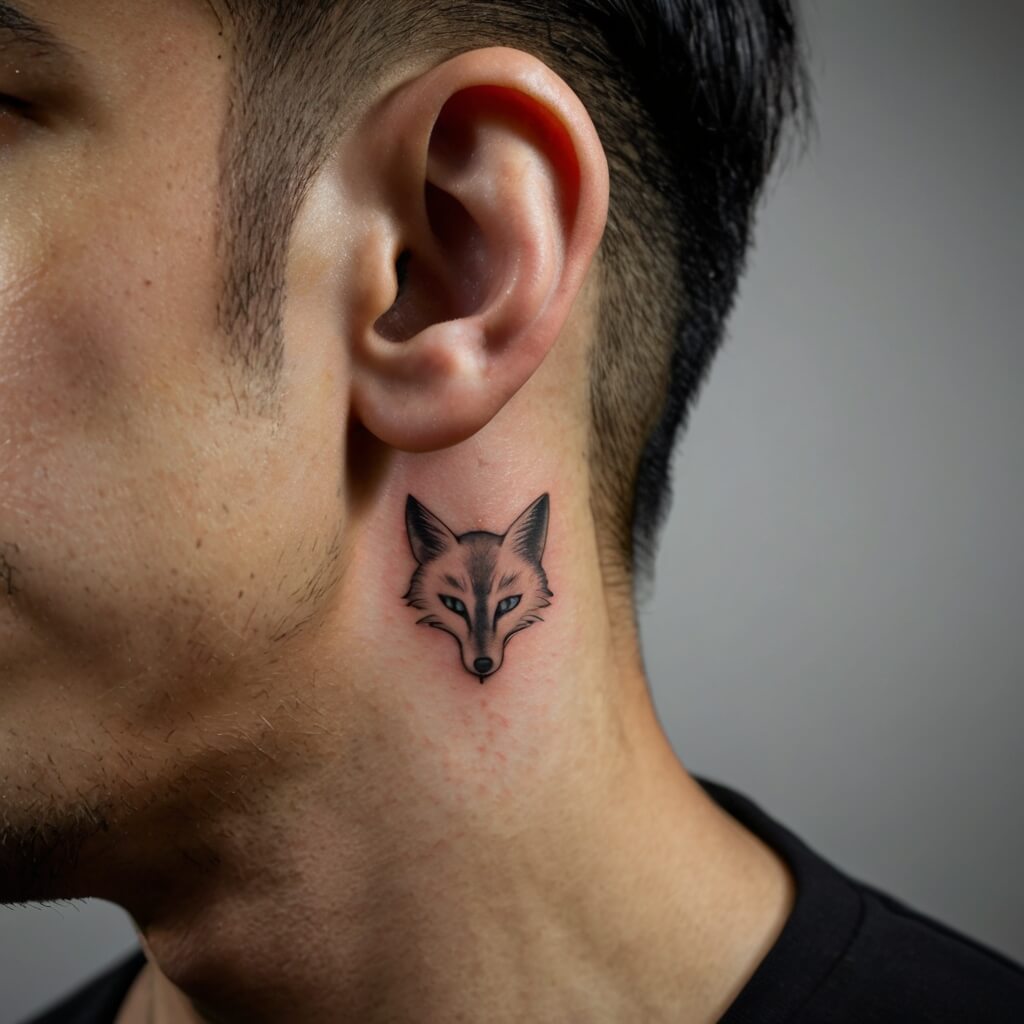
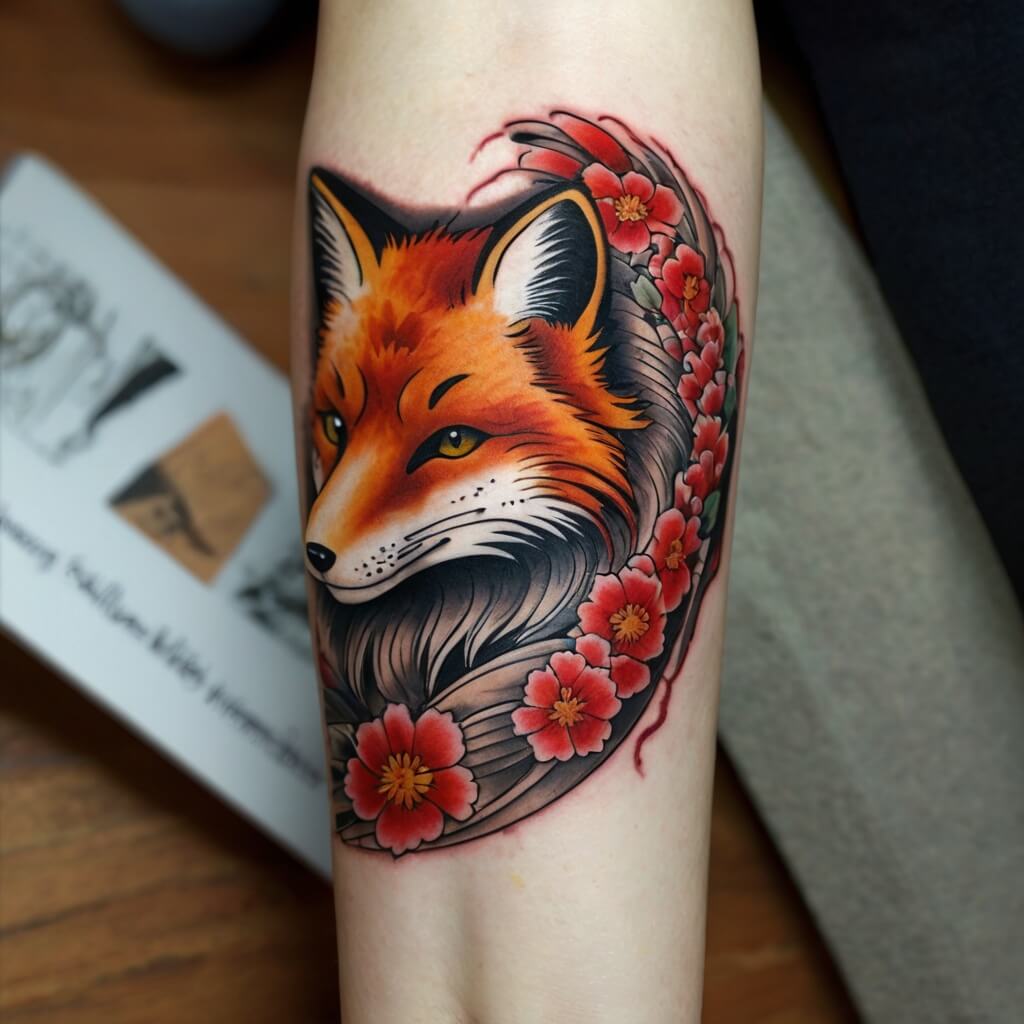

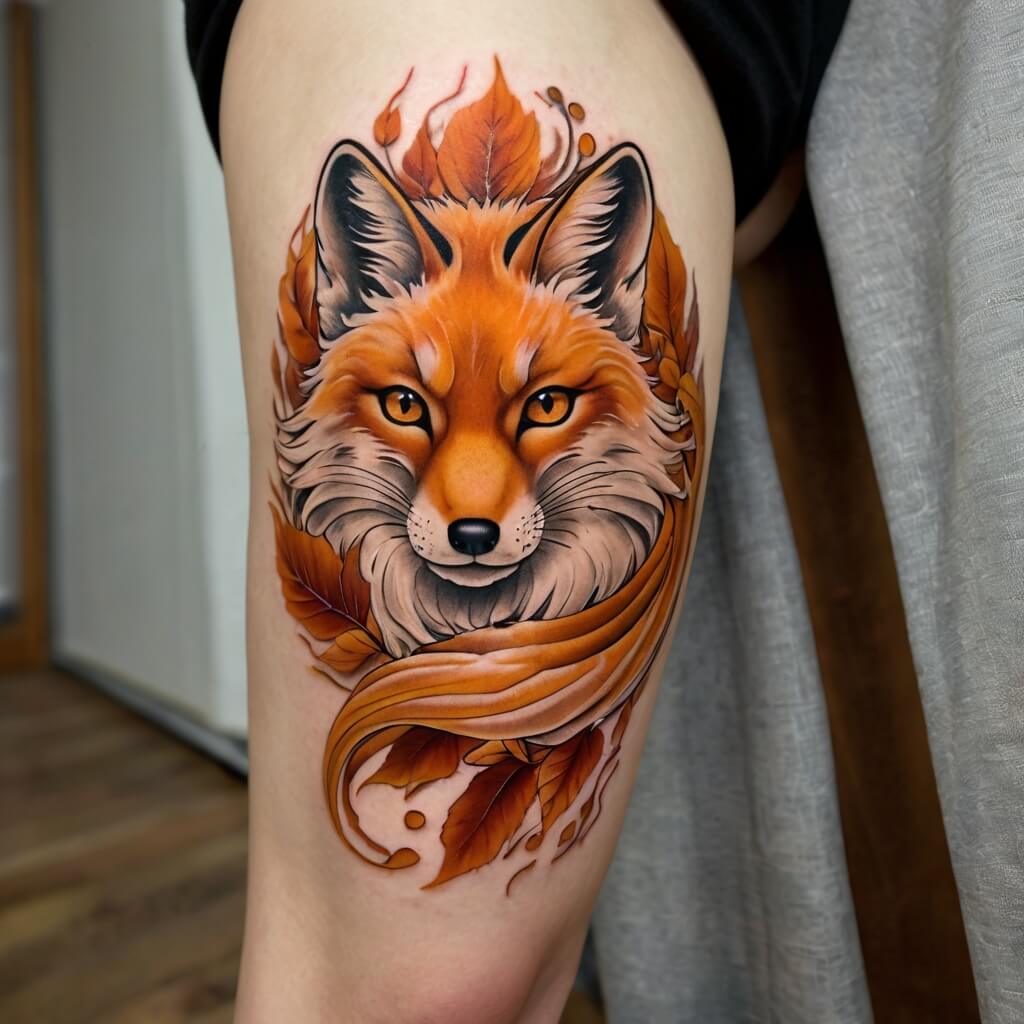
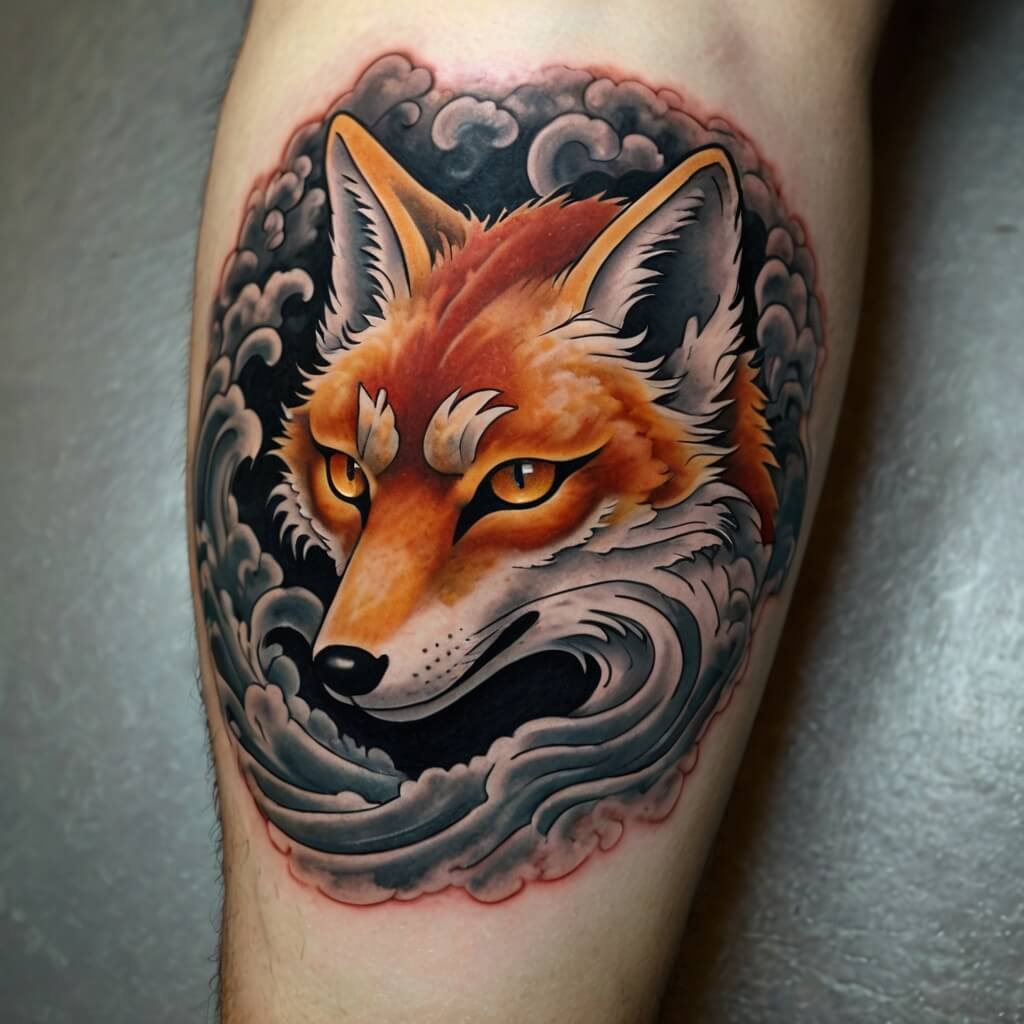
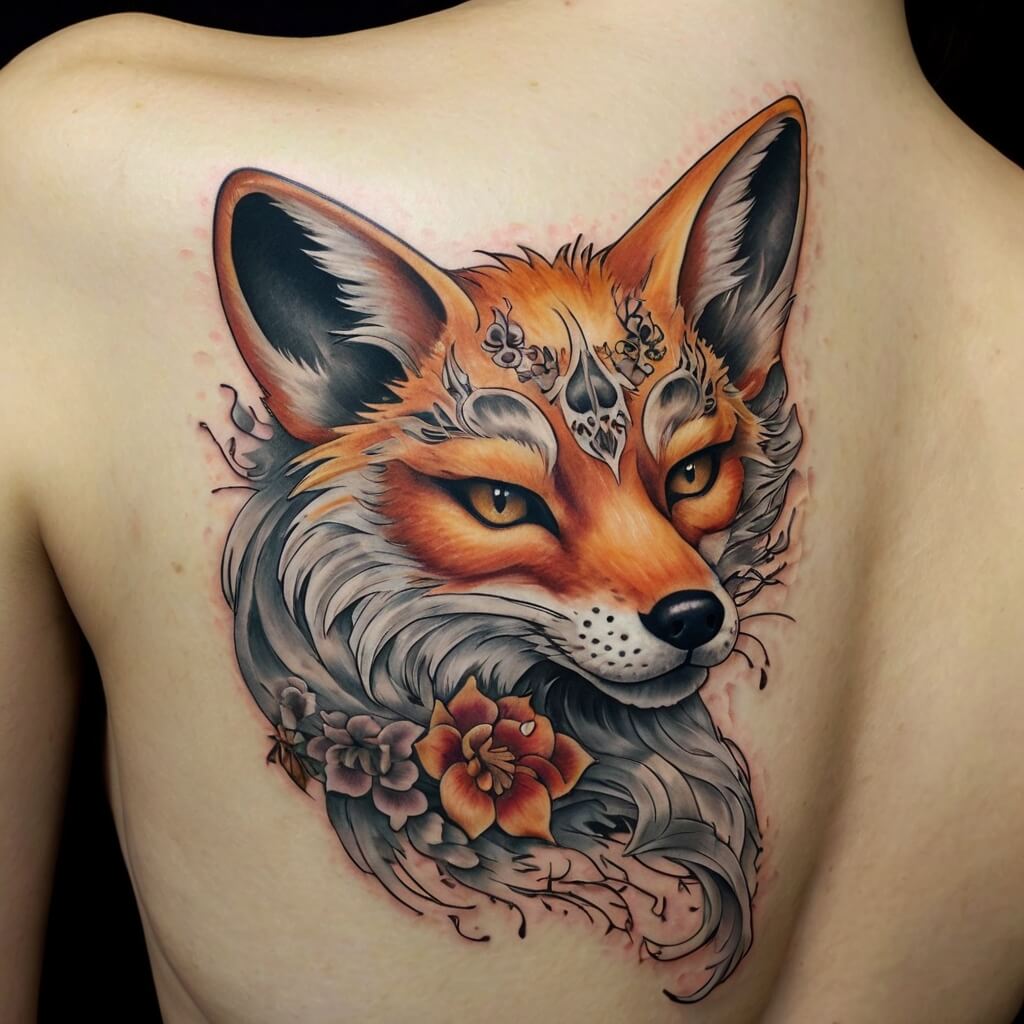
10 Beautiful Kitsune Tattoo Designs
1. Traditional Kitsune with Torii Gate
This tattoo features a nine-tailed kitsune in front of a torii gate, a symbol linking the earthly to the spiritual. Cherry blossoms and clouds add elegance to the scene, making it a rich, detailed piece.
2. Kitsune Mask with Floral Accents
Drawing from Noh theatre, this design showcases a kitsune mask surrounded by peonies or cherry blossoms, perfect for an arm tattoo.
3. Duality Kitsune
This design shows a Zenko and a Yako kitsune facing each other, one in warm colours for protection, and the other in cool tones for mischief. It’s great for a large back or chest tattoo.
4. Geometric Kitsune
A modern approach that uses minimalist lines and abstract shapes to depict the kitsune, ideal for those who love a contemporary look.
5. Kitsune with Lanterns
Here, a kitsune is surrounded by glowing lanterns, symbolizing guidance. The fox’s partially human face adds a mysterious touch.
6. Watercolor Kitsune
In a splash of red, orange, and gold, this watercolour kitsune appears vibrant and dynamic, suitable for a thigh or back placement.
7. Kitsune and Samurai
Combining the kitsune with a samurai, this tattoo symbolizes strength and balance, depicting readiness for battle with a fierce look.
8. Nine-Tailed Kitsune with Moon
An iconic design with the kitsune’s tails swirling under a full moon, adding an air of mystery. Ideal for a large area like the back.
9. Realistic Kitsune Portrait
Focusing on the kitsune’s face, this lifelike portrait captures every detail from the fur to its intense eyes, fitting for an upper arm or calf.
10. Abstract Kitsune with Elements
An abstract kitsune where each tail represents a different natural element like fire, water, or wind, celebrating its connection to nature and transformational abilities.
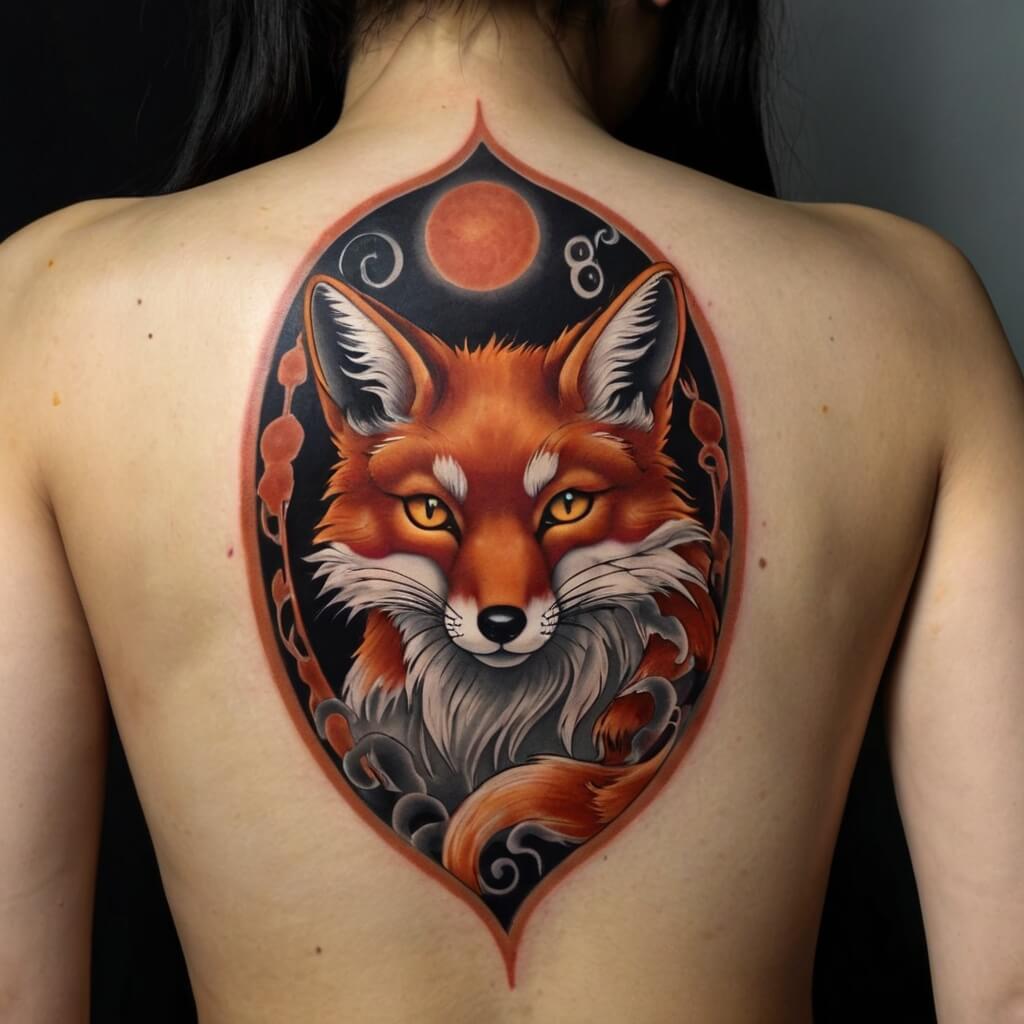
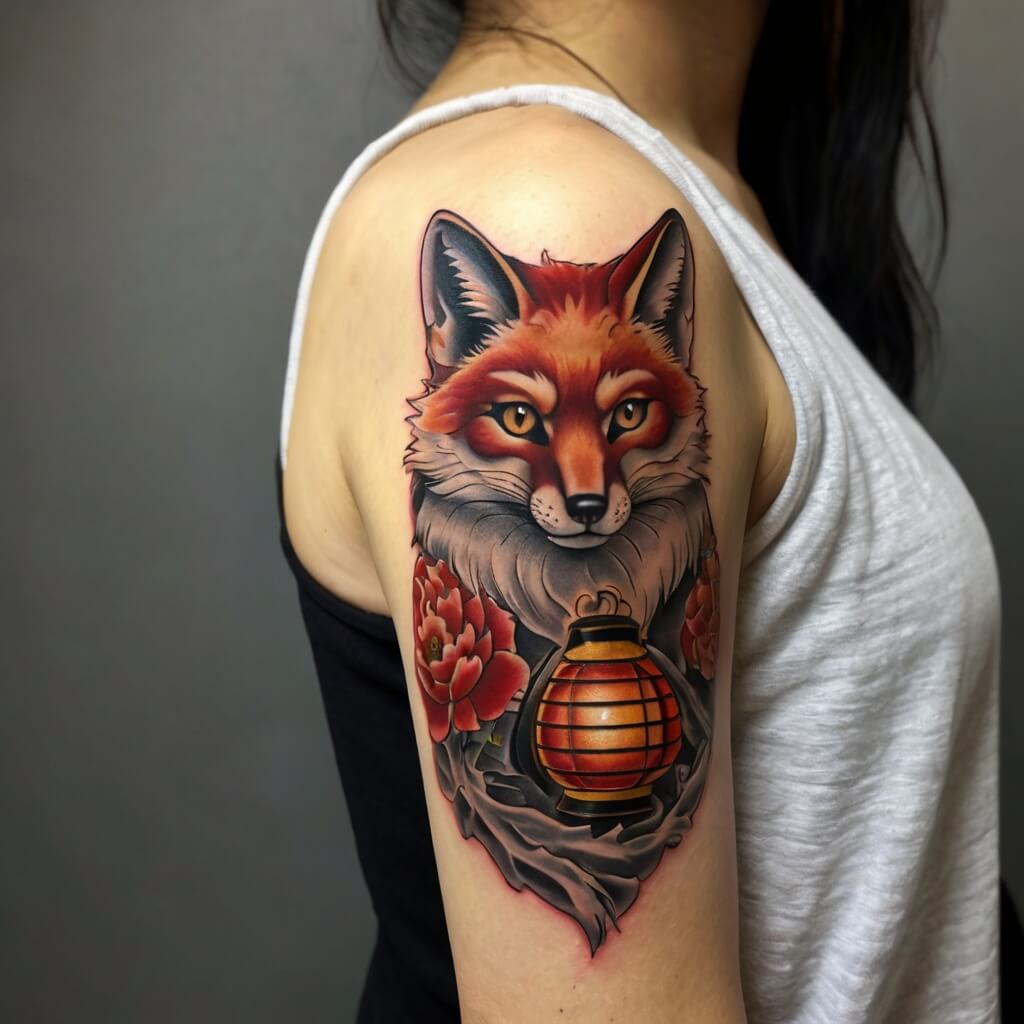
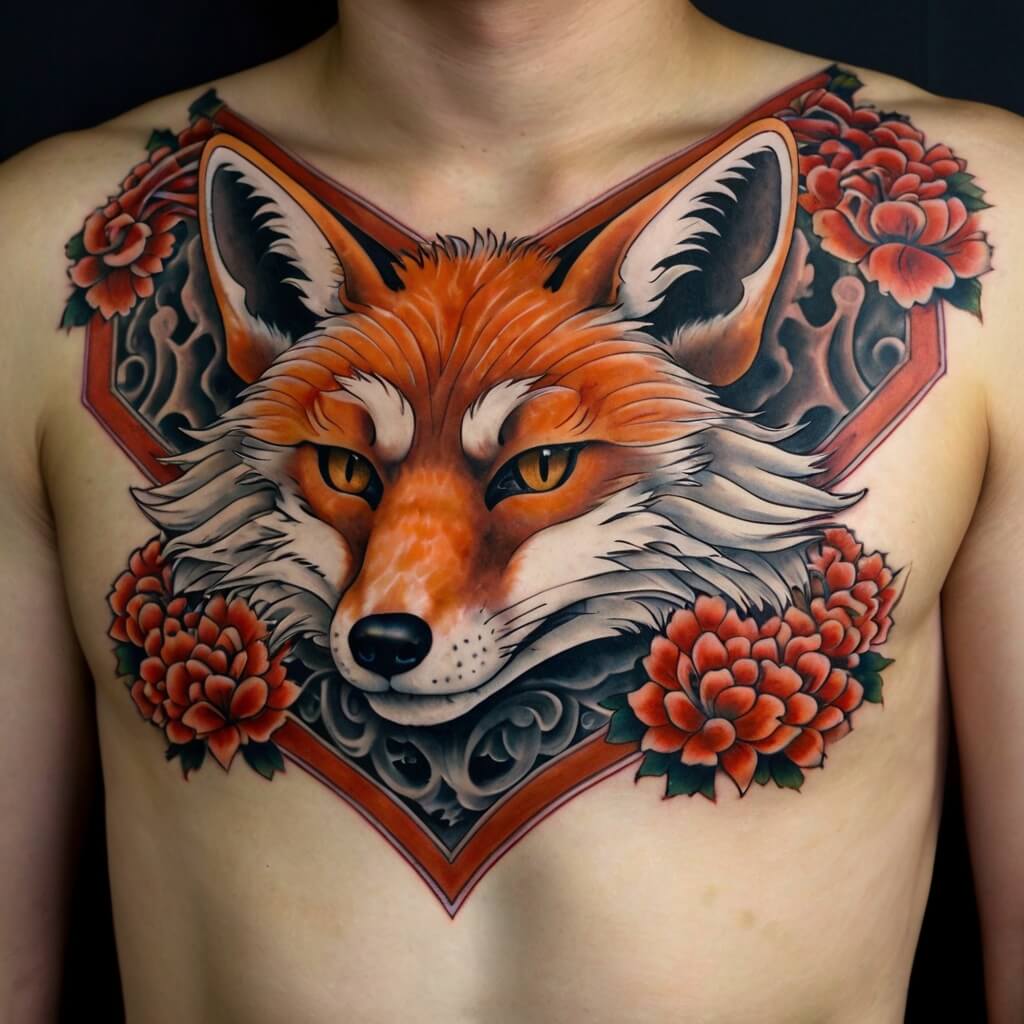
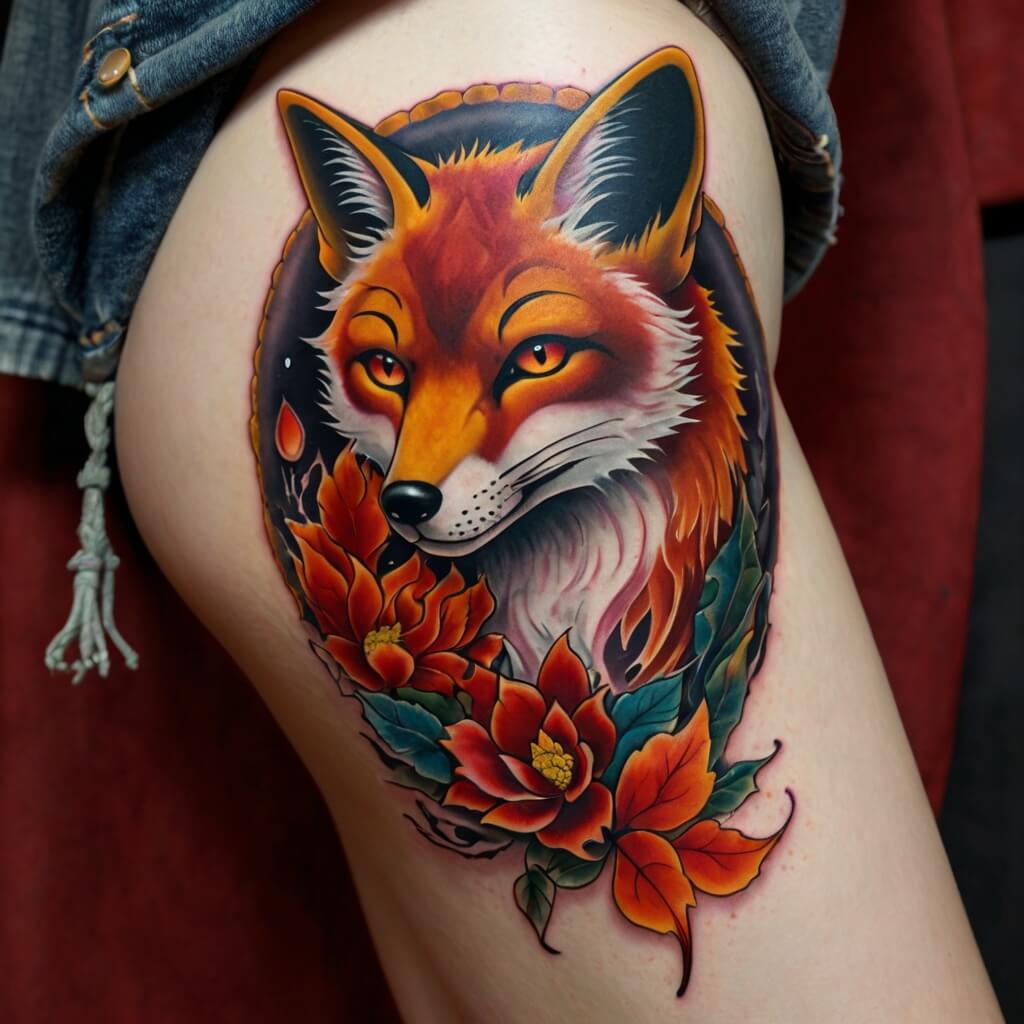
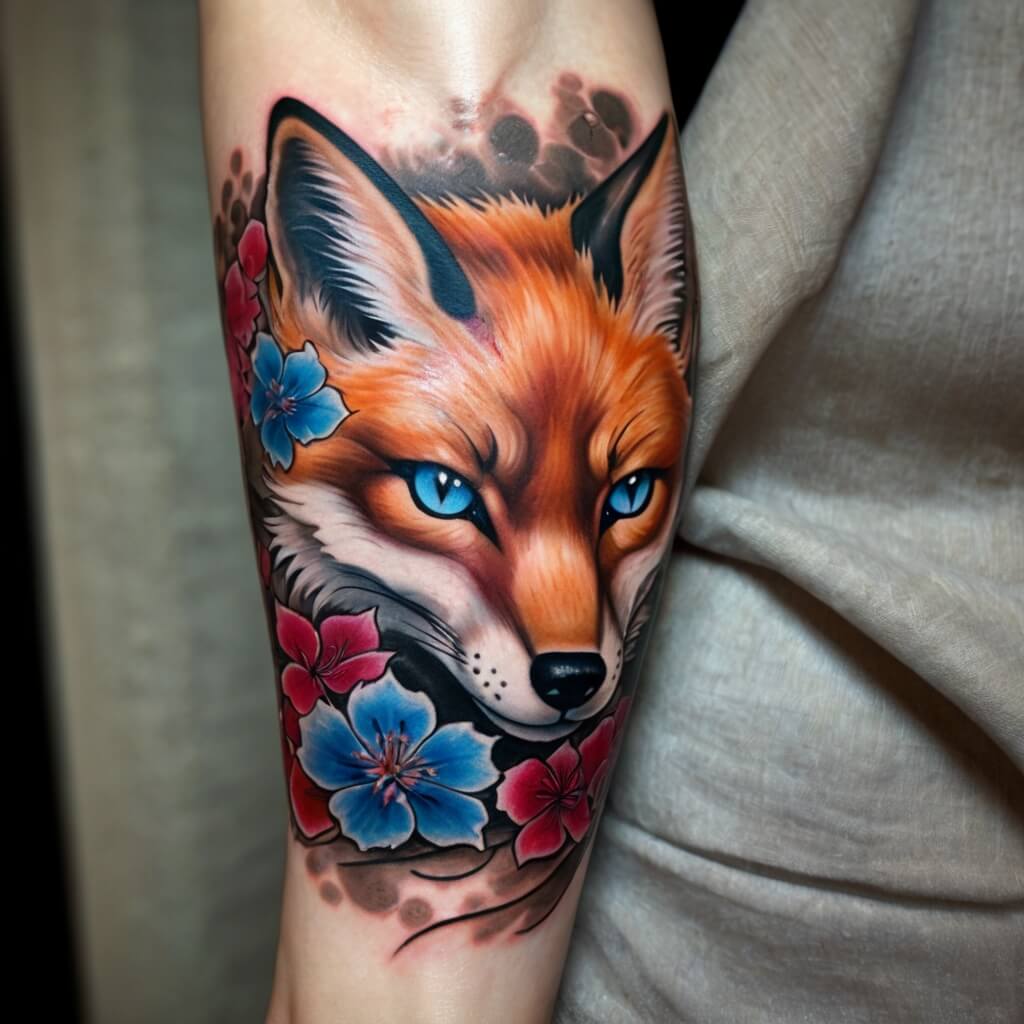
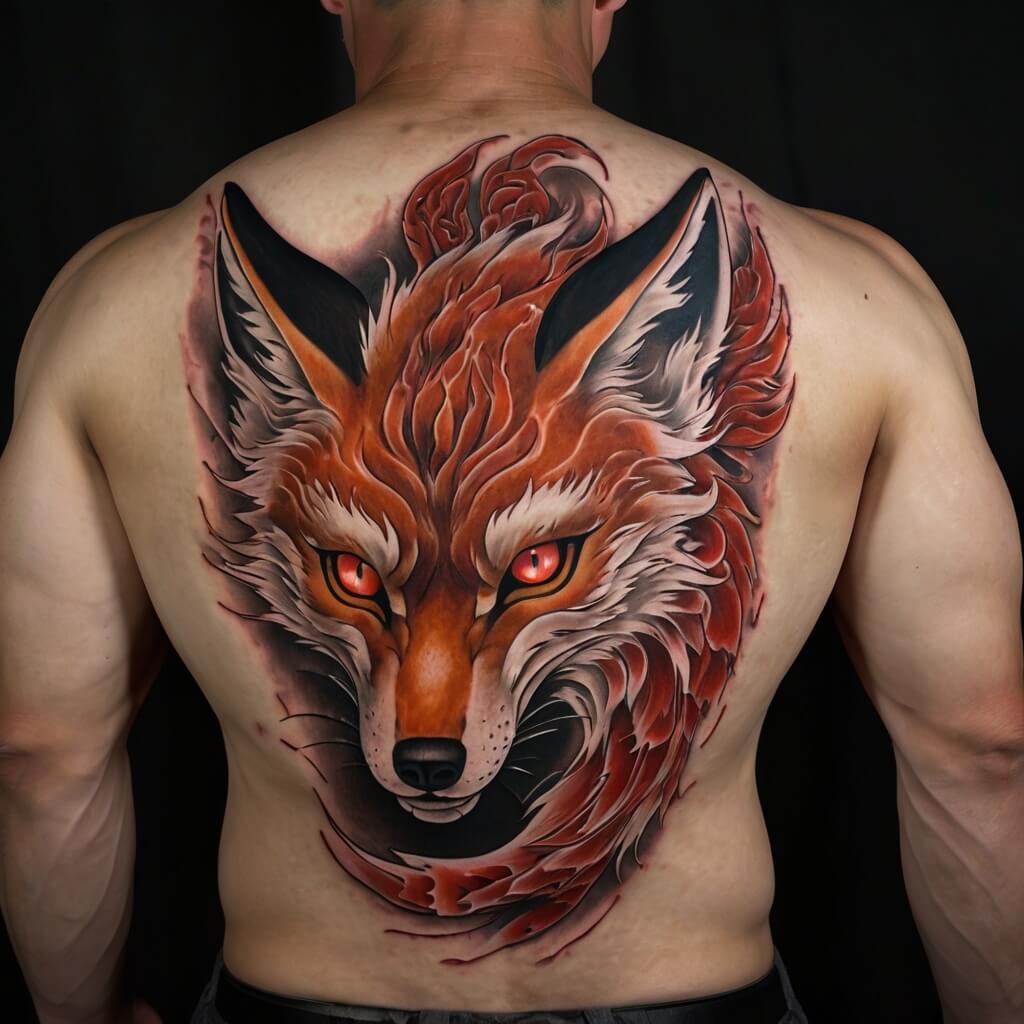
Conclusion
Kitsune tattoos are way more than just pretty designs. They’re packed with symbolism, steeped in history, and rich in cultural significance. Are you drawn to the kitsune’s mysterious vibe, its symbol of transformation, or the way it balances light and dark? That deep connection you feel to this mystical fox is no accident. But remember, it’s really important to approach these tattoos with respect and a solid understanding of their cultural roots.

